NORTH SAILS BLOG
Todo
Events
Guides
News
People
Podcast
Sustainability
Tech & Innovation
Travel & Adventure
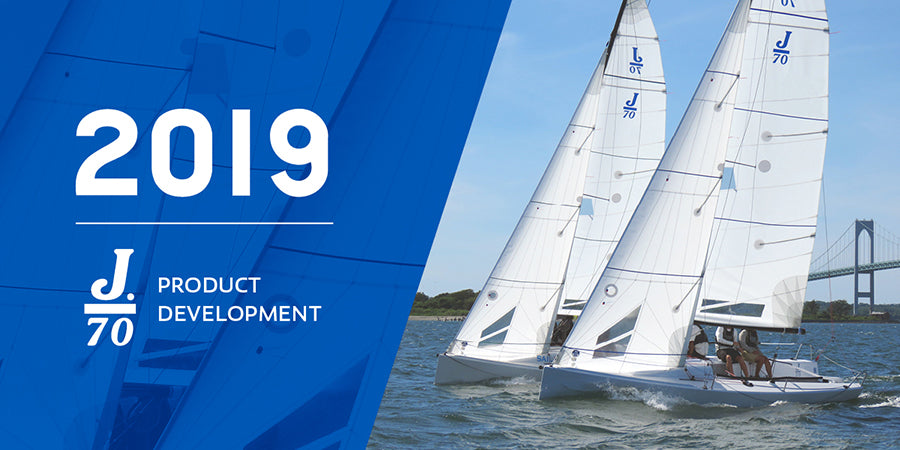
NUEVA MAYOR PARA LOS J70
Desarrollada específicamente para palos Selden o Southern Spars, ofrece un diseño más plano y equilibrado para adaptarse a la flexión del palo en todas las condiciones.
READ MORE
READ MORE
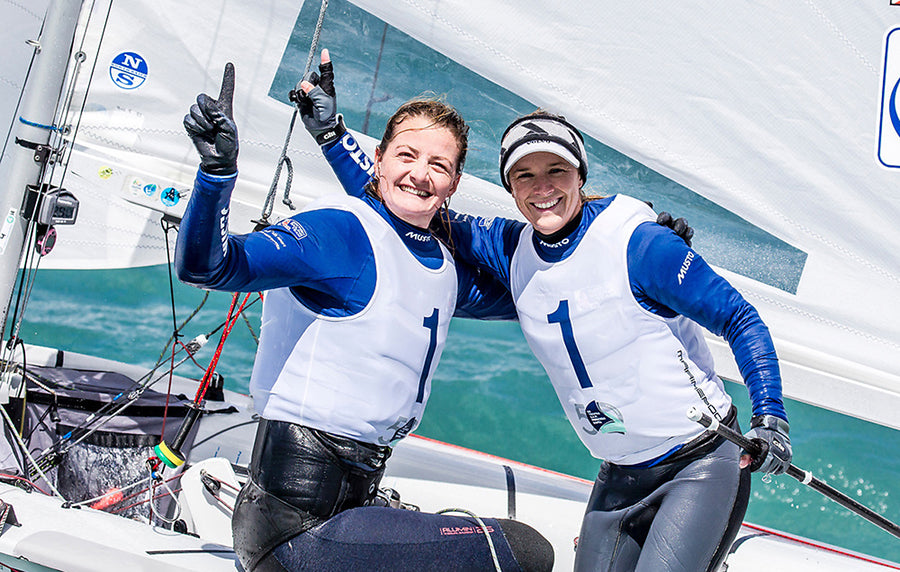
ÉXITO EN EL PRINCESA SOFÍA
ÉXITO EN EL PRINCESA SOFÍA
El Trofeo S.A.R. Princesa Sofía celebró sus bodas de oro con excelentes noticias para los clientes North Sails.
📸 Sailing Energy / Trofeo Sofía Iberostar
El podio de clase 470 femenino estuvo copado por nuestras velas, con victoria absoluta del combinado británico (Hannah Mills y Eilidh McIntyre). En 470 masculino, North Sails propulsó a los dos primeros clasificados: el campeón sueco (Anton Dahlberg y Fredrik Bergström) y el subcampeón español (Jordi Xammar y Nicolás Rodríguez). Podio completo también para la marca en clase Finn, con victoria final del neozelandés Andrew Maloney. Desde North Sails España felicitamos a los ganadores y agradecemos su confianza a todos nuestros clientes.
READ MORE
READ MORE
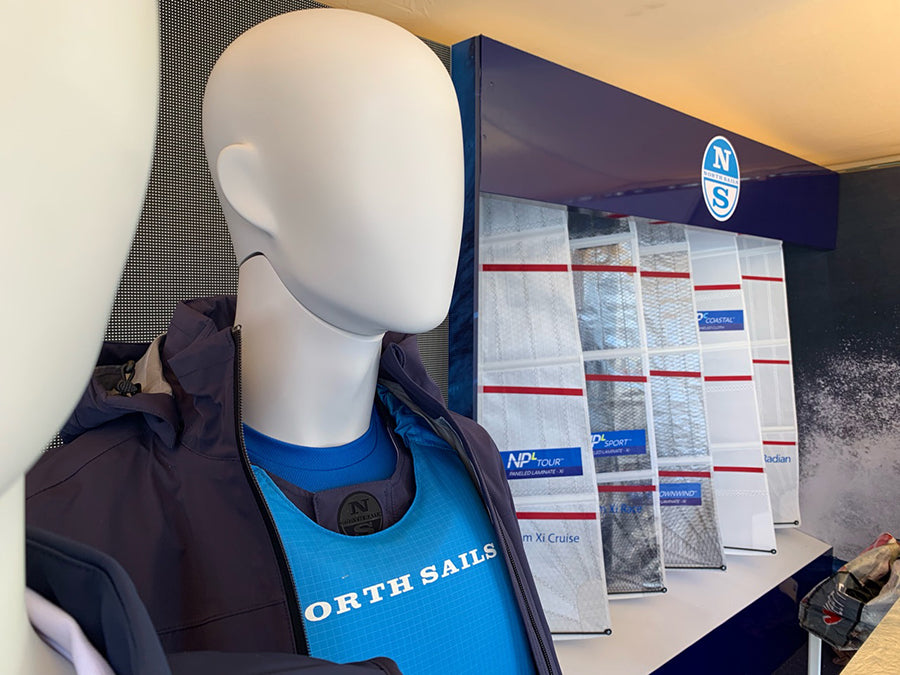
NUEVA 3Di OCEAN EN SALON NAUTICO DE PALMA
NUEVA 3Di OCEAN, NOVEDAD NORTH SAILS EN EL SALÓN NÁUTICO DE PALMA
North Sails repitió presencia en Palma International Boat Show desplegando su extensa gama de productos, en la que destacaba como novedad absoluta la nueva 3Di Ocean, lo último en velas para superyates de crucero oceánico.
Palma International Boat Show supone una cita ineludible para el sector náutico, tanto por su posición estratégica en el corazón del Mediterráneo como por las fechas de su celebración (27 de abril a 1 de mayo), justo antes del comienzo de la temporada de grandes regatas del Mediterráneo. En su 36ª edición, Palma Superyacht Show, su zona temática para superyates, acogió la mayor reunión de Europa de veleros con esloras superiores a los 24 metros, un nicho dominado por North Sails y en el que sus dos velerías de Mallorca componen el mayor centro de servicio especializado del mundo.
Luis Martínez Doreste, director comercial de North Sails España explica:
"El salón náutico de Palma es un evento de referencia para nosotros. Se celebra a escasos kilómetros de nuestras dos velerías especializadas en superyates (Palma y Llucmajor), por lo que supone una ocasión excepcional para encontrarnos con nuestros clientes y realizar nuevos contactos prácticamente sin salir de casa."
La vela ideal para crucero oceánico
La gran novedad North Sails en el 36th Palma International Boat Show fue la nueva 3Di Ocean,
"Un producto ideal para armadores de cruceros oceánicos de gran eslora que valoran especialmente el compromiso entre durabilidad y prestaciones", explica Martínez Doreste.
Su composición con alto contenido de UltraPE proporciona un equilibrio inédito entre durabilidad y facilidad de uso al reducir volumen, peso y rigidez al tiempo que conserva los mejores niveles de dureza y fiabilidad asociados a la tecnología 3Di. Disponible en una gama de tres colores, llega al dossier North Sails para completar la familia 3Di junto a las ya conocidas RAW, ENDURANCE, NORDAC y DOWNWIND.
Pero en el Salón de Palma no todo fueron grandes esloras. Marc Patiño, responsable comercial de North Sails en Mallorca, recuerda que los superyates suponen un segmento clave para la firma, pero no la única razón de su presencia en el salón.
"Aunque nuestro principal mercado en la isla es el de los superyates, prestamos servicio de velería a todo tipo de embarcaciones. Por el salón de Palma pasa todo el sector, así que sin duda es una cita ineludible para nosotros."
Para más información sobre North Sails, visita https://www.northsails.com o contacta con nosotros en info@es.northsails.com
READ MORE
READ MORE
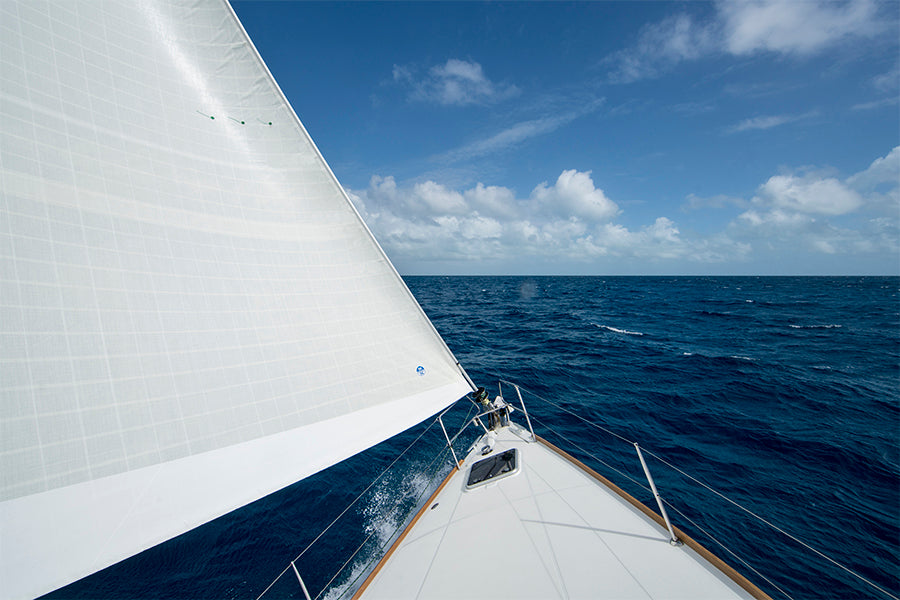
FREMTIDENS TURSEJL
FREMTIDENS TURSEJL
3Di NORDAC tursejl skal holde den vigtige vingeform i mange år. Det er hvad der forventes i forhold til almindeluge vævede dacron-sejl, som på få år bliver for dybe, hvilket resulterer i mere krængning og lavere fart.
minbaad.dk tester i Caribien
3Di NORDAC-sejlet er utroligt strækstabilt og let at trimme. Det viste en fem timers test på en Beneteau 45, som vi sejlede ved British Virgin Island, imellem fem og ni meter pr. sekund. Hele sejladsen foregik på kryds. Bølgerne var krappe, og den friske vind gjorde, at vi måtte rebe det hvide storsejl med gennemgående sejlpinde. Sejlet var let at rebe, selv om dugen er noget mere hård end en traditionel dacron-dug. Det første, man lægger mærke til, er, at 3Di-dugen har et specielt udseende, som ikke ses lignende hos andre sejlfabrikanter. Det ser karakteristisk ud og er North Sails 3Di-signatur.
Stærkt og fladt 3DiNORDAC-dugen er stærk og sejlet er dejligt fladt, men stadig med power i. Det gav sig ikke en tomme undervejs, selv ikke når større pust ramte os. En regnskylle kom også ind over os, da vi krydsede i British Virgin Island fra Tortola mod Gorda i 25 graders varme. Regnen perlede straks af sejlet. Faktisk er det umuligt for fugt at trænge ind i North Sails 3Di NORDAC-sejlet, da sejlet i polyester er mættet med lim og samtidig ikke er lamineret med film og taffeta. Det erfarede vi få uger før sejlturen, da vi besøgte fabrikken i Minden i USA. Her så vi, at 3Di-sejlene lå til hærdning i syv dage under den 22 dage lange proces, hvor sejlene bliver produceret. 108 procents fokken stod også, som den skulle, tilpas flad, men med power i. Sejlet gav sig ikke. 3Di er et komposit, hvor der anvendes mere avanceret lim og ingen mylarfilm, som det ellers ses hos de fleste sejlproducenter. Det betyder med andre ord, at 3Di NORDAC-sejlene kun anvender udspredt filament-tape, hvilket så udgør hele sejlet. Et 3Di-sejl kan derfor ikke delaminere.
Enkel at trimme og mindre krængning Jesper Feldt, sælger og daglig leder af North Sails Danmark, tror på, at 3Di-sejlet kan blive det foretrukne sejl for fremtidens tursejlere i Danmark og fortæller om den positive feedback fra kunderne på 3Di NORDAC-sejlet:
"3Di NORDAC er meget enkelt at trimme og holder formen længere end de hidtidige vævede dacron-sejl. Med den rigtige facon får du mere ud af sejlet og kan enkelt balancere din båd og kontrollere krængningen. Hele North Sails’ dna er, at sejlerne skal kunne sejle stærkere og mere sikkert, og sjovt nok er hurtige sejl enkle at trimme og holder faconen."
"Vi har alene i Danmark solgt over 250 3Di NORDAC-sejl det første år, så det ser ud til at blive tursejlernes foretrukne sejl. Danskerne vælger nu et sejl, der er bygget med den nyeste teknologi og som holder i mange år. De fleste tursejl, der i dag produceres med polyester, begynder at miste deres facon efter to-tre år, hvor 3Di NORDAC holder faconen år efter år."
Mere værdi for pengene Leveringstiden for det nye 3Di NORDAC ligger på mellem fem til otte uger. North Sails’ CEO Dan Neri, der holder til på hovedkontoret i New Port, Rhode Island i USA, var med om bord til testen i Caribien. Han fortæller, at North Sails nu satser stort på 3Di NORDAC til tursejlermarkedet. Vi tror på, at 3Di NORDAC vil dominere fremtidens tursejl, fordi det er et sejl, hvor man får stor værdi for pengene. I dag er vi verdens største producent af tursejl med 4.500 solgte tursejl årligt ud af de 33.000 sejl, vi sælger årligt (10.000 one design-sejl, red.), forklarer Dan Neri fra North Sails. Firmaet blev startet i 1957 af Lowell North i San Diego, USA, og har i dag 1.500 ansatte, fordelt på 150 sejllofter i 29 lande. Heraf arbejder de 15 i Danmark. North Sails har udviklet 3Di NORDAC gennem længere tid på 3Di-fabrikken i Nevadaørkenen i Minden, hvorefter man har ladet 45 kunder teste sejlene i over et år under alle vind- og vejrforhold.
North Sails 3Di NORDAC har vægt som et almindeligt tursejl i dacron-dug og er bygget med North Sails patenterede 3Di-teknologi. Materialet er polyester, et fleksibelt materiale, der er 17 gange mere fleksibelt end et 3Di-sejl med kulfiber. Det nye 3Di NORDAC-sejl er dermed mere tilgivende og kan bedre absorbere chokeffekt, hvis man fx rammer en stor bølge, og båden går i stå. Produktionsmetoden sikrer samtidig, at sejlet ikke kan delaminere, da der anvendes termoset-lim og ikke en film på sejlet, hvilket ellers ses på alle laminatsejl.
Sejlet bygges i Minden i USA og på Sri Lanka og er stærkt, hvor der er behov for det - fx ved skødebarmene. Dugen til fx en 30 fods båd består af fire lag ultra tynd polyestertape midt i sejlet og 20 lag polyestertape i skødebarmen, hvor der er stor belastning. Sejlet bygges til både op til 45 fod, og her vil der typisk være mellem seks, otte eller 10 lag polyestertape. Der er op til 50 lag ultra tynd polyestertape i skødebarmen på sejl til både op til 45 fod. Dugen er vandafvisende på grund af limen i sejlet, der fuldstændig afviser vandet, modsat almindelig dacron-dug, der suger vand. North Sails gør dermed op med den vævede dug, der har fyldt det meste af markedet i mere end 60 år.
READ MORE
READ MORE
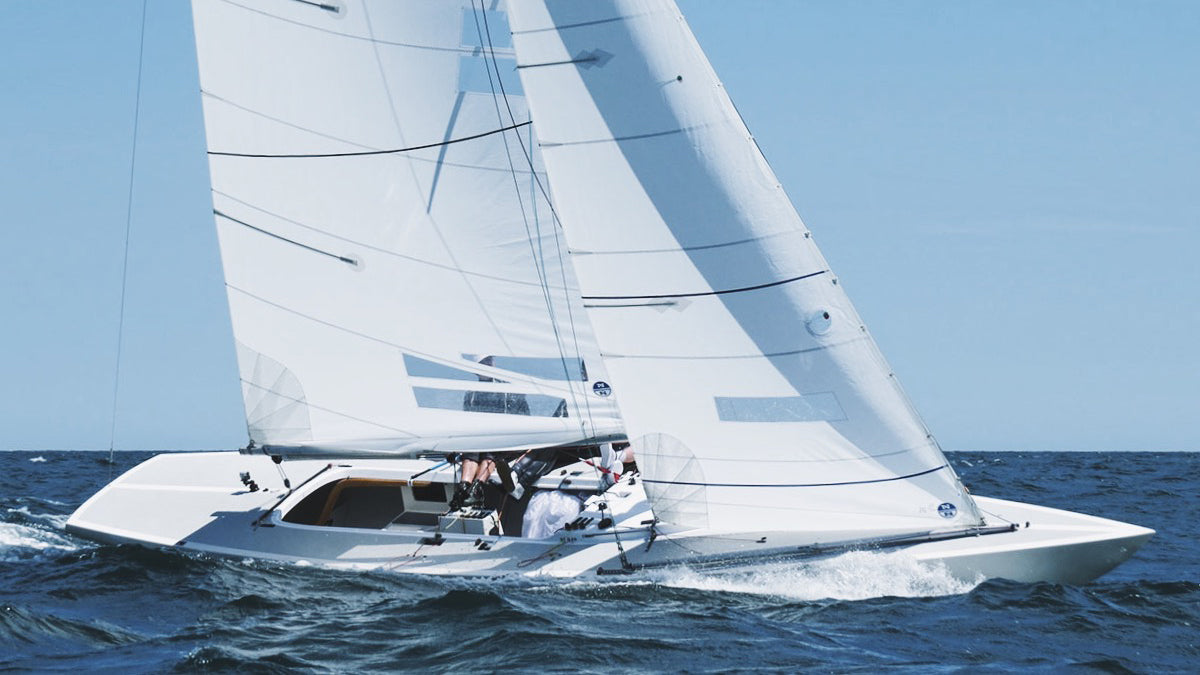
ETCHELLS SPEEDY TIPS
ETCHELLS SPEEDY TIPS
Quick Tips That Make All The Difference
Whether you are preparing for the Worlds, a local regatta, your country’s nationals or your club’s summer series, we have compiled a series of speedy tips from North Sails Etchells experts that will help you step up your results.
Don’t forget the jib trim setup. We spend a lot of our time focusing on the mainsail when the headsail is usually 67% of the total drive force.
Light Air Jib Setup Under 8 knots
Use the soft full length batten.
Add forestay sag by easing the backstay.
Add prebend in the mast by easing the mast lever or reducing mast blocks.
Trim the sheet to have the upper leech tell tale flying 90 to 100% of the time.
Jib Trim
Use the tuning guide’s spreader marks as your trim guide for consistency.
Battens For Light Air
Use the soft full length top batten combined with the shorter length lower leech battens. They make a big difference.
Getting A Good Start Is Critical
The more you can practice starting, the better. Work on your line sights before each start and work to get a “movie” line sight for the bow person, watching to leeward as you approach the line so they can be calling accurate distance to the line as you approach. That, plus a good clear call on time is invaluable.
Straight Starting
The Etchells is a heavy keelboat with the rudder attached to the skeg and does not turn that well. Try not to bear off too much on starboard in the last 45 seconds to the start. Keep the jib trimmed in, or luffing about halfway if necessary, to help the helmsperson find the right angle to build speed in the last 15 seconds or so.
Watch The Layline
Unless you are in the top 3-5 boats at the first windward mark, NEVER EVER get to the layline more than 10 lengths from the mark because you’ll spend too much time in bad air from the boats ahead. Instead, find a clear lane back to the middle, and then work to get up to the layline inside ten lengths from the mark. Bad things happen to good people who get to the layline too early!
Do Your Homework
Arrive a few days before each event to get reacquainted with the boat and your teamwork. A day or so of practice really helps shake the cobwebs, and, if you are working with a coach, is a chance for some good analysis of setup and general trim. Having a good training partner helps a bunch, especially if both teams are keen to learn and share.
Never Stop Practicing Time/Distance Drills for Starting
Good starts typically yield good finishes. In the uber-competitive Etchells fleet, getting off the line is essential as the fleet thins out very fast and lanes are at a premium. Try to get proper line sights (safe ones!) and practice accelerating and decelerating as you approach the line. The goals are always the same: cross the starting line as close as you can, on your best exit angle, and at top speed!
Don’t Wait Too Long To Take Down The Spinnaker
The Etchells will keep its momentum into the bottom mark and any loss you think you give up with an early drop is overshadowed by a clean rounding in a good lane with speed and everyone hiking. Speaking of hiking, it works every time, so don’t take long breaks in the breeze. The Etchells responds nicely to a hard hiking crew, even though it hurts!
Tuning Evolution
It is amazing to see how this great boat continues to evolve. The addition of the mast lever and intricate in-haul systems have really helped make the boat so much more adjustable from the rail. You can adjust your sailing mode to the racing situation: maybe a high mode to live in a lane, or a more open bow-down mode to capitalize on a shift. I have been sailing these boats since the 1980s and I am still learning every time I race them.
Smooth Versus Bumpy Water Set Up
I have found that fast settings for smooth water often do not work as well in bumpy water and vice versa. Bumpy water versus a big sea swell also changes what set up works best. In general terms, fuller sails with more twist seem to work well when the water is rough, while flatter sails with harder sheeted leeches seem to be better when the water is flat.
Spreader Angle and its Effect on Mainsail Luff Curve
Each Etchells mast is a little different in bending characteristics. The mast ram can have a big effect on getting the mast to match the sail’s luff curve, but spreader angle also has a part to play here. A more forward or straight-out spreader angle makes the mast stiffer. A more aft-sweep spreader angle lets the mast bend more easily, particularly in the middle section. A fair curve that matches the sail best is the ticket.
In Miami, Consistency Pays
Miami continues to be venue where consistency pays. Taking chances usually produces a high scoring race. I try to be conservative on the line, starting in the middle third. From there, I work my way to the favored side as I progress up the first leg.
New Sails are Better Than Old Sails!
We used unbuttoned sails for the first 3 winter series events to save our buttoned sails for the Midwinters, a sanctioned event. Fresh sails do make a difference, especially with jibs.
Flat Water Tuning
Biscayne Bay is very specific with its flat water conditions. Most other venues tend to have more chop or swell, so you’ll have to revert back to settings with a little less rake and slight fuller flying shapes.
Find A Clear Lane
Find a clear lane free from boats too close to leeward, so you can put the bow down and reach max speed.
Put The Keel To Work
It often takes as long as a minute to reach max speed with the bow down. After you do, you start to sail higher as the keel begins to work.
Crowded Leeward Mark
At the leeward mark, if you are in a group of boats with only a marginal chance of gaining an inside overlap, hold back and round behind to allow a high lane exit. This allows you to sail to the side for longer. Tacking back into the middle too soon after rounding is usually a loser.
READ MORE
READ MORE
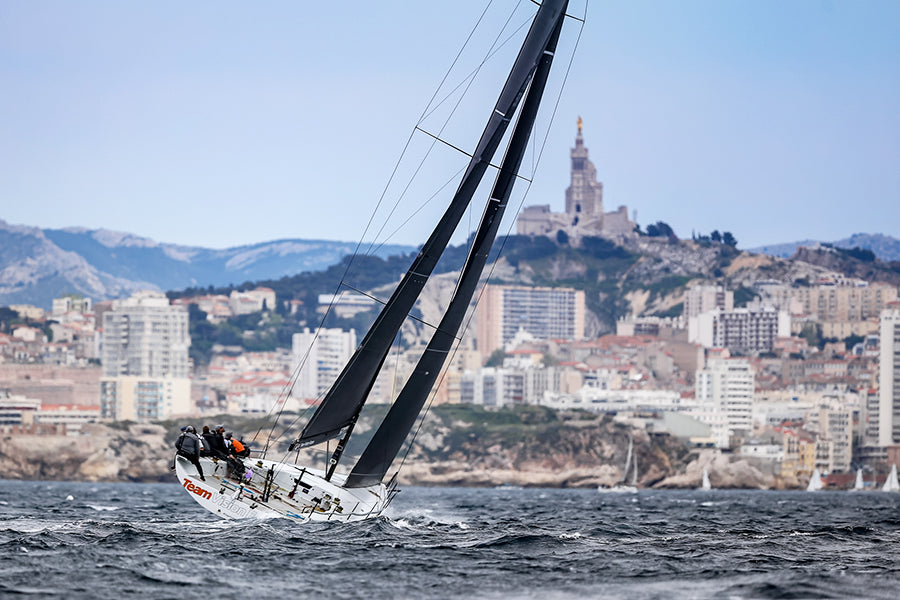
NORTH AFFICHE DE BELLES PERFORMANCES SUR LE SPI ET LA SNIM
NORTH AFFICHE DE BELLES PERFORMANCES SUR LE SPI ET LA SNIM
Un week-end de Pâques riche en émotions et en victoires pour North
📸 David Ademas / Ouest-France
Le week-end de Pâques a battu son plein avec au programme deux gros événements nautiques : le Spi-Ouest à l’Ouest de la France dans la baie de Quiberon et la SNIM au Sud sur la rade de Marseille. Sur les quatre jours, les conditions météo ont donné du fil à retordre aux équipages présents (entre pétole et dépression) qui ont dû user de tout leur art, mais se sont livrés à de belles batailles. On compte un bon tiers de la flotte qui a navigué sous voiles North (jeu complet ou partiel) et autant de victoires sur le Spi-Ouest tandis que sur la SNIM, c’est quasiment la moitié des bateaux qui décrochent les places d’honneur sur le podium (jeu complet ou partiel).
📸 Thomas Bregardis / Ouest-France
À la Trinité, c’était presque l’été durant ce long week-end de Pâques (19-22 avril 2019). Malgré un début timide avec vents légers, parfois absents, la 41e édition du Spi-Ouest France – Destination Morbihan s’est disputée dans des conditions plutôt idéales avec ciel bleu, soleil radieux et températures dépassant les 20 degrés. Les 440 équipages répartis en 6 zones de course ont navigué entre 4 et 16 manches selon les catégories de bateaux, sur des parcours construits ou de grands côtiers, soit 150 au total. Le niveau de jeu entre amateurs et professionnels était de taille et a offert aux spectateurs venus nombreux pour l’occasion un magnifique ballet incessant de voiliers, notamment sous spis multicolores, et des régates endiablées sur la magnifique baie de Quiberon.
📸 Pierik Photographe
À Marseille, sur les quatre jours de régate, les conditions durant la 54e Semaine Nautique Internationale de Méditerranée étaient particulièrement denses et instables, avec un vent d’est capricieux, une dorsale de hautes pressions et une dépression, entraînant des flux différents et perturbés au Sud comme au Nord de la rade. Des conditions atypiques mais qui ont offert de nombreuses tactiques et de très belles courses aux 139 bateaux et 1000 marins présents.
📸 Pierik Photographe
Côté classement sur le Spi Ouest, nombreux sont les bateaux dotés d’un jeu North Sails qui décrochent la plus haute marche sur le podium comme le catamaran ETF 26 Team Pro, le TP 52 Paprec Recyclage (IRC A), le XP 38 X Spain (Osiris 1), le JPK 10.80 LS Resa (IRC Double), New Territories (J/70), et Bénéteau Boat Club (First 24). Autres victoires, chez les Figaro 2, C-Magic termine 2e tandis qu’en Open 7.50, Bretagne Telecom et Le Britannia occupent les 2e et 3e places. En Multi 2000, Arbezen se classe 2e de sa catégorie. Bonne Nouvelle 2, Joke, Sage Engineering occupent les 3e places de leur catégorie respective en 31.7, Osiris 2 et J/70. Enfin dans la série ETF 26, Cool Runnings 4 se place en 2e position, suivi de Gaspe en 3e. Pour tous les résultats de course, voir sur https://evenements.ouest-france.fr/spi/.
📸 Pierik Photographe
Sur la SNIM, on note les victoires des TP52 Team Vision Future, Alizée et Arobas 2 en catégorie IRC O, respectivement en position 1, 2, 3 sur le podium, qui affichent le logo North Sails. De même pour Imagine et Tonnerre de Glen qui arrivent 1er et 3e de leur série en IRC 1. Le fast 40 Sloughi Rivas Yachting prend la 2e place en IRC 2, et Absolutely emporte la 3e place en IRC 3. Dans les autres catégories, c’est Raging Bee qui décroche la 2e place en IRC 4, Espresso arrive en tête de sa catégorie en IRC Solo, suivi de très près par Hokua. Enfin en IRC Duo, c’est l’équipage de Léon 4 qui domine la flotte. Pour tous les résultats de course, voir sur https://www.lanautique.com/regate/snim-2019/.
READ MORE
READ MORE
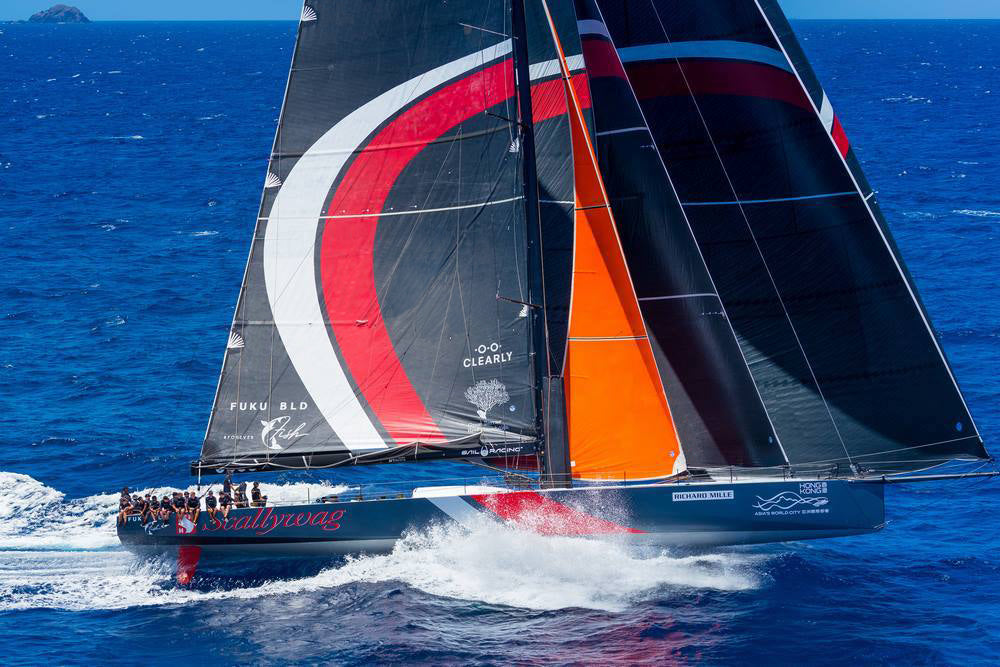
SCALLYWAG ADDS HELIX, RESETS PERFORMANCE POTENTIAL
A NEW NORMAL FOR SCALLYWAG
Helix Sails Create Higher Expectations
📸 Les Voiles St Barth Richard Mille
The 100’ super maxi Scallywag added Helix to their sail wardrobe in early April, just in time for Les Voiles de St Barth Richard Mille regatta. With limited testing days from install to start line, it was trial by fire.
“Scallywag switched over to North Sails at the end of 2018, and we are all thrilled with the decision we made,” remarked David Witt, Scallywag skipper. “Our team has set lofty goals and our boss wanted to make sure we have every opportunity and best shot to hit them. These new Helix sails have reset our expectations for boat speed, and we haven’t even fully unlocked its potential.”
Designing the team’s new 780 sq. meter A-3 was a groundbreaking and collaborative team effort involving North designers around the world. New Zealand-based sail designer Magnus Doole led the project, which included Mickey Ickert, Mike Schrieber, Steve Calder, and Brodt Taylor.
“Helix sails represent a very exciting new style of sail design and set up,” explained Doole. “Mike and I designed the base mold and ran refinements to the design through our North Design Suite; Spiral/Desman/WARPS/Membrain/Flow. Brodt and Steve were involved from a layout perspective, and Mickey acted as my sounding board and provided a feedback loop for this really intense project. All the while, I was checking in with Steve and JB Braun on their Helix design experience to date. Sail evolution brings out the best in North Sails as the collaborative work takes the guesswork out of the end product.”
North Helix sails with Load Sharing Technology are changing the narrative on the sail design and set up, and stepping into a whole new world of headsail performance. Get in touch with a North expert today and learn how Helix can help you raise your game.
https://www.northsails.com/sailing/wp-content/uploads/2019/04/Scallywag.mp4
READ MORE
READ MORE
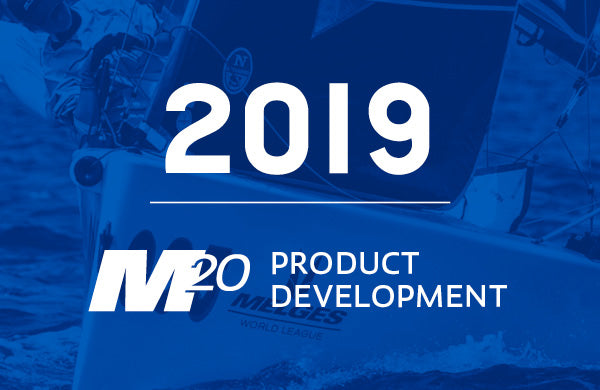
NEW GENERATION 3Di JIB FOR THE MELGES 20
NEW GENERATION 3Di JIB FOR MELGES 20
New 3Di Ji-4 Jib Now Available Across The Fleet
The One Design team at North Sails are never satisfied; they are continually striving and working to improve their products and provide their clients with the tools to raise their performance levels. Such is the case in Melges 20. Two years after first introducing 3Di technology to the class, North Sails are releasing a cutting edge 3Di jib to create a hugely competitive 3Di sail wardrobe across the boat. It was this 3Di mainsail and jib combination that saw STIG triumph in dramatic style in the recent World Championships in Miami. North Sails clients may have won the Melges 20 World Championships for the last seven years, but this does not mean the team rests on their laurels.
Over the winter, the experienced Class Leader Giulio Desiderato, worked with Europe’s leading designers and STIG to roll out the Ji-4. Developed by Giovanni Cassinari and Michele Malandra, with the help of One Design expert Mike Marshall, the team used North’s bespoke Membrane software to simulate the sail structure and design. Testing through February and March evolved a sail that ultimately powered STIG to victory in Miami.
“Simulating the data collected from the North team racing on the circuit with our in-house software, we were able to create a new generation of jib”
Commenting on the new 3Di jib, Giulio Desiderato added, “It was a dream team of designers with Giovanni, Michele, and Mike, and they did a fantastic job, working hard to create something really exciting. Our 3DL jib was a big success with our Melges 20 clients, powering many victories on the circuit, so we wanted to develop a 3Di jib that would be even more successful and work perfectly with our 3Di mainsail. Simulating the data collected from the North team racing on the circuit with our in-house software, we were able to create a new generation of jib with a completely changed layout, modified shape and new sail geometry. The sail is not only lighter, but the 3Di structure makes it more stable, and the new layout combines perfectly to produce a fantastic shape that delivers.”
The skipper of STIG, Alessandro Rombelli summarized the performance of the new jib: “The new 3Di for the Melges 20 is much more effective. The shape holds perfectly and is desirable in all conditions. The new 3Di Ji-4 jib was a great tool for our upwind performance.”
Giulio concluded, “This project really shows the potential when the unparalleled North Sails network combines the best experts in different fields to deliver a game-changing sail. I am excited about offering our clients this new product, and we won’t stop there, we’ll always keep looking to improve. I want to thank all the owners and sailors that bring so much energy and passion in deciding to work with us to reach our shared goal to constantly improve, and sail faster and faster.”
The new Ji-4 is now available for order and will be ready for delivery ahead of Act 2 of the World League. To learn more, please visit our class page.
READ MORE
READ MORE
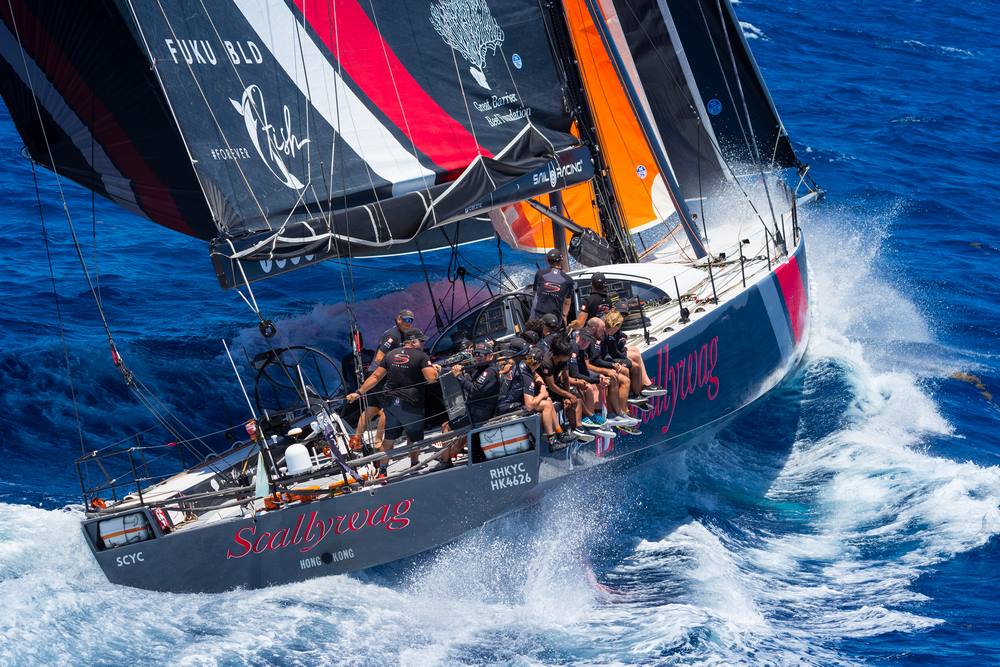
TWO NEW RACE RECORDS IN ST BARTH
RACE RECORDS CLAIMED AT LES VOILES DE ST BARTH RICHARD MILLE
To New Records Added To The #NSVictoryList
📸 Christophe Jounay
Upwind, downwind, and around the corners, North Sails inventories assisted clients throughout the course of the 10th edition Les Voiles de St Barth Richard Mille. Congratulations to 100-foot monohull SHK Scallywag with owner Sung Huang Lee and skipper David Witt and Greg Slyngstad’s 53-foot multihull Fujin. Each won the Richard Mille Record Trophy for setting new race records in the 34-mile round trip sprint to St. Martin and back. SHK Scallywag, built for speed and made for distance racing, has the right inventory for a swift downwind sprint, with the addition of North Sails Helix which enabled her to sail higher angles at a faster pace.
“We are obviously delighted that SHK Scallywag is named this year’s monohull trophy winner,” said Phil Harmer, two-time Volvo Ocean Race winner who sails on board SHK Scallywag. “SHK Scallywag is made for long-distance races and she is obviously more comfortable when the course gets a little longer,” said Harmer.
Skipper David Witt shared Harmer’s feelings on how SHK Scallywag performed in the distance race to win the Richard Mille Record for the monohull. This was David’s first time racing in St Barth, and he was humbled to have contributed to this iconic win for his team and owner Sung Huang Lee, who was in St Barth driving the boat earlier during the week. “The last three days have been beautiful sailing in a beautiful place – it doesn’t get much better. It sure beats going around the world,” said Witt. “For us, this event is great practice to help us work toward our goal at the end of the year to race in the Sydney to Hobart Race.”
Bieker 53 multihull Fujin finished just three minutes after 100-footer SHK Scallywag, in a personal best of 2 hours, 36 minutes, and 33 seconds. Quite the accomplishment for a boat half the size to keep up with a high-performance speed-machine. Well done Greg Slyngstad and crew for an amazing race!
North Sails full results recap of the 10th Edition Les Voiles de St Barth
READ MORE
READ MORE
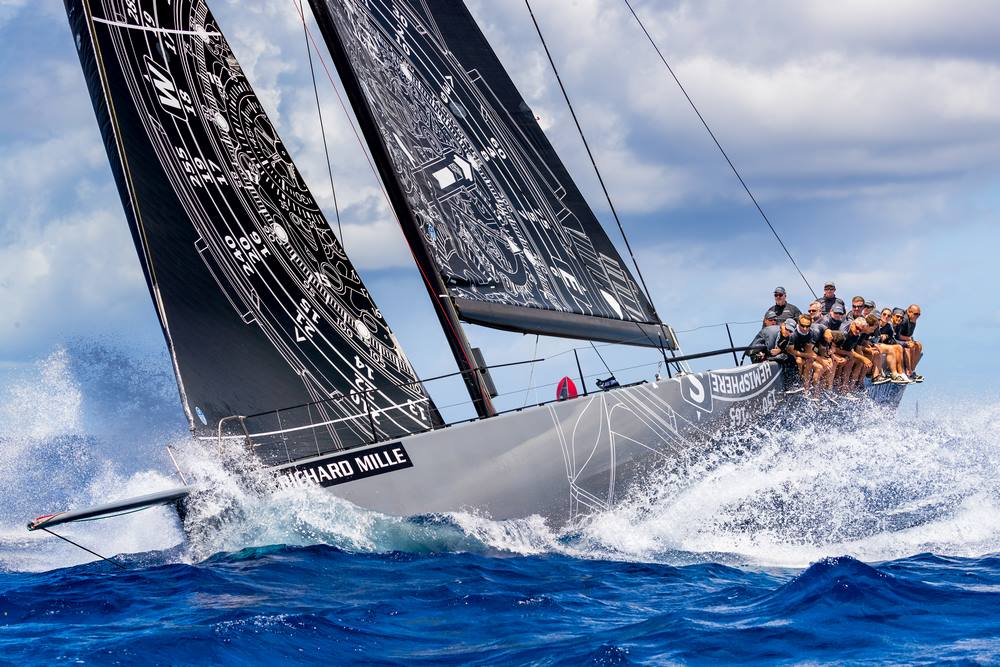
NORTH FUELS EIGHT DIVISION WINS & TWO RACE RECORDS IN ST BARTH
Clients fly at Les Voiles de St Barth Richard Mille, winning eight of 11 classes, and claiming two new race records. Congratulations to Peter Harrison’s JV72 Sorcha, winner of the Richard Mille Maxi Cup.
Pamala Baldwin’s J/122 Liquid, winner of CSA 4 and overall CSA champion 📸 Christophe Jounay
Triple Lindy and Summer Storm battling upwind in close competition in CSA 2. Congrats to Summer Storm for the division win. 📸 Christophe Jounay
Windfall, winners of Maxi 2 📸 Christophe Jounay
READ MORE
READ MORE
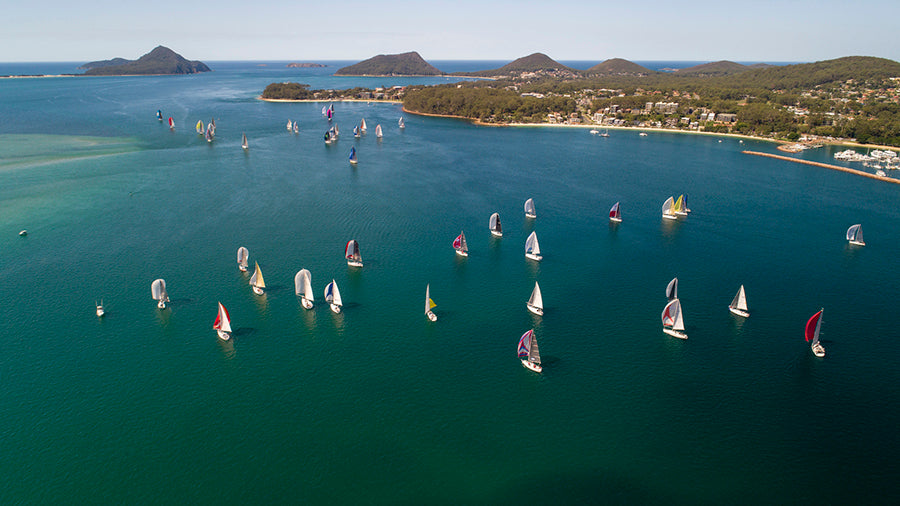
IMPRESSIVE TURNOUT FOR SAIL PORT STEPHENS
IMPRESSIVE TURNOUT FOR SAIL PORT STEPHENS
Achieving High-End Results With North Sails Experts Onboard
📸 Hover UAV
North Sails mounted a huge turnout at Sail Port Stephens 2019, both in terms of clients achieving high-end results and staff crewing across the range of boats which made up two sets of record fleets. Now in its 12th year, the popular autumn series, which is broken into two halves and open for entry to either or both, had a waiting list of owners wishing to enter but unable to find a marina berth over the busy period – a good reason to enter early for the 2020 edition! Dates are yet to be announced.
The first-half Bannisters Port Stephens Commodores Cup - designed for cruiser-racers with a daily passage race making up the pointscore - enjoyed the best conditions of the week-long regatta, a light air opener for the stunning offshore islands course then two windier days for the record 100-strong fleet.
📸 Salty Dingo
Conditions for the Pantaenius Yacht Insurance Port Stephens Trophy fleet of 150, also a Sail Port Stephens record, were tediously light and fickle on the opening Friday with marginal less hair-pulling on the Saturday. Finally Sunday brought enough wind, remnant from the overnight southerly change though peppered with rain squalls and significant shifts, to complete that day’s closing schedule of windward/leeward and passage races.
On-water postponements, shortened courses, mid-race course adjustments and overnight changes to the racing schedule kept the race committee, led by Denis Thompson, busy between Salamander Bay where the Australian Sports Boat Association national title and VX One state titles were playing out, to the offshore course area.
📸 Salty Dingo
Results-wise, North clients and staff posted multiple regatta winning low scores across the divisions including the eventual IRC division 2 champion for the fifth consecutive year, Bob Cox’s DK46 Nine Dragons, with Michael Coxon aboard. The Middle Harbour Yacht Club entry staged a late steal in the stronger winds on the final day, Sunday April 14, having been beaten up by the Farr 40s in winds eight knots and less on the Friday and Saturday.
NSW IRC Championship division 1 second-placed Hooligan, Marcus Blackmore’s Pittwater based TP52, had Paul Westlake as part of its well-credentialled team, including Ben Lamb, Ed Smyth from New Zealand and Stacey Jackson, among other talent.
📸 Salty Dingo
North’s Rob Greenhalgh added his expertise to Sam Haynes’ TP52 campaign, Celestial finishing third in IRC division 1 and taking out the TPR division which is a new Australian-based bespoke scoring system for the TPs based on AMS and the number of professionals aboard.
Rob Pitts’ Farr 40 Double Black remained on the IRC division 2 podium right across the long weekend, North’s Aaron Cole an integral part of the Victorians’ consistency coming off the back of the class’ summer-long season of racing.
📸 Salty Dingo
Adding their name to the list of North Sails noteworthy results was Steve Barlow’s MC38 Lightspeed, both the Performance Racing division 1 and Super 12 victor. David Griffith and Doug Flynn’s stunning Marten 49 Yarrandi cleaned up Performance Cruising division 1 and Steven Proud’s MC38 Swish, with Sydney-based Billy Sykes calling tactics, picked up second in the Super 12 division and third in Performance Racing division 1.
North Sails staff also picked up Commodore’s Cup top three results crewing on Not a Diamond (Hamish Crossan), Mojo (Jeremy O’Donnell) and the TP52 Gweilo (Kyle Dodds and Andrew Parkes) - 12 staff in total across the week.
📸 Salty Dingo
While there is a highly competitive thread across most divisions racing at Sail Port Stephens, particularly for the Port Stephens Trophy, another significant draw card for owners and crew is the fact the holiday destination is just 2.5hrs from Sydney by road, and it’s well situated between Brisbane and Melbourne for staging class and multi denominational championships.
Accommodation options are plentiful and varied for crews plus family and friends to join their favourite sailors, shops are handy and boat services are easy to access. The bay offers brilliant flat-water racing made challenging by the tidal flows, sandbanks and land influence, and sailing around the striking uninhabited islands just beyond the Port Stephens entrance resembles the Queensland Whitsundays.
📸 Salty Dingo
Add in a colourful program of evening social gatherings, including the dress-up Commodore’s Cup prizegiving and sponsored drinks at Broughtons at The Bay where crews gathered religiously after racing for the obligatory debrief, and it’s no wonder record numbers are heading to the Hunter coast for the annual series.
Full results at www.sailportstephens.com.au
📸 Salty Dingo
READ MORE
READ MORE
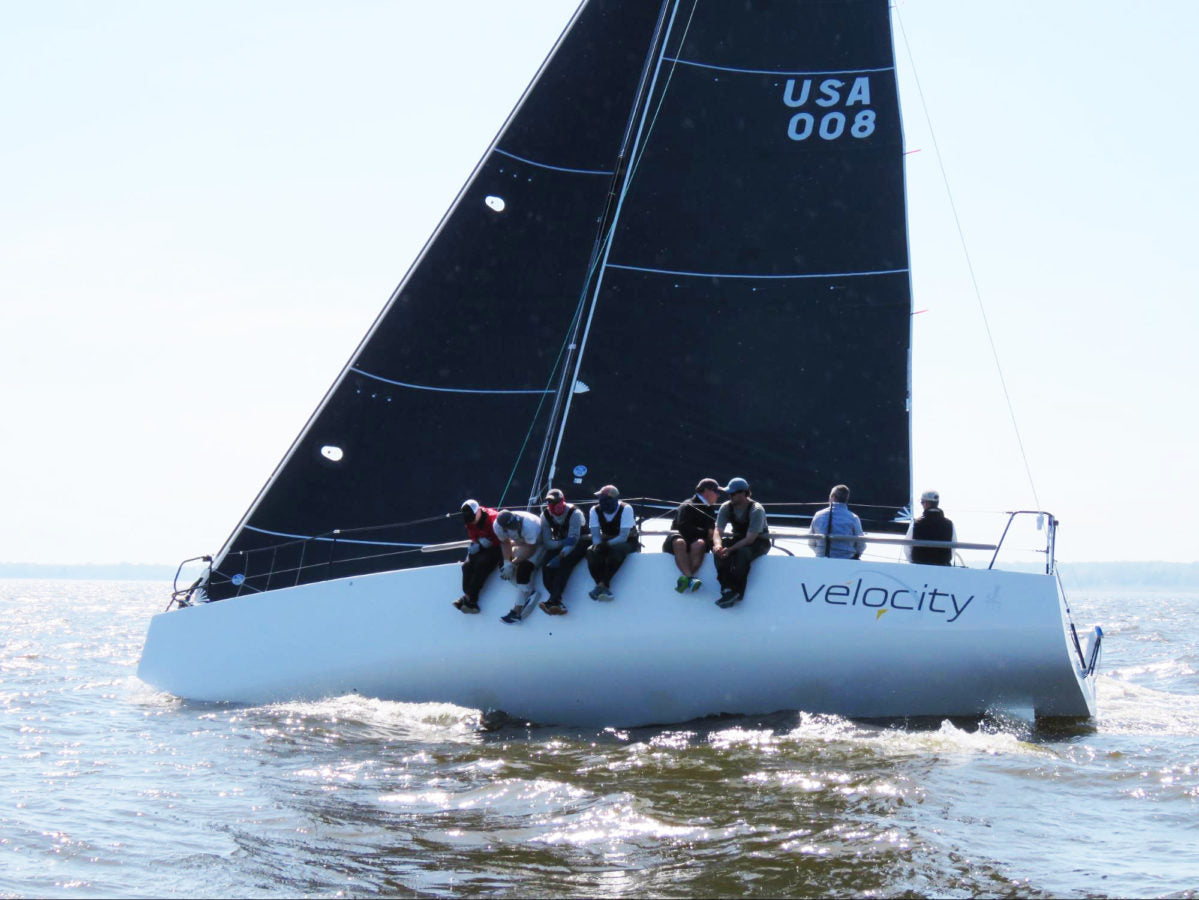
ROAD TO THE J/111 WORLDS: ESTABLISH THE PLAN
ROAD TO THE J/111 WORLDS: ESTABLISH THE PLAN
Preparing For The Season
In the first article in a three-part series, North Sails expert Allan Terhune describes what Team Velocity will work on over the course of the season to peak at the J/111 Worlds in August.
Based in Annapolis, Md., Marty Roesch’s J/111 Velocity has been an active and successful class competitor since the class got underway half a dozen years ago. In 2018, the team scored a first-place finish at the Annapolis NOOD and in 2017, the Chicago YC Race to Mackinac and Chicago NOOD. Although Velocity has regularly competed at the class world championships, podium finishes have eluded us (I joined the team last season). Our goal for 2019 is to stand on the podium at the end of the Worlds, which will be in Chicago, August 19-23. We’d like to win, but in my experience, if you sail well enough to get onto the podium, you have a chance to win if things break your way. The goal is always to have a chance to win with a race or two to go and then let the chips fall where they may.
What are the team’s priorities?
First priority is to get squared away on our tuning and sail set-up. The class has recently shifted away from using jibs that are tacked to a roller furler, and now they are tacked on the deck. This is the first year for that in the U.S., so we’re installing a new headstay and setting up new jibs to this configuration. Learning how the sails trim and what tuning changes are needed are priority #1. Without speed, it will be impossible to place well at any event.
The class has recently shifted away from using jibs that are tacked to a roller furler, and now they are tacked on the deck. Learning how the sails trim and what tuning changes are needed are priority #1.
Next priority is to work out how to maximize sailing time for the whole crew and lay out a schedule so we peak at the right time. Rather than focus on results at each event, we’ll set goals for each regatta and measure ourselves against them. Again, it’s a season-long build-up to the Worlds.
The final priority is to consistently evaluate performance to identify weaknesses. We need to plan how each event will be a chance to work on correcting some of these weaknesses.
What do you focus on first?
Establish a schedule that the entire crew could agree on! That was our top priority, and as of late March, that’s done. We leaned toward one-design regattas where possible and are pacing ourselves so we don’t peak too soon or burn out. Our whole team lives locally, and we’ve begun having regular crew meetings, looking at the goals for each event, and giving each crew a chance to own their area of the boat, as well as the team’s goals.
May – Helly Hansen NOOD Regatta (Annapolis, Md.)
June/July – Chesapeake Bay Racing
August – Pre-World Tuneup (Verve Cup)
August – World Championship (Chicago)
What are your goals for the Annapolis NOOD?
We expect to have eight J/111s at this regatta. We have a good local fleet and should be able to sail a couple Wednesday night races and a day of practice beforehand. Our goal is to get our tuning right with the new headstay, learn how our jibs should be flown and trimmed, and identify boat handling weaknesses in all maneuvers including starting and steering. Of course, we want to do our best, but we will be focusing on long-term goals as well as short-term regatta results.
As a foundation for this, we’ll do debriefs every day. To get better as a team, it’s important everyone has a voice and provides input on what they’re seeing. The debrief is paramount to learning as a team and taking steps forward after each day.
What are your goals in June and July?
In the J/111 Class, we have only three sail buttons for new sail purchases, and new jibs are required for the new headstay. The new sails are North’s 3Di, they will last longer than our competitors. This will give us a leg up on being able to sail with the sails a little more and get our settings in a place where we are comfortable with them.
Our June races are in mixed fleets so we won’t be doing closed-course one-design racing and it will be nothing like the Worlds, which will have 25 or more boats on the racecourse. However, the racing will be a great opportunity to perfect our ability to get around the corners. At the Worlds, great boat handling is an absolute must.
The new sails are North’s 3Di, they will last longer than our competitors. This will give us a leg up on being able to sail with the sails a little more and get our settings in a place where we are comfortable with them.
This is also when we’re pacing ourselves and not overdoing it. Early in the season, everyone is enthusiastic but if we push too hard we risk burn-out. One good regatta a month, or a couple of one-day races in June, with a practice or two sprinkled in, should be about right.
What are your plans for the Pre-Worlds and Worlds?
The Pre-Worlds Regatta, part of the Verve Cup Offshore Regatta is right before the Worlds, so our plan is to treat it just like the Worlds and go as hard as we can, developing our game plan. Our goal is to podium for the event and leave it feeling good with all our sails and mechanics ready for the Worlds.
How do you build team connections throughout the season?
We have a team group on the chat app WhatsApp. Our discussions are not always sailing related, and I view that as a good bonding thing for us. I know we also stay together as a group after Wed night racing and other events.
We also started talking about our team weights and where we need to be for the event. It is better to know the goals now with 4 months to go versus trying to do it last minute. The goal is to be on weight, strong and ready for the event, and not have this be a stress point.
Learn more about North’s products for the J/111 Class.
READ MORE
READ MORE

37TH GARDA OPTIMIST MEETING
37TH GARDA OPTIMIST MEETING
Thanks For Visiting Us At Fragila Vela Riva
📸 Matias Capizzano
North Sails is proud to be a part of the 37th Lake Garda Meeting for the Optimist Class - the largest single-class regatta in the world. Aside from a spectacular sailing venue, Lake Garda always delivers perfect sailing conditions and this event was no exception - reliably at noon every day, the Ora wind set in. This made for exciting racing, with the top seven boats being divided by just four points after the penultimate race.
Throughout the week, the North Sails booth acted as a hub for over 1000 sailors to come and talk, ask questions and play games. North Sails Optimist Class Experts offered some last minute racing tips to the sailors, coaches and parents, with sail designer Mike Marshall coming over from the U.S. to give some hands-on sail tuning advice. ''It was great to see both the coaches and sailors critically analysing the sails," commented North sail designer and Optimist expert, Mike Marshall.
North Sails Optimist Class Experts offered some last minute racing tips to the sailors, coaches and parents. "It was great to see both the coaches and sailors critically analysing the sails."
As well as being present onshore, our experts were out on the water putting our latest Optimist development sails through their paces. Working closely with teams from Russia, USA and Norway, we are delighted with the performance of these test sails. Testing will continue over the next month in Germany, Italy and Switzerland... watch this space!
After working closely with teams from Russia, USA and Norway in Garda, the testing of our latest Optimist development sail will continue over the next month in Germany, Italy and Switzerland.
Congratulations to Marco Gradoni from Italy who came top of the 887 boats in the Junior fleet and Erik Scheidt from Brazil for winning the younger Cadetti fleet with 84 boats.
''With great pride and satisfaction, we have completed this 37th edition of the Garda Optimist Meeting. This year, we were particularly lucky also with the weather conditions. that gave us a week that almost looked like summer, with warm sun and steady Ora wind, never below seven knots. It's already time to look forward, in 2020 we will also host the Optimist Worlds so it will be a great year for Fragila Vela Riva.'' Giancarlo Mirandola, President of Fragila Vela Riva.
Visit the Optimist Class Page and browse our Shop Inventory now.
📸 Matias Capizzano
📸 Matias Capizzano
📸 Matias Capizzano
READ MORE
READ MORE
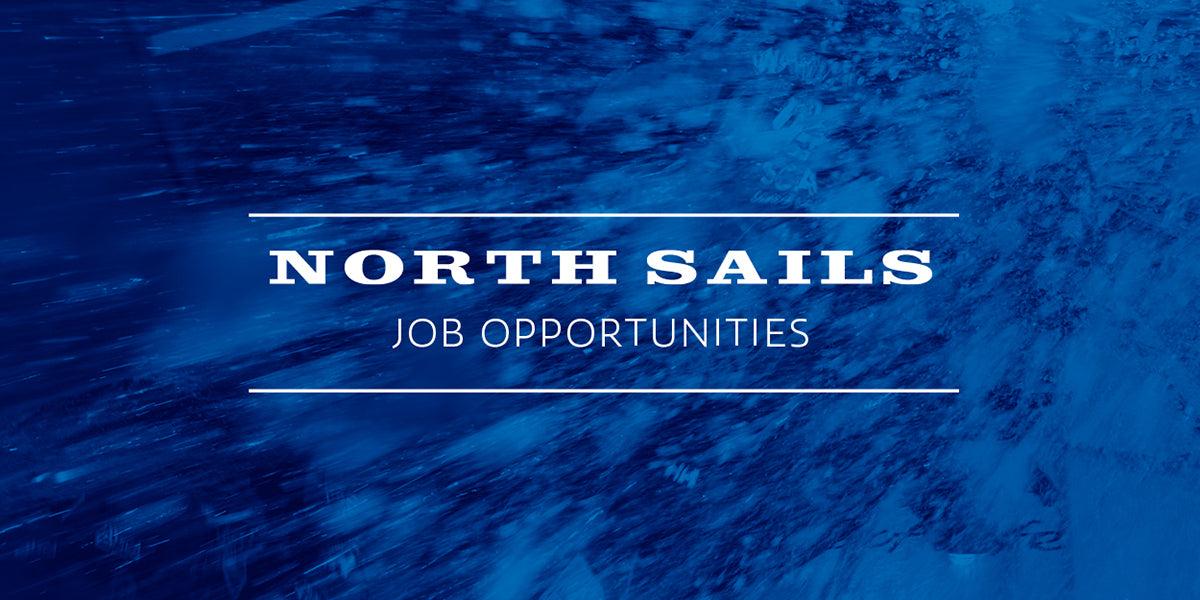
EMPLOYMENT OPPORTUNITY IN LONG ISLAND
WANT TO JOIN OUR CREW?
North Sails Long Island Is Recruiting
Would you like to work in a fun, and fast paced environment with the worldwide leader in sailmaking? Since 1957, North Sails has led the sailmaking industry with our cutting-edge technology and knowledgable team. We are looking to add an energetic and organized sales representative to our team in Huntington, NY.
Job Title
North Sails Sales Expert
Job Overview
He or she will be responsible for networking and building a customer base of sailing clients. The sales expert with work with clients to identify their needs and provide sail solutions. Responsible for identifying potential clients, providing quotations, completing the sale and entering the order to meet the client parameters of their boat.
Location
North Sails Long Island, 135 W Shore Road, Huntington, NY 11743.
Hours
This is a full-time position. Office hours and travel are required and will vary depending on season, client base and location.
Essential Duties & Responsibilities
Maintain knowledge and expertise in the current North Sails product line
Provide first class customer service to all customers
Maintain Sales Funnel
Meet and/or exceed sails goals as discussed with manager
Represent North Sails on an off the water in a professional manner, as described in company guidelines and code of conduct
Adhere to Sales Guidelines
Actively participate in local and regional sailing organizations, clubs, and events
Attend and participate in sales trainings, meetings and events
Qualification Requirements
Must have extensive background in sailing and participation in local and regional sailing events
Experience in sales position
Superior customer service skills
Professional written and verbal communication skills
Moderate to strong computer skills
Flexible / non-traditional working hours
Confidentiality
Ability to work without direct supervision
If you are interested in this position, please send cover letter and resume to Pete.Colby@northsails.com
READ MORE
READ MORE

LE MULTI SOUS TOUTES SES FORMES À LA GRANDE MOTTE
LE MULTI SOUS TOUTES SES FORMES À LA GRANDE MOTTE
Le Salon International du Multicoque
Tout le monde est prêt pour l'ouverture
Parmi les événements nautiques de la saison à ne pas manquer figure sur le calendrier le Salon International du Multicoque à la Grande Motte. Du 24 au 28 avril, la 10e édition dévoilera les grandes nouveautés 2019 en avant-première (une dizaine en exclusivité mondiale ou européenne). Seront exposés une variété de modèles conçus par les principaux constructeurs, soit près de 60 catamarans et trimarans habitables, à voile et à moteur, sur un espace de plus de 3000 m2.
Ce salon de référence réunira tous les acteurs de la filière multicoque de plaisance dont le dynamisme ne faiblit pas : professionnels, architectes, chantiers, voileries (dont North Sails), accastilleurs, loueurs, assureurs, transporteurs, etc.
La France reste leader sur ce marché avec environ 70% de la production. L’Afrique du Sud est le second producteur.
Comme chaque année, North Sails sera présent sur le salon. L’équipe tiendra son stand sur l’esplanade (stand T2) et présentera aux visiteurs, professionnels comme amateurs, ses différentes gammes de produits les mieux adaptés aux multicoques de plaisance (Nordac et 3Di Ocean : nouveauté 2019) et à la course (3Di Raw : la voile de tous les records sur le Jules Vernes, le Trophée Saint-Exupéry, le record des 24h, etc.), sans oublier les voiles de portant du Spi symétrique au tout récent Gennaker Hélix 3Di.
Le Salon International du Multicoque qui fête ses dix ans cette année a organisé sa grande première à Lorient en 2010 avant d’être relocalisé à la Grande Motte sous le soleil méditerranéen. Depuis son existence, l’événement confirme sa réputation dans le milieu avec une hausse constante des fréquentations. Environ 15 000 visiteurs du monde entier sont attendus.
Pour plus d’informations : https://www.multicoque-online.com/fr/
READ MORE
READ MORE
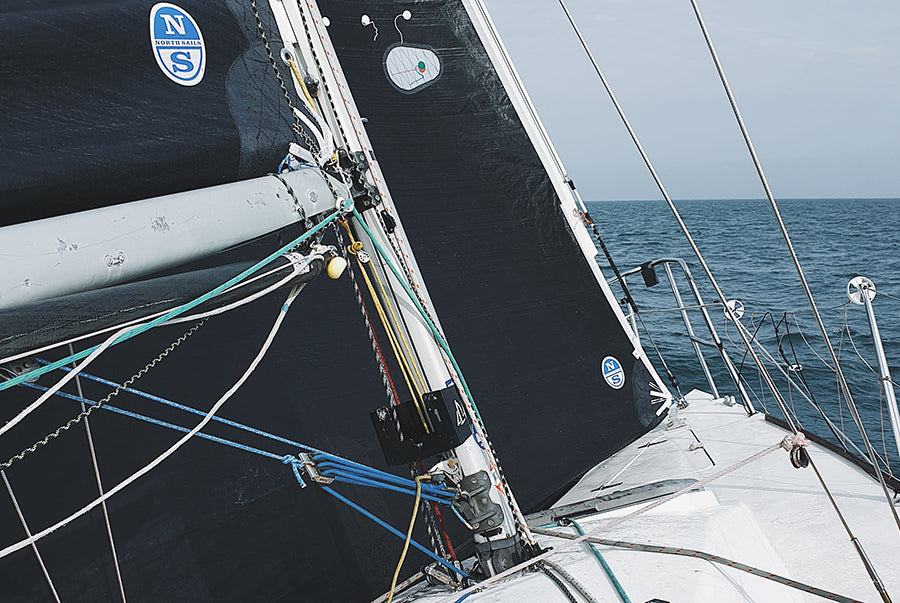
SEA TRIAL ON MUSTANG 30 PERIDOT
MUSTANG 30 "PERIDOT" SEA TRIAL
Testing the latest IRC-optimised inventory
Maurice "Prof" O'Connell from North Sails Ireland onboard the Mustang 30 "Peridot" testing their new 3Di mainsail, No.1 genoa, Code 2 jib and S1.5 symmetric spinnaker on Good Friday on Dublin Bay. Speaking yesterday after the 3Di sail trial co-owner Jim McCann said, "the sails are awesome!". "North Sails Ireland have been supplying "Peridot" since 2010 and we are delighted to work with Jim and his team in developing the latest IRC-optimised inventory. Sail FAST guys!" said Prof after the sail trial.
READ MORE
READ MORE
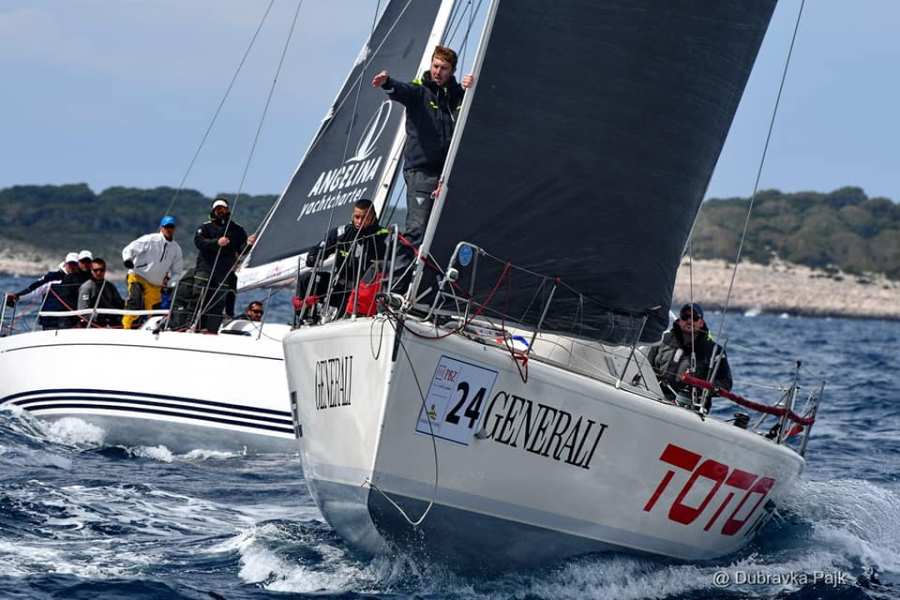
ODLIČNI REZULTATI NORTH SAILS KLIJENATA NA XXIII. USKRŠNJOJ
Odlični rezultati North Sails klijenata na XXIII. Uskršnjoj
Foto: Dubravka Pajk
Druga regata u kalendaru CRO ORC D-Marin Cupa je odjedrena od 11. do 13. travnja.
Novost ove regate je što se u potpunosti vratila ORC-u, odnosno nije više bilo Open skupina, već su se svi rezultati vrednovali po ORC sustavu. Naravno, posade koje su na ranijim izdanjima ove regate pokazivale izrazitiji sportski naboj i ove godine su jedrile po International inačici ORC-a, dok su se bivši Openaši prijavljivali s ORC Club svjedodžbama. Ovog godine je broj "ozbiljnih sportaša" bio veći nego društva iz Naute. ORC CRuiser/Racer skupina je brojala 15 jedrilica, dok je Nauta bilo 13.
Kao i ranijih godina, jedrili su na sličnim regatnim poljima, a ostao je jednak i broj krugova koji je morala svaka od flota odjedriti.
Skupina International je imala nešto kraće polje, ali s obavezna dva kruga, dok su Naute jedrili na oko pola milje duljem polju i to po samo jedan krug. Osim tih štapova u programu su imali i jednu navigaciju koju su odjedrili na jednakoj ruti.
Što se tiče flote ona je bila manje više poznata s ranijih izdanja regate, ali uz manje izmjene poput toga što su se dva TP-a koji su ranijih godina jedrili u Nautama ovaj put su se prebacili u Race skupinu. Jedino novo (staro) ime na startnoj listi je bila Anđela X koja je ovaj put jedrila u pomlađenom sastavu, ali pod istim klupskim bojama.
Prvi natjecateljski dan je bio četvrtak. Kasnije se pokazalo da je to bio i najplodniji dan regate jer se odjedrio maksimalni program od po tri plova za svaku skupinu. Uvjeti su bili teški jer vjetar nije bio stabilan. Dolazio je iz drugog kvadranta i počeo kao jugo koje je putovalo u desno, da bi se na kraju vratilo u lijevo, u levant. Tako da je RO morao sva tri puta postavljati novo polje, a u posljednjem plovu je bio i signaliziran Charlie za skupinu "rejsera".
Foto: Dubravka Pajk
U svim plovovima prvi bi startali Raceri, dok bi Naute krenuli 10 minuta nakon njih. Prvi put se tako zbilo u 12:10, drugi sat i pol kasnije i treći dva sata nakon drugog. Kako je vjetar oscilirao po smjeru, bio je nestabilan i po snazi. U prvom plovu je ORC scorrer izračunao da je korigirano najbrži, X-Cite, jedrio po prosječnih 14 čvorova, dok je realno najbrža bila Assilina.
U drugom plovu, kad je vjetar otišao u desno izgubio je na snazi. Prva u cilj ulazi posada drugog TP-a, Polet Furioso, dok je nakon matematičkih kalkulacija na vrh ponovno izbio X-Cite s korigiranih minut i pol prednosti ispred drugoplasiranog Poleta.
Po ORC-ovom matematičkom modelu treći plov je bio po najjačem vjetru tog dana. Ekipa Assiline je nakon propusta u prethodnom plovu vratila koncentraciju i ponovno dojedrila do prvog mjesta u realnom vremenu, ali i oni i ekipa s Poleta ipak nije odjedrila kako bi trebala i zauzimaju dva posljednja mjesta. S druge strane na prva tri mjesta su izbile najmanje jedrilice u floti. Pobjedu odnosi Anđela X, a pratile su je One i Mareus II.
Foto: Dubravka Pajk
Što se tiče skupine Nauta, kod njih je apsolutno dominirala posada jedrilice Franko II. Posada JK Endemi je u sva tri odjedrena plova ušla prva u cilj u realnom vremenu, a od jedino mjerodavne, korigirane pobjede, u drugom plovu ih je udaljila posada jedrilice Erco. Istina, realne pobjede je lako objasniti jer je riječ o sigurno najbržoj jedrilici u skupini, ali nakon obrade rezultata pokazalo se da su stvarno dobro jedrili i da su davali sve od sebe u regatnom polju.
U prvom plovu su skoro minut i pol bili brži od drugoplasirane Krke i dvije i pol minute od trećeplasiranog Zlatana, Grand Soleila 50 s Češkom posadom. Što se tiče drugog plova tu se Erco pokazao boljim po laganijem vjetru i uspijeva za 12 korigiranih sekundi pobijediti Franka II. Ali zato su se u trećem plovu vratili uvjeti po kojima je Franko bio nenadmašan i ponavlja se scenario prvog plova, samo što je ovaj put razlika između njega i ponovno drugoplasirane Krke sad smanjena na samo 31 sekundu.
Sutradan je zabonacalo u Hvaru, a u planu je bila navigacija od 24NM. Na moru su se izmjenjivale zone s vjetrom, bez vjetra, vjetar je jačao i slabio... Među Racerima najbrži su bili momci s Poleta. Prednost najvišeg jarbola su dosta dobro koristili, jer su uspjeli nakon korekcije ostati na relativno visokom trećem mjestu. Inače u ovakvim uvjetima profitiraju manje jedrilice, ali ovaj put ih je bilo i na vrhu i na dnu ljestvice. Nakon korekcije su Green Pepper i One, a Green Pepper je čak ostvario prednost od skoro 17 minuta ispred jedrilice One!
U skupini Nauta situacija je bila malo teža. Uvjeti na moru u kombinaciji s dosta težim jedriljem i neoptimiziranim jedrilicama rezultirala je s čak 7 DNF-ova. U danim uvjetima najbolje se snašla posada Srne V dok je na drugom mjestu ponovno bila, pogađate, Krka.
Posljednjeg dana jedrenja odjedren je samo jedan plov, a (ne)sretnici su bili članovi skupine Nauta. Lagani vjetar i na kraju osam jedrilica u cilju. Pobjeda je ovaj put otišla u ruke posade jedrilice Sreća. Razlika između njih i drugoplasirane Xirene je bila skoro 9 i pol korigiranih minuta!
Na kraju ipak je bilo dovoljno jedrenja da se dobiju konačni rezultati, a oni su za skupinu Racera izgledali ovako, dok su za Naute izgledali ovako.
Foto: Dubravka Pajk
Što se naše jedrarije tiče mi smo pobjednici u svakom pogledu. U skupini Racera, od 15 jedrilica čak 11 je ili u potpunosti ili djelomično opremljeno s North Sails jedrima dok je među Nautama od 13 jedrilica nama povjerenje poklonilo pet vlasnika.
Skupina Racing
1.
X-Cite
100% North Sails
4.
Barba Branko
100% North Sails
5.
Mareus II
100% North Sails
6.
Polar 2
100% North Sails
7.
Polet Furioso
djelomično North Sails
9.
Generali - Assilina III
100% North Sails
10.
Gringo 2
100% North Sails
12.
Blue Chip
100% North Sails
13.
Toto Travel
djelomično North Sails
14.
Karpo
djelomično North Sails
15.
Sky
djelomično North Sails
Skupina Nauta
1.
Franko II
djelomično North Sails
2.
Krka D
100% North Sails
3.
Srna V
djelomično North Sails
4.
Zlatan
djelomično North Sails
7.
Adio Pameti
100% North Sails
READ MORE
READ MORE

KLASSZIKUS VITORLÁK
Klasszikus hajókra készülő vitorláknál a magas teljesítmény, tartósság mellett a vintage esztétika is elvárás. Korhű megjelenés, kortárs technológia a tradicionális kompetitív osztályokban. Például a 6mR Yacht-oknál. Nagy örömünkre szolgált az 1928-as amszterdami olimpiai részvételével az egyik legszebb történetű Magyar klasszikus a Hungária - 6mR felújításában részt venni és születésekkor jellemző "mitre" szabású vitorlákkal felszerelni.
READ MORE
READ MORE
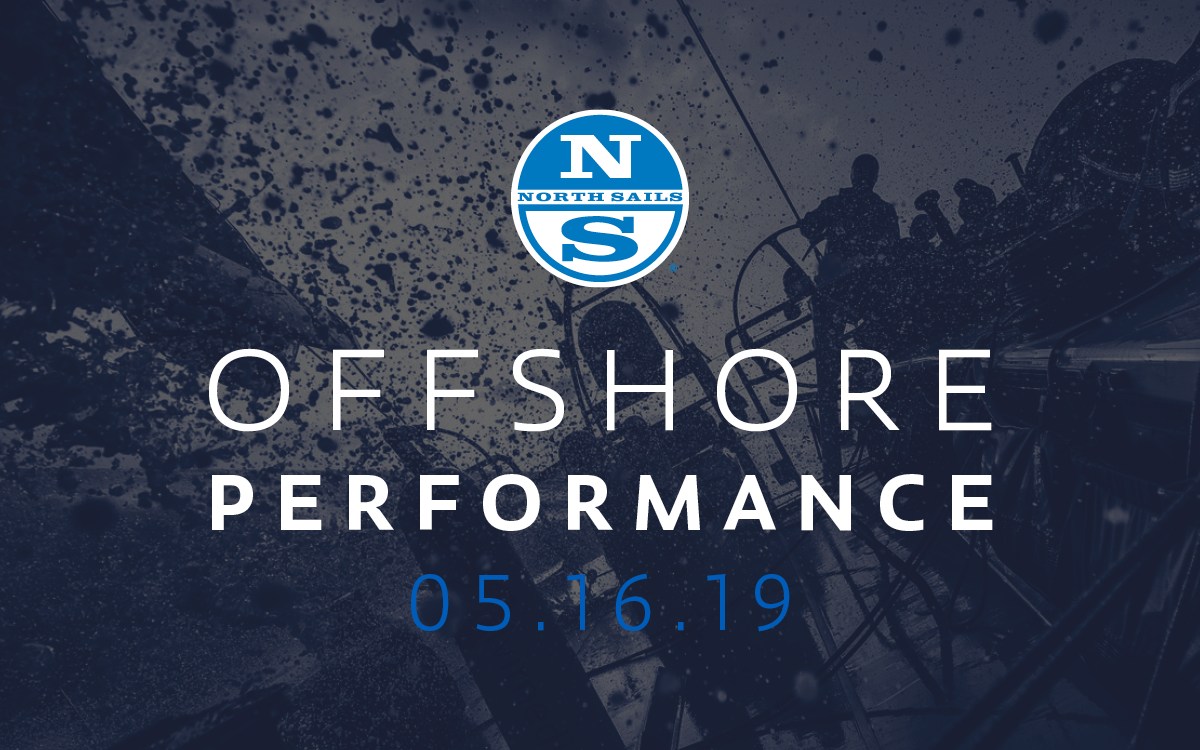
OFFSHORE PERFORMANCE WITH THE EXPERTS
GET READY TO GO OFFSHORE
Planning Ahead Is Essential
Planning on heading out into open waters? When racing offshore, sailors have to be prepared for anything and everything, and when the ocean tosses up a new challenge, it's what you have done to prepare that will be essential. North Sails expert and two-time Volvo Ocean Race Skipper Charlie Enright will be hosting an Offshore Performance Seminar on May 16th in our San Diego Loft, alongside Southern Californian local Peter Isler, who holds an armory of offshore racing records and America's Cup victories.
RSVP now and join us to talk directly with the experts and hear what they do to prepare for offshore adventures. From sail selection to squall management, Charlie and Peter can help you put together your offshore toolkit.
Sail Selection | Weather & Routing | Squall Management
Watch Systems | Food & Gear | Safety | Maneuvers | Communication
North Sails San Diego | Thursday May 16th | 6 - 9pm | Free Entry
READ MORE
READ MORE
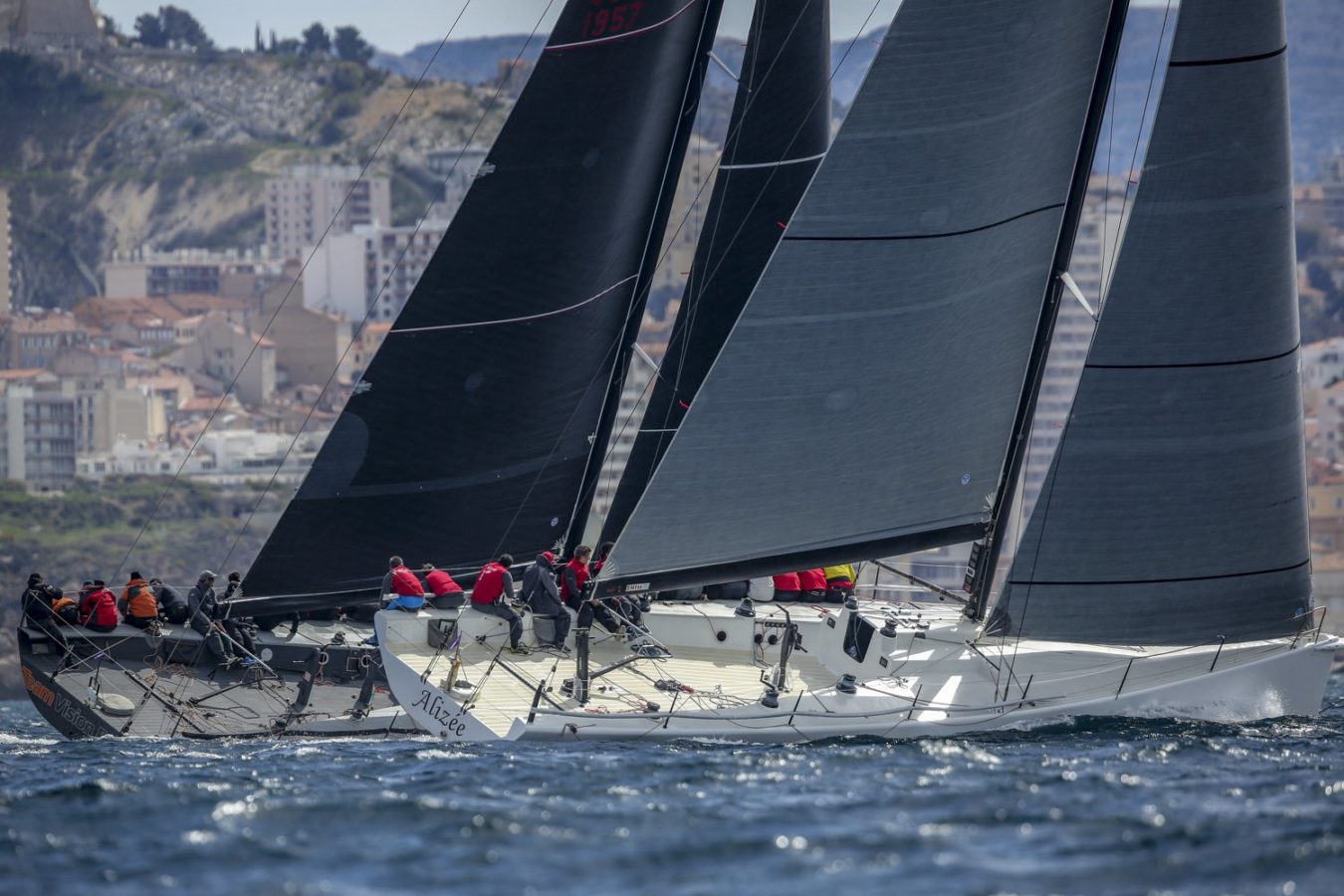
NORTH AU RENDEZ-VOUS DE LA 54 EDITION DE LA SNIM
NORTH AU RENDEZ-VOUS DE LA 54e ÉDITION DE LA SNIM
📸Piérick Jeannoutot
Tandis qu’en Bretagne en baie de Quiberon, les concurrents tirent leurs premiers bords de cette première journée du 41ème Spi Ouest-France-Destination Morbihan, de l’autre côté de l’hexagone, et plus précisément sur la côte est à Marseille, l’heure est aux derniers préparatifs avant le premier coup d’envoi de la 54ème édition de la SNIM.
La Semaine Nautique Internationale de Méditerranée se déroule également à Pâques, comme son cousin breton, du 19 au 22 avril 2019 sur la rade de Marseille. Comme chaque année, cette grande rencontre nautique, initiée par la Société Nautique de Marseille et parrainée par la Banque Populaire Méditerranée, ouvre le bal de la saison voile en Méditerranée.
Pour l’édition 2019, on compte près de 139 bateaux et plus de 1000 régatiers internationaux (5 nationalités représentées), professionnels et amateurs, regroupés en 10 classes qui s’affronteront sur quatre championnats (IRC équipages 0 à 4, IRC Solo, IRC Duo et Surprise). Afin d’ouvrir la régate à un plus grand nombre de marins, la SNIM accueille également pour la première fois cette année les J/70 dans la compétition. Parmi les voiliers en lice, nombreux sont ceux qui affichent le logo North Sails, et certains sont dotés de la nouvelle technologie Helix. C’est le cas des yachts Vision et Teasing Machine. L’équipe de service North Sails sera sur place pour assister tous les équipages en cas de besoin.
C’est en 1966 que la SNIM a vu le jour. Et au fil des années, l’évènement s’est imposé comme un rendez-vous incontournable de la voile en Méditerranée. La rade de Marseille attire de nombreux navigants, et pour cause son cadre idyllique, ses îles et ses conditions météo variées en font un véritable terrain de jeu nautique. C’est d’ailleurs sur ce plan d’eau privilégié que se disputeront les prochaines épreuves nautiques des jeux olympiques 2024.
📸 Piérick Jeannoutot
READ MORE
READ MORE
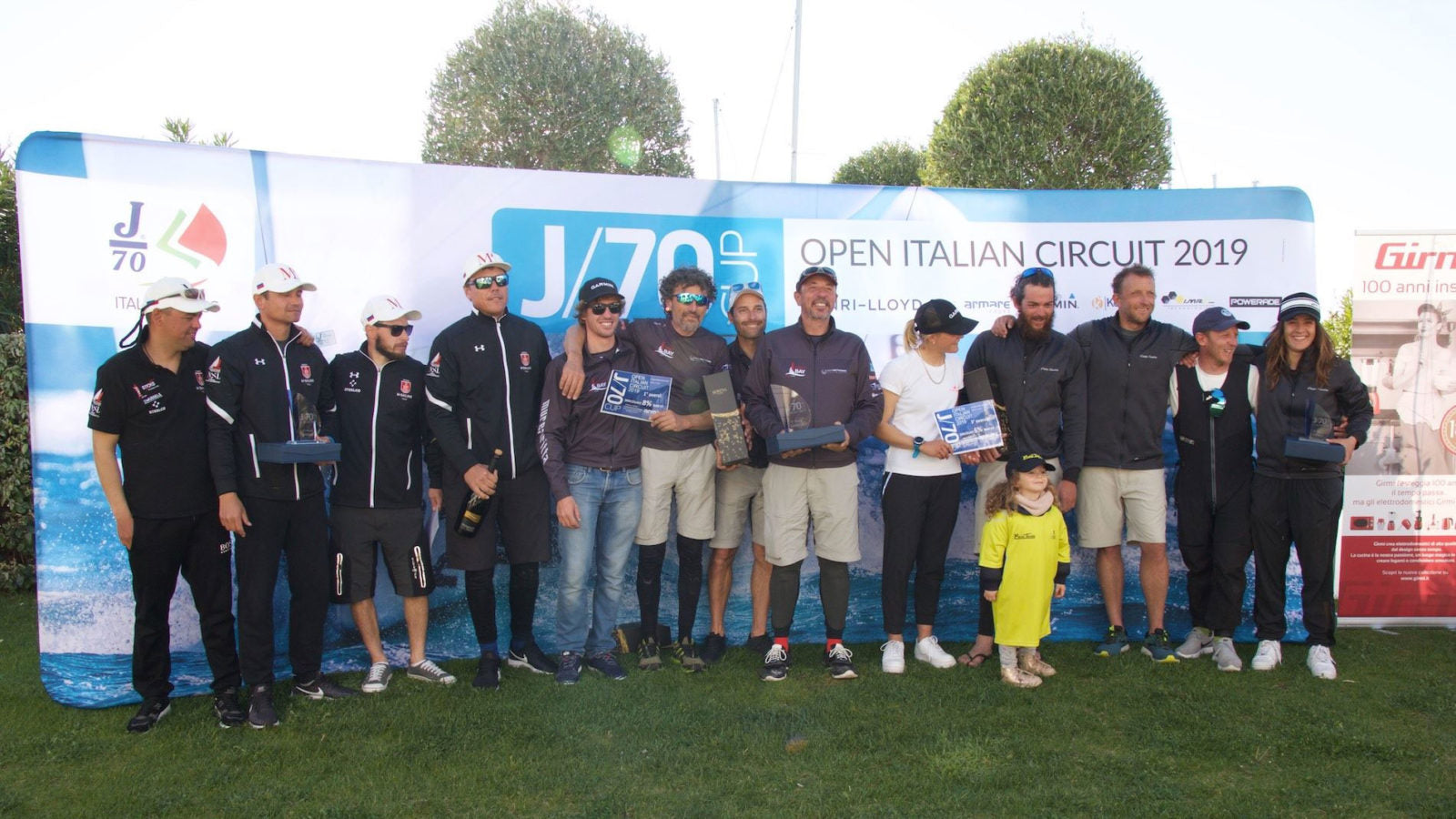
J/70 ITALIAN CUP: A STRONG START
J/70 ITALIAN CUP: A STRONG START
North Clients Sweep The Podium In Scarlino
1,2,3 powered by North Sails ©J/70 Class | Lucchi | Lucarelli
We saw a strong series kick-off at the inaugural event for the 2019 J/70 Italian Cup. Scarlino welcomed 52 competitive teams from nine different countries for a great weekend of sailing, friendship, and top-notch fun with parties that only Italians know how to throw. A huge congratulations to Carlos Alberini and team Calvi Network for winning the first event.
Here at North, we celebrated an almost-perfect scoreboard proving the high performance of the North products for the super competitive J/70 Class. Here’s the facts: A total podium sweep with all race-wins were powered by North Sails inventories. Eight out of the top ten teams used North products, placing 1,2,3,4,6,7,9, and 10th overall.
We caught up with our European J/70 expert Giulio Desiderato, who sailed on Claudia Rossi’s Petite Terrible that placed third overall. “We sailed five races in 4-7 knots. The top two teams were light, not more than 330kg, while we finished third with a team really heavy 370kg. This means that the North range of products has been successful in these light wind conditions covering a big range of crew weight”, said Giulio.
Inventories Used by The Top Teams
1st Place: Calvi Network – XCS-2 mainsail, J2-HC Jib and AP-1 AirX spinnaker
2nd Place: Maria – XCS-2 mainsail, J2-HC Jib and AP-1 AirX spinnaker
3rd Place: Petite Terrible – XCS-2 mainsail, J2-HC Jib and AP-1 Dynakote spinnaker
New F-1 Mainsail
With the recent addition of the new F-1 mainsail to the North inventory, we expect to see teams using it in the upcoming events of the Cup. Developed to fit the Selden mast or a Southern Spars mast with a stiff set-up, the new North Sails F-1 mainsail is a flatter design, balanced top to bottom that reacts to mast bend in all conditions. Designed to be user-friendly, the F-1 is easy to trim and tune, to produce maximum speed on the water. Read about the performance of the F-1 main at the 2019 Charleston Race Week.
The North team looks forward to seeing you in Ancona on May 10-12th.
For more information on the North J/70 products, don’t hesitate to contact our experts.
Starting line in Scarlino ©J/70 Class | Lucchi | Lucarelli
New F-1 mainsail tested and approved at Charleston Race Week.
READ MORE
READ MORE
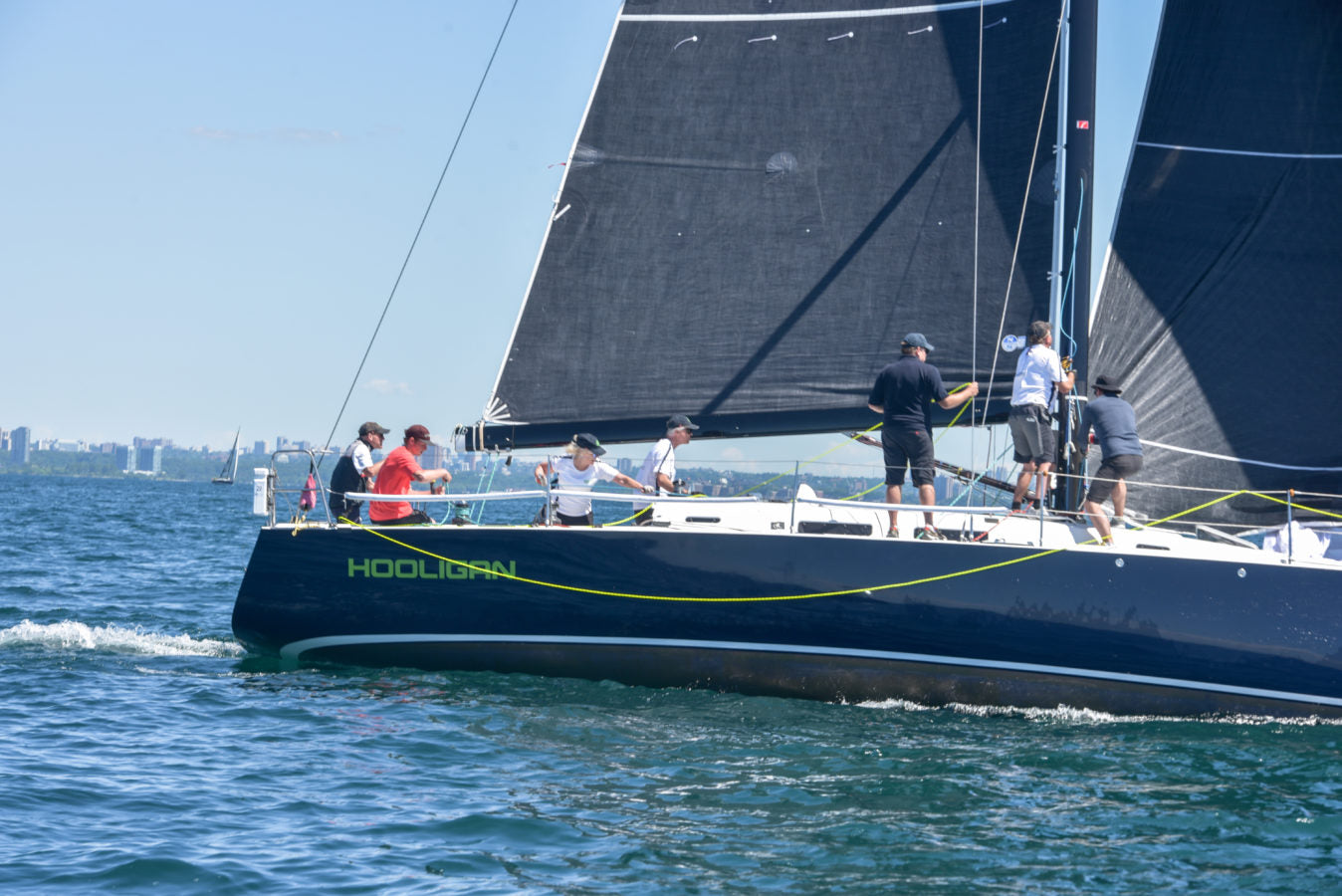
CUSTOMER SPOTLIGHT: HOOLIGAN
CUSTOMER SPOTLIGHT: HOOLIGAN
New Boat, New Suit Of 3Di
© Louisa Sonosky
Bruce Pierce of Mimico Cruising Club shares his process of creating the optimal sail inventory for Hooligan, a J/122, to race on the Great Lakes.
Bruce, Can you walk us through the thought process in terms of deciding on the sail inventory?
When we bought the boat, three and a half to three years ago, we had an existing inventory that was purchased with the boat. We made an evaluation kind of with North Sail Toronto's help, we made an evaluation of the existing inventory and then put a plan together in terms of what was good, what we could continue to use and prioritized sail inventory. At that point in time we prioritized a new main for the boat, and we did that in the first year as we bought the boat because we were putting a new mast on.
Would you say it's performance has been what you expected? Or would you say it's been above expectations?
Well, I hold North Sails to high expectations, so it's performing exactly the way it should. But I'm very comfortable with the quality of sail. Since then, when we bought the first 3Di, we then we bought my second one. My buddy who has the J160 out West, we were sailing on his boat, and I said to Dave, I said "You guys, even just cruising you need to go to a 3Di because you're gonna reduce onboard weight and minimize sail handling."
How would you say the sails have aided with the performance of the boat? You're doing a lot of the racing around here and then last year you went down to the U.S. as well.
Subsequently, we've been buying one sail a year for the last three years. We put a new main on, came back and bought a new light-medium jib which replaced one of the existing sails we had which was a panel sail. We knew it wasn't going to be in the best shape but we also took that sail and made it a jib top for us. We replaced the J1 and then we looked at our spinnaker inventory and started evaluating. Pierce also purchased a new A2 Asymmetric AirX spinnaker and a medium-heavy 3Di RAW jib.
© Louisa Sonosky
How do you think the crew has been with the new sails? Has their sail handling improved with the sails? Or was there a big change compared to the old boat and the older sails?
Certainly the performance in the sails is significantly different. What led us to the change in the J3 to a medium-heavy what was its weight, we had a panel sail that was ballistic. It's interesting, Brian and I were on the boat in the Chicago Mac race, and when you look at the Naval Academy sail up with the main, it doesn't slot properly. You can see that when you look at the 3Di inventory, the main and jib fit really well together.
You can trim so you get the same shape and the same drive and the sails were meant to be operated together. When we had the old J3 up, it was a different shape, a little flatter, ballistic. It will probably go on for ten years, if we use it every week because it's just hardened. But it was really tough to get the same shape, therefore you're not getting the same performance out of the boat. We're thrilled to see what the new shape looks like but we're confident because we built it similar to the light-medium and I know we'll get the same performance out of the boat.
What prompted you to go do the Chicago Mac last year? Was it always on your bucket list?
Yup. We did Transpac almost four years ago now, and personally I enjoy a lot of offshore racing and Transpac was one of those things where I was either going to finish the race and love it or hate it. I wasn't sure until we got to Hawaii and when I got off the boat in Hawaii it was like “Damn, I love that."
© Louisa Sonosky
What other races are on the horizon for you? What motivates you guys to keep going out and keep racing?
Passion for the sport motivates to keeps us out there racing and you know what, we'll probably look to do the Caribbean 600 and likely Newport Bermuda in the future as well. Maybe not in this boat but we'll certainly do it in the future.
What's your biggest piece of advice for people that are thinking about upgrading their sails?
Probably just having a plan in terms of what do you want to do. Not many people can afford to put out the price for three or four sails in year one. It's looking at your existing inventory, trying to figure out how you put it together and what's the plan. I think that's what we did. We sat down and said “Okay, what's our strategy going to look like?” Each year we went back and re-evaluated it and said “Okay, does this still make sense?” I think we moved one of the sail purchases around, we accelerated the spinnaker because we didn't like the shape we were getting out of it once we had seen it in action after we had the boat long enough.
© Louisa Sonosky
READ MORE
READ MORE
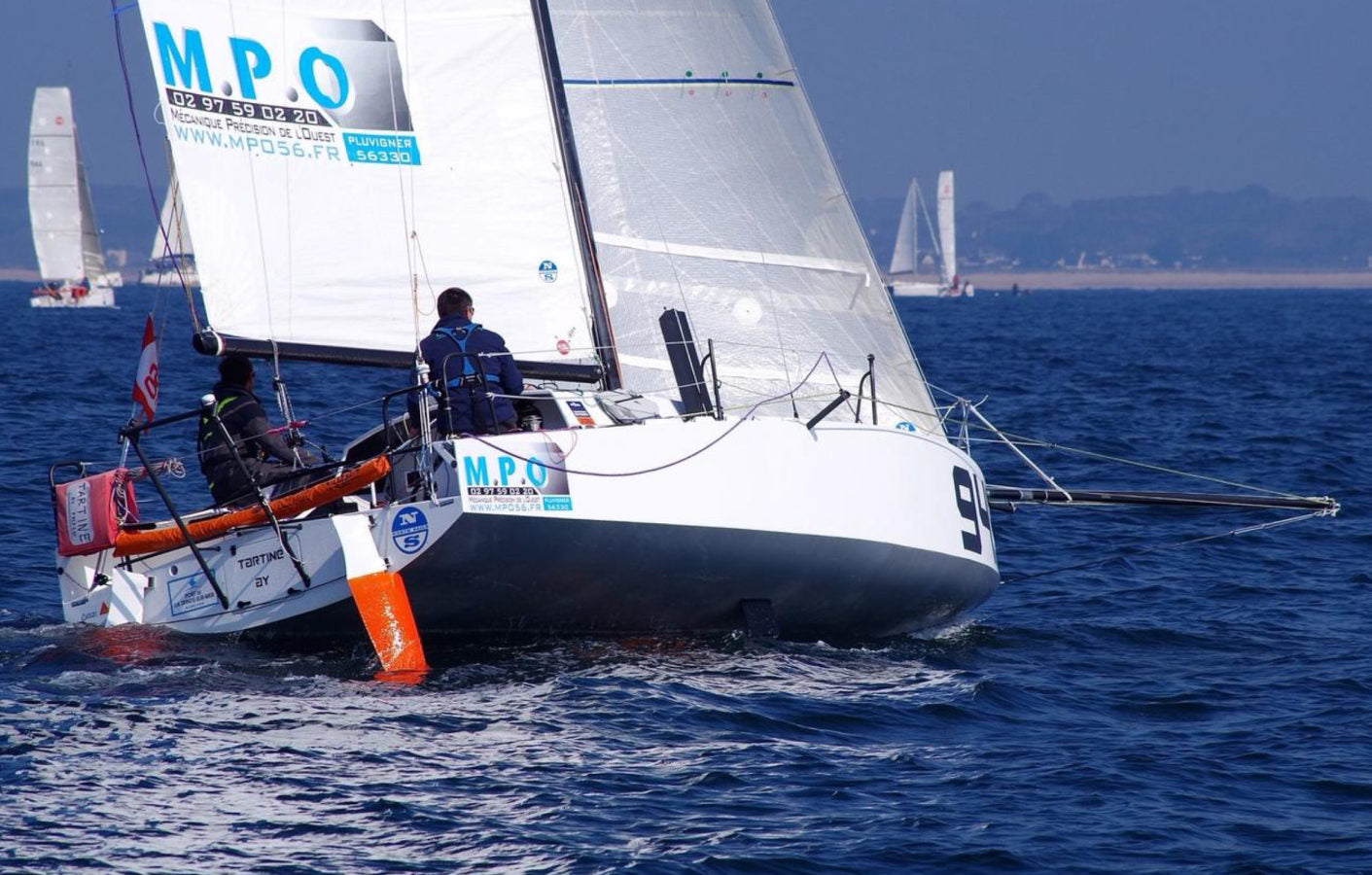
NORTH SAILS DÉJÀ PRÉSENT
NORTH SAILS DÉJÀ PRÉSENT
Mini 650, La Rentrée Des Classes
Ils ont passé leur hiver à s’entrainer, et le week-end dernier, 68 mini 650 faisaient leur rentrée scolaire lors de la ''Plastimo Lorient'' avec un parcours de 215 milles.
Le départ et le tour de l’île de Groix s’est fait dans des conditions estivales, dans une légère brise d’Est, puis les 68 duos sont allés virer une bouée au sud des Glénans dans une nuit bien fraiche.
Puis un long bord a emmené nos duos jusqu’à l’île d’Yeu, avant d’attaquer un retour express dans une nuit ventée, humide et toujours aussi fraiche jusqu’à Lorient. 20/ 25 nœuds au reaching, des pointes à 18 nœuds, de quoi avoir un sourire jusqu’aux oreilles.
Axel Tréhin et Clément Bouyssou à bord du n°945 (classement proto), s’adjuge une belle 3ème place, tandis que Hendrick Witzman et Simon Koster à bord du n°920 (classement série) s’offre la seconde place. Une belle performance, d’autant plus que Simon et Hendrick sont les seuls à placer un "nez pointu" sur le podium. Prochaine étape, la Pornichet Select, mais cette fois-ci en solo.
READ MORE
READ MORE
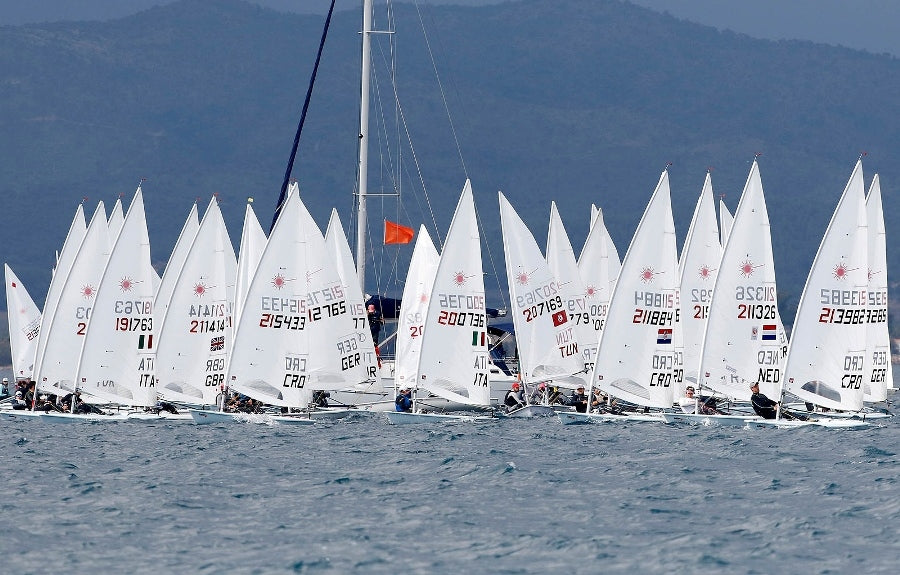
EUROPA CUP - FRANCUSKA
FOTO: PIERRICK CONTIN
Nakon tri regate Europa Cupa za 2019. godinu naši momci čvrsto drže svoje položaje na vrhu Laser Standarda i djevojke na vrhu Lasera 4.7, dok imamo još i predstavnike na postolju u obje kategorije Laser Radiala.
Stvarno impresivni rezultati ove generacije naših juniorki i juniora. Do kraja ciklusa ostalo je još sedam regata. Nama najbliže se jedre u Italiji i Mađarskoj, a posljednja će se tradicionalno jedriti na Hvaru. Za očekivati je da će naši laseraši preskočiti Europa Cupove u Norveškoj, Nizozemskoj, Bugarskoj i Njemačkoj, ali s nastupima na 6 od maksimalnih 10 regata sigurno mogu i dalje konkurirati za sami vrh.
Ali vratimo se regati u Hyèresu. Vrijeme im je bilo netipično za ovu lokaciju. Prva tri dana je bilo poprilično oblačno i bilo je i nešto kišice. Zadnji dan se razvedrilo, bilo je sunčano, a čak je u prognozi bio i nešto jači vjetar u odnosu na prve dane kad je puhalo uglavnom do desetak čvorova. Ali i posljednjeg dana je vjetar ostao jednake snage. Konkurencija u sve tri vrste lasera je bila stvarno brojna. U Standardima je nastupio 51 natjecatelj, u Radialu 197 i u Laseru 4.7 151. Stvarno impresivna slika, a jedan od aduta za masovnost je i činjenica da će se na istom regatnom polju za oko mjesec dana jedriti Europsko prvenstvo za 4.7.
Na regati smo imali 21 jedriličara i jedriličarku, od toga ih je četvero bilo u standardima, šestero u radialima i čak jedanaest u 4.7.
FOTO: PIERRICK CONTIN
Flota 4.7 je bila podijeljena u tri skupine. I u četiri dana regate ukupno su odjedrili 7 plovova. Od toga ih je 5 bilo kvalifikacijskih, a finalnih samo dva. Naši predstavnici su se ravnomjerno raširili po cijeloj floti, tako da smo u finalu imali po pet predstavnika u zlaznoj i srebrenoj floti i jednu jedriličarku u brončanoj.
Sad već tradicionalno, najbolja naša predstavnica je bila Ursula Balas. Kvalifikacije je otvorila pobjedom u svojoj skupini, a jednom ih je završila i na drugom mjestu. Najlošiji rezultat kvalifikacija joj je bilo 13 mjesto koje je na kraju mogla odbaciti. Svi ostali rezultati su joj bili unutar deset najboljih, od čega je u finalu završila kao 3. i 4. U konačnici je zauzela izvrsno treće mjesto u generalnom plasmanu, a u ženskoj konkurenciji regatu završava na drugom mjestu.
FOTO: PIERRICK CONTIN
Samo jedno mjesto iza nje, četvrto u genearalnoj sumi bodova, je finalno mjesto Roka Stipanovića. On i Ursula završavaju regatu s jednakim brojem bodova, a presudila je jedna Ursulina pobjeda. Njegov najlošiji rezultat u Hyèresu je bilo deseto mjesto!
Slijedeća naša predstavnica je po svom plasmanu bila Nika Manestar. Ona je završila na 18. mjestu. Vrhunsko jedrenje u kvalifikacijama i finiše unutar top ten zamijenila je s nedovoljno dobrim rezultatima u finalu. Nažalost po jedno 32. i 23. mjesto su je poprilično udaljili od vrha ljestvice.
Prvi idući junior je Antun Tomašević, ujedno i jedan od najmlađih predstavnika Hrvatske. Rezultatski gledano jedrio je dosta stabilno. Osim bljeska u drugom plovu kad je završio 6. i odbačenog rezultata, prosjek bodova mu je bio 17. mjesto, ali matematika ga je postavila na 28. mjesto.
Posljednja naša predstavnica u zlatnoj floti, Dora Gomerčić, doma se vratila s 38. mjesta. Analizirajući njene pojedinačne rezultate također se može reći da je pokazala kvalitetu i da nije slučajno jedrila s najboljima. Na kraju ju je od Antuna koji je završio deset mjesta bolje dijelilo samo 9 bodova.
Najbolji predstavnik u srebrenoj skupini je Luka Vuković. U ovoj konkurenciji završava na četvrtom mjestu, odnosno kao 55. generalno. Između njega pa do idućeg našeg jedriličara smjestilo se 26 jedriličara iz drugih država, 82. je završio Luka Fatović. Više bodova od njega su imali Roni Bobovnik (90. mjesto), Luka Hagenauer (94. mjesto) i Eleonore Borgin (97. mjesto), te Petra Mastelić (132. mjesto).
U najbrojnijoj floti, Laser radialu, također je bila podjela na tri skupine i odjedrili su jednak program kao mlađi i laganiji kolege. U jakoj međunarodnoj konkurenciji imali smo samo dvoje predstavnika u zlatnoj skupini. 63. je završio Frano Šestan, a dva mjesta iza njega povratnica u klasu, Karla Šavar. Frano je imao neloše rezultate u kvalifikacijama, ali kad se koncentrirala flota u finalu zauzeo je svoja dva najlošija mjesta na regati.
Karla je na kraju regate imala 5 bodova više od Frane, a dojam da je mogla mnogo bolje ostavljaju po jedan UFD i DNF ali i činjenica da je posljednji dan jedrila pod temperaturom.
Za razliku od zlatnih, srebreni i brončani su jedrili jedan finalni plov manje. Pri sredini srebrene skupine, na 102. mjestu završava Ivona Ercegovac, a na 110. mjestu Krešimir Buneta. Malo niže, u brončanoj skupini, kao 133. završava Mare Milić, te Nik Pivalica na 145. mjestu. Kao mala utjeha Mari može joj poslužiti podatak da je bila najbolja među brončanima.
I na kraju je ostala skupina čiji članovi u svojim planovima možda imaju i nastupe na olimpijadama, naravno, riječ je o Laser Standardu. U floti od 51 standarda jedrila su naša 4 jedriličara. Dvadeset drugi nakon osam jedrenja (s obzirom da je bila samo jedna skupina nije bilo kvalifikacija i finala) završava Alec Cvinar. Uglavnom su se svi finiši nalazili oko tog mjesta, a najbolji rezultat mu je 6. mjesto u četvrtom plovu.
Na sedamnaestom mjestu završio je najmlađi u ovom kvartetu, Antonio Lukšić. Najbolje jedrenje je pokazao u šestom plovu kad je završio 9. a u konačnici za 27 bodova bolji od Aleca.
Osam mjesta iznad njega, na 9. mjestu završava najveći tragičar ove regate, Mario Novak. Momak koji je apsolutno dominirao u floti, pobijedio dva puta i dva puta bio treći, a od postolja su ga udaljila dva UFD-a za redom.
FOTO: PIERRICK CONTIN
kvaliteti njegovog nastupa slažu se svi, od njegovog trenera, pa do ostatka hrvatskog tima:
Jedrilo se četiri dana i prevladavao je lagani vjetar do desetak čvorova. Mario Novak mi je jedrio fenomenalno, trenutno je u vrhunskoj formi. Pobijedio je na Europa Cupu u Kopru, na Palmi je prvi put u karijeri bio u zlatnoj skupini, do sada je uvijek jedrio u brončanoj. I evo sad je trebao pobijediti u Hyèresu, ali je napravio dva UFD-a. U jednom od ta dva plova je pobijedio, a u drugom je završio peti i eto da je regularno završio ta dva plova bio bi prvi. S obzirom na broj standarda na regati ni 9. mjesto nije loše, mislim, nije konkurencija bila kao na grade 1 regati, ali bila je stvarno dosta dobra. Dominik Perković iz Labuda je također izvrsno jedrio. On je na kraju pobijedio regatu. Jedrio je baš lijepo, konstantno, bez većih grešaka. Inače, sad smo se vratili s puta nakon mjesec i dva dana! Cijelo to vrijeme smo van Splita bili ja i Mario, a ostali su dolazili i odlazili ovisno o regati.
Ante Ćesić, trener JK Split
A Dominik Perković, na kraju najbolji u Laser Standardu, u principu je jedrio jednako kvalitetno kao i Mario Novak, samo što je bio oprezniji na startevima. Konačni zbir mu je dobiven od dva prva, tri druga, jednim trećim i jednim desetim mjestom, a DNF iz posljednjeg plova mu se odbacio.
Većinom je bio lagan vjetar koji je dricavao i lijevo i desno. Regatni odbor se maksimalno trudio i kao jedriličar sam stvarno zadovoljan trudom koji su ulagali u to da nam regatno polje bude kako treba, ali nekako je većinom uvijek vukla desna strana. Trebalo je startati uz brod Regatnog odbora. Imali smo i nešto kurenta, obično je bio nešto više lijevo od vjetra i bez vala. Ja i Mario smo dominirali i stalno bili među vodećima. Nažalost on je imao dva UFD-a i to je mene na kraju u ukupnim rezultatima diglo i u zadnjem plovu nisam ni trebao jedriti, ali nisam jedrio zbog jednog udarca, ne zbog bodova. Inače, bilo je i dosta penala, trebalo je stalno paziti gdje su suci i što radimo. Ja sam bio dobar pa nisam bio među kažnjenima. I moram još jednom reći da mi je žao Marija jer je stvarno vrhunski jedrio!
Dominik Perković, JK Labud
FOTO: PIERRICK CONTIN
I za kraj je par riječi od Dominikova trenera Vedrana Mandića:
Jedrilo se po laganom vjetru. Prva tri dana je bio problem što je vjetar stalno bio promjenljivog smjera. Zadnjeg dana je bilo malo više vjetra, ali Dominik je stalno jedrio bez greške. Konkurencija je uglavnom bila u obliku natjecatelja do 21 godine, a posljednjeg dana ju je pojačao nastup Švicarca (Meerceron Eliot) i Novozelanđanina (Deegan Luke). Inače je ta mlada konkurencija nama važna jer planiramo nastup na Europskom i Svjetskom prvenstvu za Standarde do 21 godine, a Dominik je jedrio superiorno u odnosu na sve te konkurente. Fizički je spreman, a jedino nije odjedrio posljednju regatu, jer se raniji plov udario u koljeno koje ga je počelo boljeti. Pa sam ja kao trener odlučio, znači ne zbog toga što je osigurao pobjedu, da se zbog udarca i otekline koja se pojavila povuče iz jedrenja i preventivno stavi led na koljeno. Na kraju se pokazalo da je srećom damo jedan udarac, ali nije bilo potrebe ulaziti u rizik. Što se tiče Antuna Tomaševića on je još mlad, a i više bi mu odgovaralo da je bilo par čvorova više vjetra, a konkurencija je bila izrazito jaka jer im je EP na istom mjestu za mjesec dana.
Vedran Mandić Baki, trener JK Labud
Konačne rezultate klase Laser Standard možete pronaći na ovom linku.
Idući tjedan u Betini će se organizirati službeni kamo HJS-a. Najviše se očekuje sudjelovanje jedriličara u Laseru 4.7, dok će se stariji natjecatelji koji su u završnim razredima srednjih škola možda malo više uhvatiti školskih obaveza da bi mogli rasterećeno otići na seniorsko Europsko prvenstvo u Porto.
A što se tiče uvoda u kojem smo spomenuli vodeće pozicije naših jedriličara na zajedničkim ljestvicama Europa Cupa, njih možete pronaći na ovom linku.sukošan
READ MORE
READ MORE
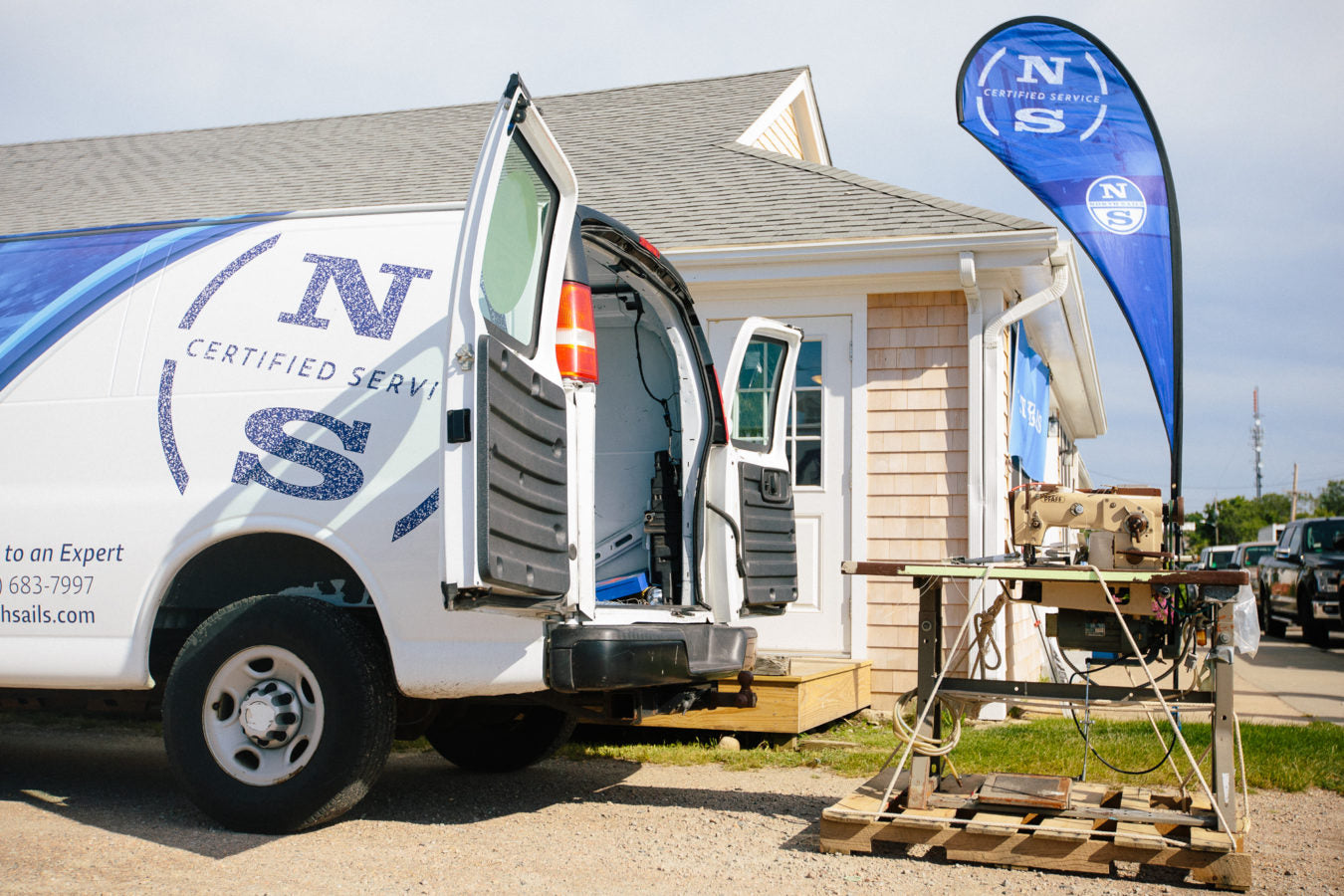
HIER KUNT U ONZE EXPERTS TIJDENS HET PAASWEEKEND VINDEN
HET WEDSTRIJDSEIZOEN GAAT WEER BEGINNEN
Hier kunt u onze experts tijdens het paasweekend vinden
Het wedstrijdseizoen gaat tijdens het paasweekend op 20 april weer van start. Voor de ORC/IRC klassen en sportboten begint het seizoen in Stellendam met de Van Uden Reco Stellendam Regatta. De Open boten varen de jaarlijkse Internationale Easter Regatta vanuit Loosdrecht. Heeft u tijdens een van deze evenementen vragen over uw North Sails zeilen of zijn er reparaties nodig? De experts van North Sails Benelux staan tijdens deze evenementen voor u klaar met service en advies.
Van Uden Reco Stellendam Regatta
Nic Bol en Jacco Huijgen varen mee op de Swan 45 K-Force in ORC 1. Wouter Köllmann vaart met zijn eigen J/70 PlaJ in de J/70 eenheidsklasse. Bart Overgaauw vaart mee op de J/109 Joule in ORC 2.
Paasei Wedstrijden
Joost Houweling vaart tijdens de Internationale Easter Regatta in Loosdrecht met zijn eigen Star.
Overnight repair service in Stellendam
Op zaterdagavond verzorgen de experts van North Sails Overnight Repair Service, zodat u, ook bij schade, op zondag met uw beste zeilen kunt varen. Neem contact op met Jacco Huijgen op +31(0)6 504 238 32 wanneer uw zeilen schade hebben. De Service bus vertrekt op zaterdagavond van het haventerrein om 18.00u.
READ MORE
READ MORE

STIG CONQUERED THE FLEET IN THE ULTIMATE COMEBACK
STIG CONQUERED THE FLEET IN THE ULTIMATE COMEBACK
Rombelli And Crew Triumph At The Melges 20 Worlds
📸 Zerogradinord
Starting a World Championship with a deep score can be tough, but it was no match for Alessandro Rombelli’s team STIG. Having 16 points on the scoreboard after just one race could be the beginning of the end for most, but it was no concern for the team. One thing that made the difference for Alessandro’s team from the rest of the fleet at the Worlds was their incredible speed. Because of that, they held it together and put the bad race behind them- as they did with the rest of the fleet in the nine races following to earn the new World title by seven points after one discard.
Having a major comeback is not always possible because each team is very competitive, but STIG pulled it off with flying colors with outstanding crew work the help of their new 3Di wardrobe. We spoke to the owner and skipper, Alessandro after the final result and got an idea of what his team did during the event to overcome a rough patch and turn around and win the championship.
📸 Zerogradinord
What difference do you notice using 3Di vs. your old 3DL?
“The new 3Di for the Melges 20 is much more effective. The shape holds perfectly, and is desirable in all conditions.”
It’s awe-inspiring you had a big come back in such a tight fleet. What did you do to clear your mind after the bad race on day one?
“We knew our team had the ability to be one of the top five teams at the Worlds. The first day we suffered an OCS, which was in the first start of the regatta. Although not a great way to start, we knew it was possible to overcome the obstacle. Being competitive with other teams and having great boat speed was our weapon. As it turned out, STIG was still in contention to win the regatta going into the final day of racing. With our great results in the last few races on Saturday, going into Sunday with a five-point advantage gave us the upper hand. Managing the fleet well was what STIG did best at the Worlds.”
📸 Zerogradinord
What was your strategy upwind? How did that affect your tactical decisions?
“Our strategy upwind was to have the best starts we could, trying to stay as conservative as possible. Avoiding the middle was also key, and by getting out to an edge, we could gain more leverage on our competition.”
“We used the new the new jib design developed by Giovanni Cassinari, with the help of Michele Malandra, who simulated the design with our membrane software with the help of North Sail Designer, Mike Marshall. The new 3Di Ji-4 jib was a great tool for our upwind performance.”
“The new 3Di for the Melges 20 is much more effective. The shape holds perfectly, and is desirable in all conditions. The new 3Di Ji-4 jib was a great tool for our upwind performance.”
What conditions did you find you did the best?
“Sailing with four crew put us on the higher-end of the weight spectrum. The conditions at first were not to our advantage. On the last day of racing, the conditions improved and there was more wind, which helped us win the first race of the day by a considerable margin.”
What were some contributing factors to your overall performance over the course of the event?
“Our team spirit, attention to detail, competence, and skills were contributing factors to our success at the Worlds. Francesco Bruni, Giorgio Torarolo, and Tea Faoro are a talented crew to sail with.”
Congratulations team STIG on a job well done!
Full results
📸 Zerogradinord
📸 Zerogradinord
📸 Zerogradinord
READ MORE
READ MORE
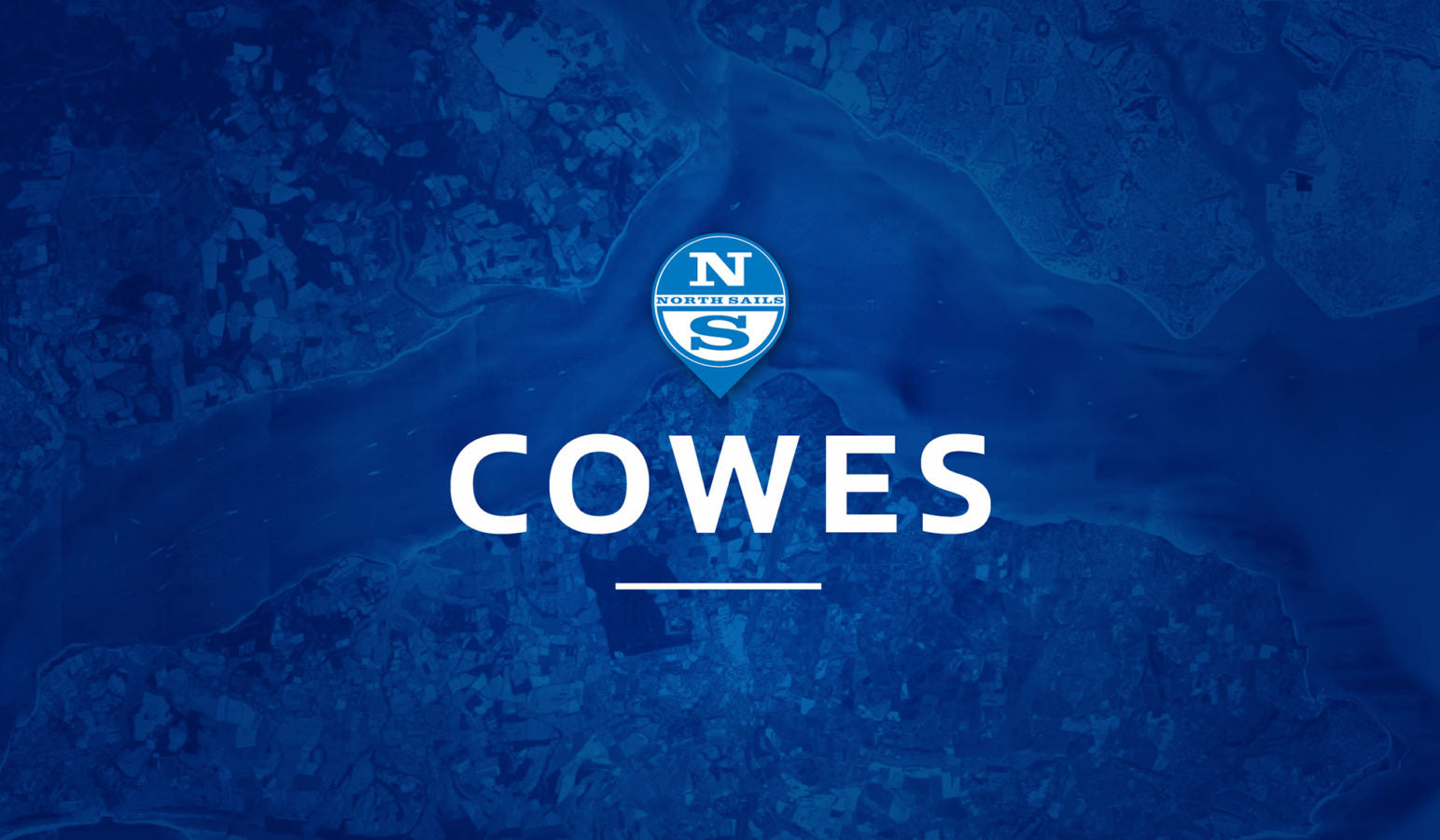
NEW COWES CERTIFIED SERVICE LOFT
NEW COWES CERTIFIED SERVICE LOFT
Now Open For All Your Sail Care Needs
Our new service loft based at Cowes Yacht Haven is open and ready for business ahead of the RORC Easter Challenge this weekend. With our on-site designer, sailmakers and sales knowledge, we aim to provide the best local service for you during the regatta and going forward.
North Sails expert Harriet Mason is based at the loft and with a several years of sailmaking experience, has the skill set and enthusiasm to deliver the best possible service to everyone - from Optimists to Grand Prix race boats.
With our prime location, we also provide overnight service, allowing us to work during regattas throughout the season.
READ MORE
READ MORE
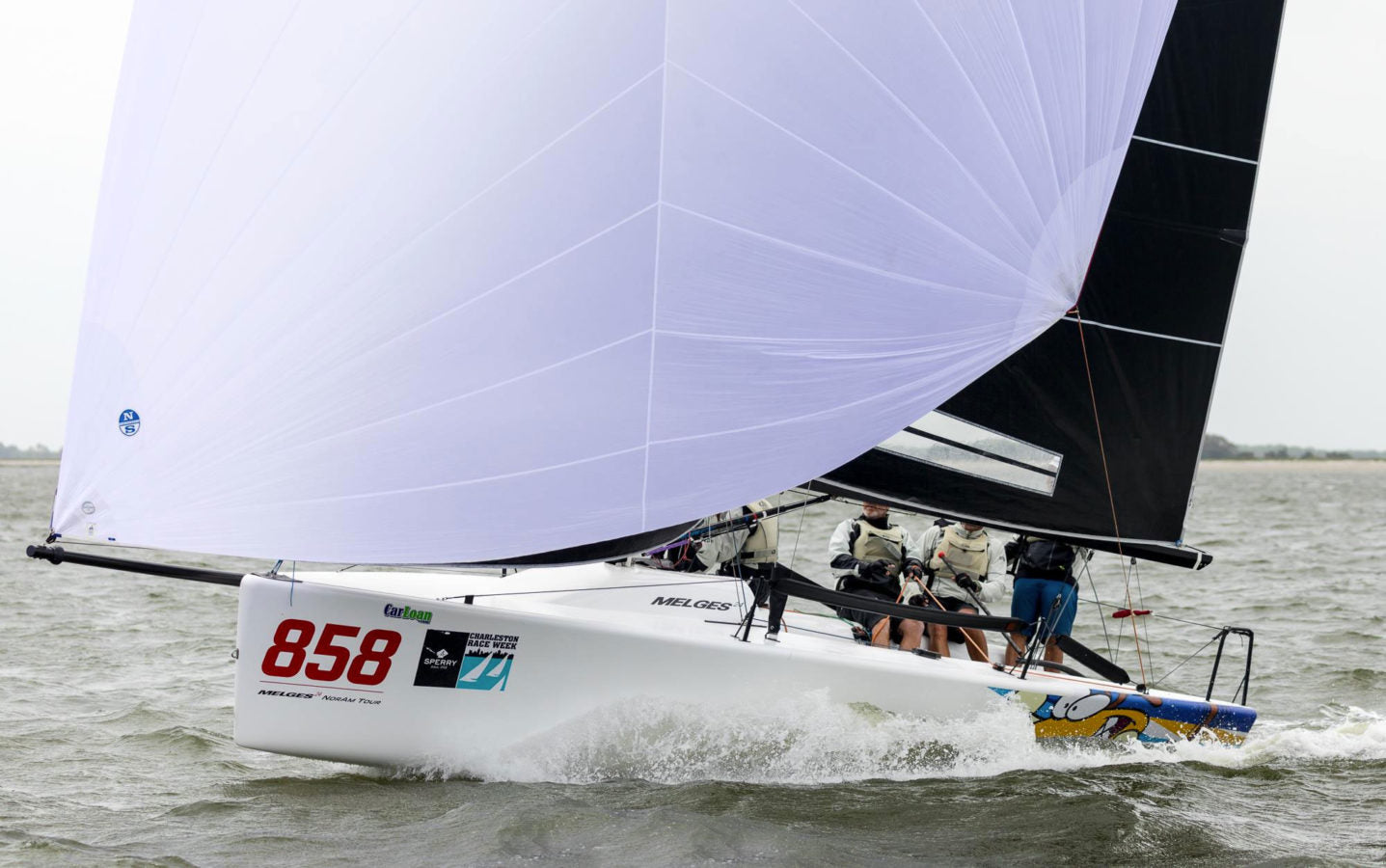
NORTH CLIENTS DOMINATE AT CHARLESTON RACE WEEK
NORTH CLIENTS DOMINATE AT CHARLESTON RACE WEEK
Podium Sweep In Six One Design Classes
Team Luck Dog, Sperry Charleston Race Week’s One Design Boat of the Week © Zerogradinord
In a dominant display of success, North Sails clients filled the scoreboard at the 2019 Sperry Charleston Race Week. Highlights from the weekend include a podium sweep for those using North inventories in six one design classes and top boats on nine out of the ten classes. Congratulations to North Sails clients for achieving victory across multiple fleets. Here are some highlights:
MELGES 24
Charleston Race Week has brought back a huge resurgence in the Melges 24 fleet with 37 boats racing, making it the largest Melges 24 regatta in the US since the World Championship in 2016 in Miami. We also saw a huge number of Corinthian teams at this event which is very encouraging.
The big North news in this class is the development of the new 3Di sails. We had three full sets of the latest designs on the water and they finished 1,2 and 5. Travis Weisleder and his Lucky Dog Race team tied with Bruce Ayres’ Monsoon to with the tie breaker, winning the event, and was also deemed Charleston Race Week’s One Design Boat of the Week. Monsoon and Lucky Dog have been working together for the past four years as tuning partners and have been the latest driving force in the development of the 3Di upwind product. Our Melges 24 experts have been working tirelessly with sail designers Per Anderson and Mike Marshall and the teams have been doing a lot of collaboration on rig tune. The good news is that the new 3Di designs seem to setup very easily and the tuning is very similar to the North standard paneled sails.
Heading to the Melges 24 Nationals in Fairhope, Alabama? Contact our Melges 24 expert John Bowden, who sailed on Lucky Dog, for the latest up-to-date information on the M24 sail development and boat tuning.
Buddy Cribb’s Victory, powered by the new North F-1 mainsail. © Zerogradinord
J/70
The J/70 class showed up strong for Charleston Race Week with fifty-six teams ready to battle for the win. The conditions were flat water, 10-20 knots of wind, warm and tight racing! There was a little bit of everything and all you saw were smiling J70 crews as the sailing was very fun!
We at North were especially excited to have the new F-1 mainsail, delivered in time for the event. The results couldn’t be better. All three teams using the new F-1 finished in the top 10 with a special highlight to Buddy Cribb’s team Victory, finishing in a strong third place. The F-1 mainsail is a design optimized for the stiffer masts. “We were very fast at Charleston with the new mainsail. We were able to hold our lane off the line, and sail fast both upwind and downwind. Sunday was particularly exciting downwind with winds gusting to 35 knots!”, said Buddy Cribb who finished third, one of their best results ever in the J/70 class.
North Sails J/70 expert Allan Terhune sailed with John and Molly Baxter, on Team Vineyard Vines. “We used the new F-1 main with a Southern Spars rig and the sail set up REALLY well since our rig is in the stiff side. We made a few adjustments to the tuning: For base, we used 16 on the uppers and 10 minus 1 turn instead of 2 on the lowers. Then we used the same tuning matrix in terms of steps as the tuning guide with the exception that we added one turn to the lowers in chart. So, instead of +2 and +1 on the lowers for the first step, we went +2 and +2. As the wind got stronger, we added one more turn to the lowers to keep the main from washing out.”
J/70 Takeways:
Sail Flat Upwind And Keep It Constant
We talk about this a lot, the J/70 loves to sail flat. To achieve this communication is the key factor. The mainsail trimmer and driver need to know when puffs and lulls are coming, to keep the boat on its tracks. Good communication allows the trimmer to make the necessary adjustments and the driver to steer the boat. It was key at Charleston for the driver to proactively steer to keep up with the big shifts and the puffs.
Jib Trim
Because the wind was up and down, the jib needed to be adjusted a lot. We generally focus on the leeward sheet and halyard and keep the in-hauler on when using the J-6 jib.
Know Your Downwind Modes
It was tricky to know when to wing, plane or sail normal displacement mode in Charleston. Again, the key was good communication in order for the team to do their best to position the boat in the breeze and in the correct mode. Only with true teamwork we can achieve this.
VX ONE
The North Sails team, coordinated by sail designer Mike Marshall and expert John Bowden, held a North Sails Tuning Guide release and Q&A session prior to racing day sharing the latest tuning information for the VX ONE. On the race course we want to congratulate Michelle Warner and team Tudo Bem for the great, consistent results in such variable conditions we saw in Charleston. All top four boats used North Sails in the VX class.
North Sails Results:
Kevin Mccarthy’s Chance V, winner in the Viper 640 class. © Zerogradinord
Henry Brauer’s Rascal powered by the North XCS-2 mainsail, J2HC jib and AP-1 spinnaker featuring a cool new graphic. © Zerogradinord
READ MORE
READ MORE
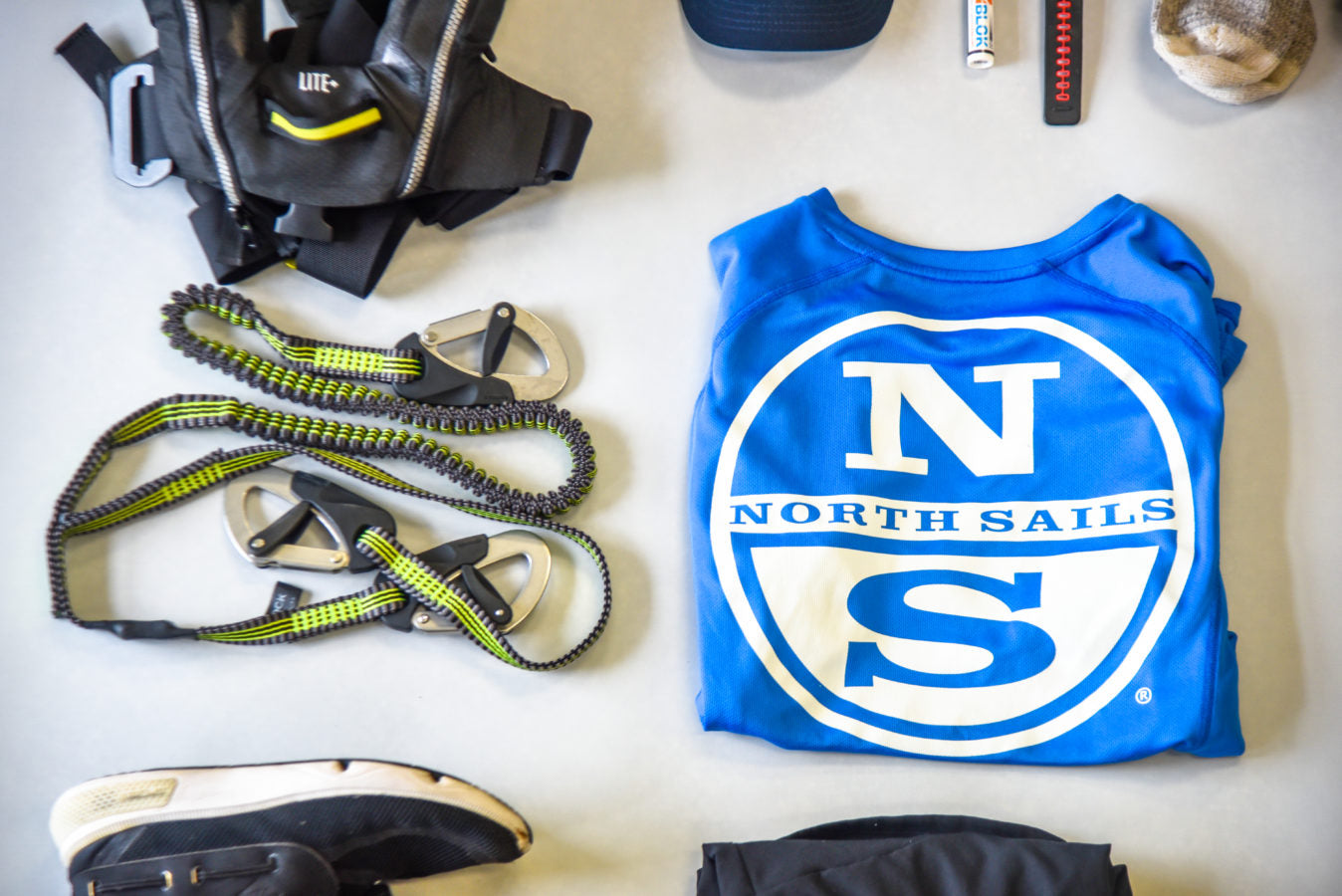
WHAT'S IN YOUR KIT?
WHAT'S IN YOUR KIT?
Here's What To Bring On Your Next Adventure Around The Racecourse
Long-distance racing is one of my new favourite ways to enjoy this sport. Having put a few of these races under my belt in the past couple years, I’ve pared down my kit to the essentials, including a couple indulgent items that I like to bring as well, space permitting. Your boat will likely have a size restriction of the bag you bring, so find out before you pack your largest suitcase with every piece of sailing gear you own, “just in case”.
Outside The Bag
Good foulies. I spent the 2018 Caribbean 600 in a pair of pants that were no longer waterproof. Even in the tropics, I was cold and miserable.
Boots: unlike day racing, once your feet get wet out there, they can stay wet until you’re over the finish line (ew!)
Life jacket with tether, if not provided by boat.
Inside The Bag
Base layers: I have a set of 100% silk layers that I love, but merino wool is the popular choice. Natural, wicking materials are your friend here. It gets cold at night, even in the summer or in the Caribbean.
1 pair of long pants: I bring a pair of lulus that I wear over the silk if it’s really cold.
1 pair of shorts: Fast-drying, comfortable shorts. If you can get a pair with a padded rear, do it.
2 T-shirts: I prefer long sleeved UV shirts, especially on wetter boats where my sunscreen might not last long.
1 sweater to layer at night.
Wool socks: I also bring my layering socks (made for skiing), for super cold nights.
Gloves, and if you’re in colder weather, bring waterproof ski gloves, especially if you're driving!
Small Items
Baseball cap and/or a toque. Nothing is worse than being sunburnt on your scalp or freezing.
Sunglasses. The raccoon eyes tan is always in.
Sunscreen or a Zinc stick. Reapply often.
Chapstick. There's nothing worse than chapped, salty lips. I put one in every pocket of my jacket.
A sailing knife for safety.
Extra hair elastics and a comb. Missed this once, 5 days later my hair was a salty matted mess. If you have long hair and want to keep it, don’t forget this one.
Baby wipes. Baby wipes. Baby wipes. You will probably use these to shower.
Bonus
Coffee! This is my one non-essential / essential item that I always bring with me… Now. I learned the hard way that the provisioning isn’t always perfect; we ran out of coffee in the last two days of my first delivery. I’ve brought my own coffee since, just in case.
I don’t bring a reusable water bottle. This seems counterintuitive in 2019, but unless your boat has a drinking fountain on board, you’re probably going to be drinking out of single use bottles. I bring a thermos-type bottle for coffee, if the boat doesn’t have them for crew.
READ MORE
READ MORE
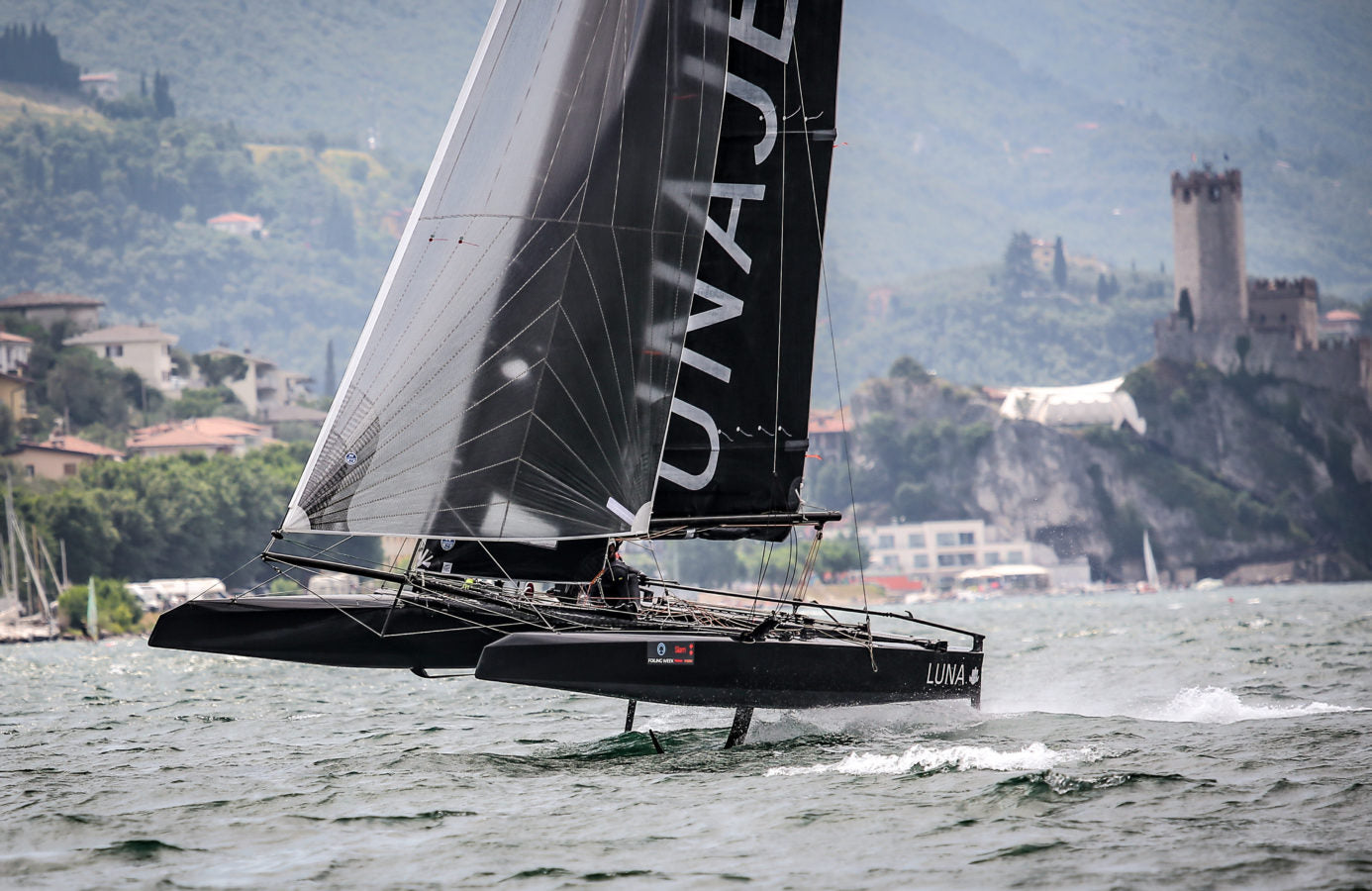
NOUVELLE CLASSE DOTÉE DE VOILES NORTH SUR LE SPI OUEST
NOUVELLE CLASSE DOTÉE DE VOILES NORTH SUR LE SPI OUEST
© Giovanni Mitolo
L’incontournable épreuve de voile du week-end de Pâques réitère son rendez-vous annuel pour la 41ème fois. Le Spi Ouest-France Destination Morbihan se disputera sur quatre jours du 18 au 22 avril 2019 à la Trinité-sur Mer en baie de Quiberon. Ce grand rassemblement trinitain réunira de nombreux passionnés de voile, professionnels comme amateurs, répartis sur différentes catégories de bateaux, du monocoque au multi en passant par les voiliers de séries IRC et les monotypes.
ETF 26 : Nouveau Souffle sur le Spi Ouest
Cette année, les organisateurs apportent un nouveau souffle à la compétition en ouvrant les portes à une toute nouvelle flotte de catamarans volants en carbone : les Easy to Fly ou ETF 26. Ces sport boats à foils de 7,93 mètres, dessinés par Guillaume Verdier et équipés de voiles North Sails, ont été conçus par la société Absolute Dreamer de Jean-Pierre Dick, ancien skipper de St-Michel Virbac et quadruple vainqueur de la Transat Jacques Vabre entre autres. Les ETF 26 peuvent atteindre deux fois et demie la vitesse du vent et dépasser les 35 nœuds. Compte tenu de leur vitesse élevée, un rond de course leur sera spécifiquement réservé. Le Spi Ouest sera donc leur première régate de série. En effet, la classe ETF 26 envisage de se constituer un championnat dont l’un des objectifs est d’offrir aux navigants l’opportunité de faire leurs gammes sur un support volant en attendant la construction de leur Imoca ou Ultim.
Parmi les autres séries en lice représentées sur le Spi Ouest 2019, on trouve les Diam 24, les Multi 2000, les IRC 1 à 4, les IRC Double, les First 24, les First 31.7, les Figaro 2, les Grand Surprise, les J/70 et J/80, les Mach 6.5, les Mini 6.50, les Open 7.50 et 5.70, ainsi que les Osiris Habitable.
Depuis sa création en 1978, le Spi Ouest n’a cessé de prendre de l’ampleur en attirant un grand nombre de marins français comme étrangers. Organisé par la Société Nautique de La Trinité-sur-Mer et parrainé par le quotidien Ouest-France, cet événement populaire est aujourd’hui considéré comme la plus grande régate de voiliers habitables en Europe. Plus de 420 bateaux et des milliers de régatiers s’affronteront pour l’occasion dans des conditions météo prévues favorables. De quoi réjouir concurrents, visiteurs et organisateurs.
READ MORE
READ MORE
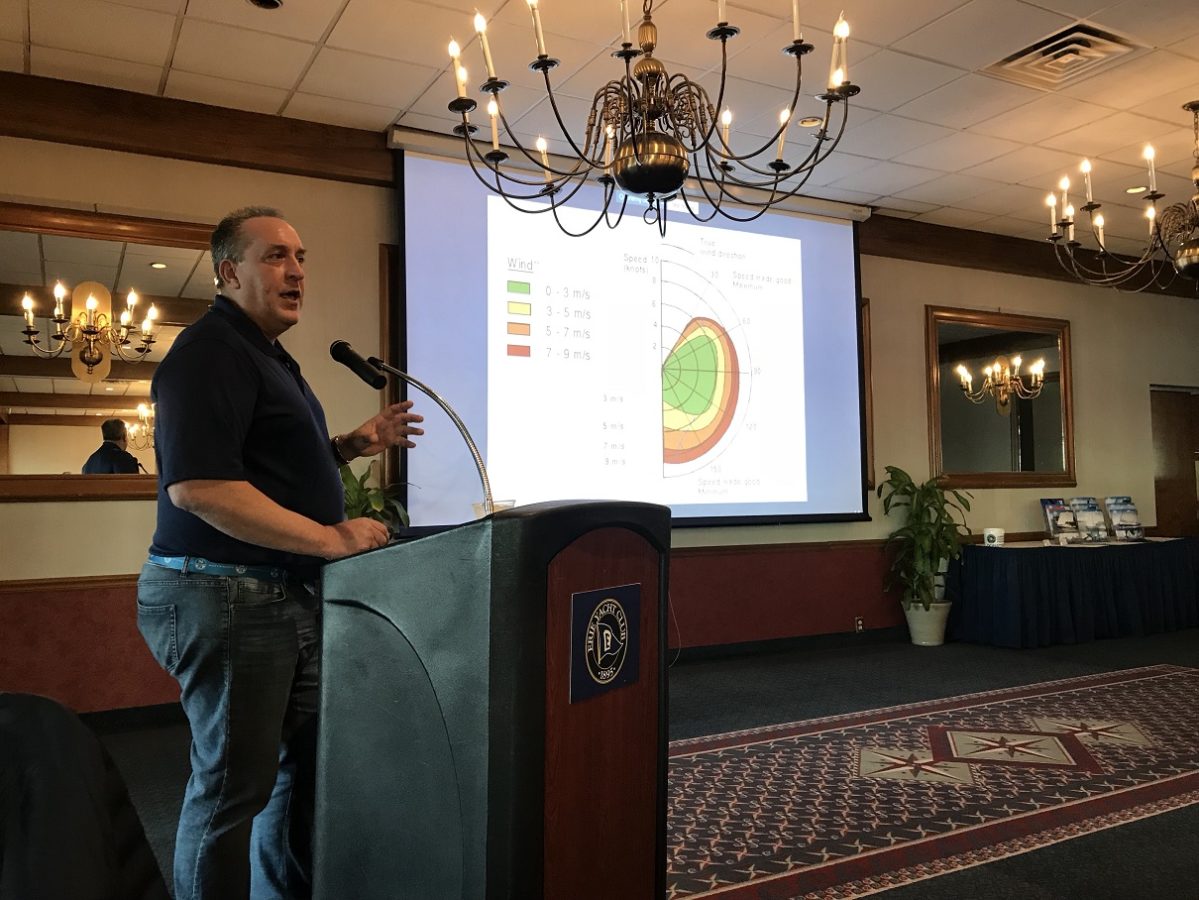
ON THE ROAD WITH NORTH SAILS DETROIT EXPERTS
ON THE ROAD WITH NORTH SAILS DETROIT EXPERTS
Local Seminar Circuit Team Travels To Erie, Bay City, Westshore, and Edgewater Yacht Club
It has been a busy few weeks for North Sails Detroit as we took to the road and did a hand full of seminars throughout the region. On the evening of March 26th, Loft Manager Karl Kuspa gave a presentation on downwind sailing (asymmetric and symmetrical) at Erie Yacht Club. Approximately 65 people attended the event. The event was well received and we are always happy to hear the feedback.
“Last night’s presentation was fantastic. Karl gave us great information that we will use next time we sail."
-Jeff Benson
The following night, Karl made his way to Bay City Yacht Club to join up with local dealer Joe Parker to present on downwind trim. The event drew about 35 people. “It is so much fun doing presentations with Joe” states Karl, “he has been doing this a long time at is a wealth of knowledge for the Bay City Area”
“I’m more likely to get my chute out of the bag"
-Aaron Ackerman
Next up, Skip Dieball headed to West Shore Sail Club on April 4th as guest speaker. Skip was asked to talk about Sail Technology. A crowd of approximately 35 people showed up to hear Skip speak from him years in the industry. The biggest takeaway from this talk was the importance of matching the best materials and construction to your type of sailing and budget.
Ryan Lashaway, our Cleveland representative was the final guest speaker, drawing a crowd of close to 70 people at his home club, Edgewater Yacht Club. Ryan covered three very different topics including rig tune, starting tactics and jib and main racing, showing expertise in a number of different areas of sailboat racing.
“I am so happy that our Team is out there helping improve the sailing throughout our region. We have a wide range of expertise within our organization. It is fun to see each other’s strengths and weakness’ and how we can help each other. It’s really like that not only with in our region, but company wide.
- North Expert Karl Kuspa
As we have tried to do all winter, we asked for donations for a local sailing group. Thank you to the attendee’s for the monies raised to benefit Erie Yacht Club Junior Sailing Program and Saginaw Bay Sailing Community Center.
READ MORE
READ MORE
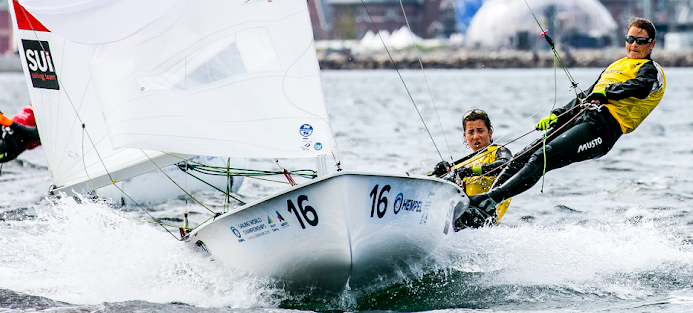
NEWSLETTER LIMA SAILING TEAM
NEUIGKEITEN VON LINDA UND MAJA
Auf Ihrem Weg an die nächste Olympiade im 470er
Newsletter_frühling_19
READ MORE
READ MORE

NORTH EXPERT WILL WELLES SNATCHES J/24 NORTH AMERICANS
NORTH EXPERT WILL WELLES SNATCHES J/24 NORTH AMERICAN TITLE
Sailing In Valle de Bravo Creates The Ultimate Experience
Will Welles and Team Bruschetta, 2019 J/24 North American Champions. © Chris Howell
Story by Will Welles
If you ever get invited to go sailing in Mexico make sure you clear your schedule as the Mexicans have it down on how to run a regatta! They welcome out of towners with open arms and roll out the red carpet, making everything on shore easy and relaxed- which feels like a vacation.
The 2019 North American Championships were held at “the lake” which is Valle de Bravo, a piece of heaven on Earth. The lake is about a two-hour drive from Mexico City and located high in the mountains. Many teams (local and from away) used the Mexican Nationals as a tune up for the North Americans as it was held in the same venue the weekend before. Our team used the Monday between to relax, catch up on work and see the town. On Tuesday we went straight into race one of the NAs. Don’t get me wrong, the mornings were pretty relaxed as the breeze doesn’t come in until the afternoon with the first warning signal around noontime.
“Valle de Bravo “the lake” in Mexico is a piece of heaven on Earth.”
The Conditions
Basically, the wind blows from the same direction every day in Valle de Bravo. The cloud cover determines if the breeze comes at all or how quickly and strong. On a clear day (which most days seem to be pretty clear in Valle de Bravo) the wind comes right on time. After the Nationals the away teams had figured out that we had to protect the right side, it seemed to work nine times out of ten, once in awhile the left would work and you had to commit till the end. The wind velocity was up and down, lots of gear changes and decisions about the rig tension between races. At the bottom of the course it was typically 6-8 knots and at the top of the course it was 10-12, sometimes a little lighter at the bottom and a little stronger at the top.
Rig Tuning
With pretty flat water we figured it wouldn’t be awful to be a little tighter on the rig but the lulls were big and long. We pretty much stuck at base (20 on the uppers and 15 on the lowers, Loos model B tension gauge) 90% of the time. A couple races early on we sailed one step up and a couple more races we sailed at a half step in between. Towards the end of the North Americans it seemed to be a little lighter so we just sailed at base, it was pretty nice in the light stuff and we had the backstay to pull on at the top of the course in the breeze.
Shifting Gears
We received lots of questions shore side about gear shifting. Here is how I think about it:
Crew hiking hard
Traveler down
Backstay on
When you run out of backstay go to vang sheeting
Ease Genoa in the big puffs. (along with main)
Pull genoa cunningham on in the big puffs. You want to set the halyard for the lulls to keep you powered up
*(Reverse in lulls for max power)
The key is keeping the boat flat in the puffs and powered up in the lulls. A big shout out to my team, Aroldo de Rienzo, Rich Bowen, PJ Schaffer and John McCabe. It was a memorable trip to Mexico!
J/24 Mexican Nationals – 1, 2*, 3, 4, 8, 9 powered by North Sails. Congratulations local Ken Porter, 2019 Mexican National Champion.
J/24 North Americans – 1, 2, 3, 4, 6, 8 powered by North Sails. Congratulations Will Welles.
Learn more about North products for the J/24 Class.
Local Ken Porter, crowned the 2019 Mexican National Champion, finished 3rd at the NAs © Chris Howell
Tony Parker’s Bangor Packet, 2nd Place at the NAs. © Chris Howell
Team Baba Louie, going fast at the North Americans and finishing 4th place overall. © Chris Howell
READ MORE
READ MORE
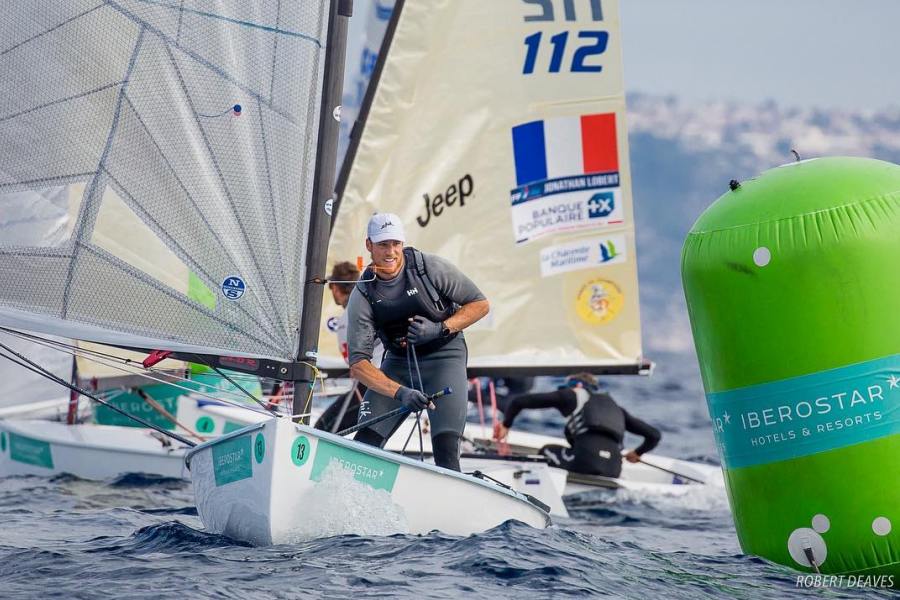
50. TROFEJ PRINCEZE SOFIJE
50. Trofej princeze Sofije
FOTO: ROBERT DEAVES
Među jedriličarima regata poznata samo kao "Palma", ove godine Mallorca je po 50. put bila u statusu Europskog, a možda čak i svjetskog proljetnog centra jedrenja.
Jedrilo se u deset različitih klasa, od čega je Hrvatska imala predstavnike u čak sedam. Tako su naše djevojke jedrile u 49erFX, Laser Radialu i RS:X, dok su se momci nadmetali u 49eru, Finnu, Laser standardu i RS:X. Jedino nismo imali predstavnike u klasi 470 i u Nacri.
Pa krenimo po redu koji sa svojim rezultatima već dugi niz godina nameću laseraši kao najtrofejniji kolektiv. Slično je bilo i ove godine, a naš najbolji predstavnik u ovom olimpijskom samcu je bio Filip Jurišić. Njemu i još četvorici naših laseraša konkurencija je brojala još 182 jedriličara iz više od 50 država!
Njihov program se sastojao od deset jedrenja za cijelu flotu. Četiri prva plova su bila kvalifikacijska, a preostalih šest finalnih i za kraj je deset najboljih odjedrilo medal race. Flota je stalno bila podijeljena u tri grupe, naravno u finalnom dijelu na zlatnu, srebrenu i brončanu flotu. U zlatnoj su osim Filipa jedrili još Tonči Stipanović koji je regatu završio kao 14. te Mario Novak koji je na kraju bio 58. A dva naša najmlađa lasera na Palmi, Bruno Gašpić i Alec Cvinar završni dio regate jedre u brončanoj skupini i završavaju regatu na 150. i 151. mjestu.
Filip je regatu otvorio s dva treća mjesta, te 7. i 20. To mu je bilo više nego dovoljno za zlatnu skupinu u kojoj je osvojio po jedno 5. i 8. mjesto, dok je u preostala četiri plova bio nešto lošiji. Evo što nam je ispričao o svom nastupu:
Konkurencija je bila najbrojnija ikad. Do sada nisam jedrio u brojnijoj floti! Regata je bila iznimno teška sve dane. Puhalo je od laganog, pa do stvarno jakog vjetra... provodili smo dosta vremena na moru jer su bile tri grupe, pa je bilo dosta čekanja. Taktički je također bilo zahtjevno, ali na kraju sam vrlo zadovoljan odrađenim unatoč nekim greškama koje su posljedica prve velike regate u sezoni. Realno, koliko god da je bilo natjecatelja na Velikoj nagradi Mornara i PH ovdje je konkurencija bila na puno višem nivou. Ovdje je cijela grupa od po više od 60 jedrilica bila brza. Također nam je i polje bilo relativno kratko, a s obzirom na broj konkurenata to se ne može simulirati na treninzima. Zadnja regata ovog kalibra nam je bila u rujnu, a Miami smo ove godine ciljano izbjegli. U konačnici nemam što reći i zadovoljan sam svojim nastupom. Na medal raceu smo imali više od 20 čvorova vjetra i uvjeti su mi stvarno odgovarali, jer smo na brzini dosta radili ovu zimu. Tu sam završio na drugom mjestu... u zadnjoj krmi sam izgubio jedno mjesto.
Filip Jurišić, JK Mornar
FOTO: SAILING ENERGY
Što se tiče Filipovog klupskog kolege Tonča Stipanovića, on je bio nešto lošiji u kvalifikacijama, ali zato mnogo bolji u finalnom dijelu regate. U šest finalnih plovova četiri puta je završio u top 10, ali kombinacija 47. mjesta i BFD-a iz kvalifikacija ga je zaustavila u desetom plovu i ovaj put se nije priključio Filipu u medal race-u:
Sebi dajem neku srednju ocjenu. Ne računajući Prvenstvo Japana u studenom, zadnja prava regata nam je bila u rujnu. Tako da je trebalo malo da pohvatamo sve, pogotovo što se tiče starta. Prvog dana nam je i polje bilo dosta kratko, cijela regata je trajala 35 minuta na flotu od 64 broda. Mislim da je orca trajala oko 7 minuta, a race officer (glavni sudac na brodu Regatnog odbora, Brazilac) ima neobičan običaj puštati i nepravilne starteve. Oni koji ga dulje poznaju znaju to njegovo ponašanje pa preuranjeno startaju na sredini linije, jer on kao one koji su preuranjeno startali zapiše samo nekoliko brodova koji su najbliži njemu. Tako sam nastradao u trećem plovu iako sam startao među zadnjima, ali mi je greška bila što sam bio uz brod RO-a. Kad smo to shvatili morao sam promijeniti taktiku, ali teret tih velikih bodova daje dodatni pritisak na nastavak regate jer se sad baš svaka daljnja regata računa (samo jedno je odbacivanje). A medal race mi je pobjegao u 8. plovu. Nakon gatea smo se ja i Gašo odvojili, on je išao desno, ja lijevo, pala je totalna bonaca, a kad se vjetar ponovno vratio ja sam bio na krivoj strani i završavam 47. U kasnijim analizama, u slučaju da se može napraviti jedno odbacivanje u finalu, imao sam drugi najbolji rezultat finala, ali što je tu je.
Tonči Stipanović, JK Mornar
Treći naš predstavnik u zlatnoj skupini, Mario Novak, izvrsno otvara regatu. Prva dva plova je 12. i 9. i već se tada moglo vidjeti da bi regatu mogao nastaviti u zlatnoj skupini. u trećem i četvrtom plovu je bio nešto sporiji, ali na kraju je suma bodova bila dovoljna da se kvalificira među najbolje laseraše na Trofeju princeze Sofije.
U grupi u kojoj je bila koncentracija najboljih laseraša na svijetu ostvaruje rezultate između 33. i 55. mjesta, a jedina tamna mrlja mu je BFD u 8. plovu, kao kod Stipanovića. Na kraju solidan 58.
Što se tiče Bruna Gašpića i Aleca Cvinara, može se zaključiti da njih dvojica će u budućnosti sigurno imati bolje rezultate. Završnicu jedre u brončanoj skupini, a regatu završavaju kao 150. i 151. od 187 jedriličara. Ono što posebno veseli kod njih dvojice je da su u brončanoj skupini završavali i kao 1. i kao 2. i kao 3.
Što se tiče djevojaka u Laser Radialu, također olimpijskoj disciplini kao što je i Standard za muškarce, tamo je konkurenciju činilo 118 jedriličarki, a sve tri jedriličarke s CRO na jedru su finale jedrile u zlatnoj skupini. Najbolja je bila Elena Vorobeva.
FOTO: SAILING ENERGY
Kiks iz prvog plova vrlo brzo je ostavila iza sebe i u nastavku kvalifikacija nastavlja mnogo bolje. S druge strane u finalu dosta oscilira, a da ima odgovarajuću kvalitetu pokazuje 2. mjesto u predzadnjm plovu. Suma sumarum, 31. mjesto.
Samo dvanaest bodova iza, na 39. mjestu u generalnom plasmanu završila je Sandra Lulić. Za razliku od Elene, imala je osrednji kvalifikacijski dio, ali zato kad je zapuhalo radi vrlo dobar niz 4., 10. i 5. mjesta:
Pa bilo je OK, solidan početak sezone, pogotovo što nisam regatavala od Aarhusa u kolovozu prošle godine. Tako da sam zadovoljna, jer se vide i rezultati rada na nekim segmentima jedrenja što smo trenirali ovu zimu i što mislim da sam stvarno poboljšala. A sama regata je bila dosta teška jer su uvjeti bili dosta promjenljivi i trebalo se dosta snalaziti. Nekad bi mi pošlo za rukom, nekad ne, ali sve u svemu sam zadovoljna. Rezultati bi možda bili i bolji da nisam imala nekih problema na startevima. Imala sam nesreću što sam bila sudionik nekih sudara za koje nisam bila kriva, pa dok bi se raspetljali i dok bi ponovno krenula već bi izgubila dosta vremena. A štos e tiče vjetra, puhalo je sa svih strana i uglavnom lagani vjetar od 5 do 10 čvorova. Samo jedan dan je puhalo, meni puno dražih, petnaestak čvorova.
Sandra Lulić, JK Mornar
A s 54. mjesta s Palme se vratila Anđela de Micheli Vitturi. U kvalifikacijama su joj rezultati slični onima od Sandre, osim 3. plova u kojem je Sandra imala UFD, a Anđela vrlo dobro 7. mjesto. Međutim u nastavku regate nije joj išlo najbolje. Rezultati su uglavnom oko 40. mjesta, BFD u predzadnjm plovu i 20. mjesto u posljednjem jedrenju kao najbolji rezultat finala.
Slijedeće natjecanje na koje idu i momci i djevojke je regata Svjetskog kupa koja će se jedriti trećeg tjedna travnja u Genovi. Višednevna regata, vrlo velika konkurencija, ali s uvjetima koje jedriličari uspoređuju s onima koji obilježavaju Opatijske regate.
Po pitanju drugog olimpijskog samca, kojem će po kretanjima u World Sailingu, nakon olimpijade u Tokiju biti odbrojani dani u olimpijskoj konkurenciji, na regatnom polju je imao i tri Hrvatska jedra. Naši posljednji Mohikanci u klasi, u lovu na jedino mjesto za Hrvatsku na listi za olimpijadu, u principu su podizali formu pred Europsko prvenstvo koje će se u svibnju jedriti u Ateni.
Flota na Palmi je brojala 86 vrhunskih atleta, a naši su već tradicionalno bili u samom vrhu. Samo dva boda su dijelila Josipa Olujića i Milana Vujasinovića na 15. i 16. mjestu, dok je Nenad Bugarin bio nešto niže. Završio je kao 22. s 19 bodova više od Vujasinovića.
Oni su kao i djevojke, jedrili u dvije flote, dok im je program bio jednak kao i kolegama laserašima. Nakon 4 kvalifikacijska plova jedrilisu još 6 finalnih, a najboljih desetorica nadmetali su se i u medal raceu.
U kvalifikacijama je najbolji naš jedriličar bio Milan Vujasinović. Imao je čak 16 bodova manje od Josipa i 22 manje od Nenada. Međutim, u finalu se Josip bolje snalazi. Osvaja jedno 6. i jedno 2. mjesto uz dosta oscilacija u ostalim plovovima dok je Milan uz dva 8. mjesta uglavnom između 23. i 31.
O dojmovima s regate popričali smo s Josipom Olujićem:
Na Palmi su bili baš svi koji nešto znače u klasi Finn. Nitko nije izostao. Tako da je ova regata bila izvrsna za brušenje forme prije skorašnjeg Europskog prvenstva što ćemo jedriti u Grčkoj, a koje je svima vrlo važno jer ćemo se tamo pokušati izboriti normu za Tokio. Rezultatski nisam ja, a mislim ni ostali Hrvati, napravili koliko možemo, a pogotovo u okviru "nacija" kao što će se gledati na EP, a što je bitno zbog olimpijske norme. Tako će se npr. u Ateni dijeliti četiri mjesta za nacije, a na Palmi sam ja kao naš najbolji predstavnik bio 7. nacija. Gledajući tako napravili smo podbačaj, ali ja osobno mislim da sam odjedrio OK regatu. Solidan rezultat za otvaranje sezone. Uglavnom nam je puhao lagani vjetar s mora od oko 8-9 čvorova, pa je bio jedan dan s dvadesetak čvorova tramuntane i za kraj opet s mora 10-12 čvorova To je nama značilo da na početku smo imali jedrenje kad nismo pumpali u krmu, dok su zadnja dva dana bili malo jači uvjeti. Jedan kiks mi je bio što sam imao pomalo isforsirani preuranjeni start u 5. plovu. Čista nesmotrenost čija posljedica je izostanak s medal racea. Zadovoljan sam brzinom jedrenja, ali ipak sad kad budem išao u Grčku na pripreme pred Europsko morat ću poraditi na nekim detaljima.
Josip Olujić, JK Labud
FOTO: SAILING ENERGY
Kao i dvojica bolje plasiranih kolega, tako je i Neno imao oscilacije u svom jedrenju. Kvalifikacije su bile odrađene u rasponu od 17. do 9. mjesta, a u finalu je objeručke dočekao vjetraške uvjete po kojima je u dva predposljednja plova osvojio 6. i 5 . mjesto.
Što se tiče Svjetskog kupa u Genovi, nju će većina Finnista izbjeći i prebaciti se u Atenu gdje će brusiti formu za hvatanje mjesta za upad na olimpijadu. Tako će i naši momci koji će se na jug zaputiti nakon kraćeg odmora u Splitu.
I posljednja skupina samaca na regati je bila još jedna trojka, ali ovaj put je riječ o jedriličarima koji regatu provedu uglavnom u stojećem položaju, naravno riječ je o surferima na dasci RS:X.
Djevojaka na RS:X-u je bilo 49 i među njima samo Palma Čargo kao naša jedriličarka. Sve su jedrile zajedno u jednoj grupi, tako da nije bilo kvalifikacijskih i finalnih plovova, već se samo nakon 10 odjedrenih regata organizirao medal race za deset najbržih.
Palma je na kraju završila na dvadesetom mjestu generalnog plasmana i kao 3. u kategoriji do 21 godine! Po ostvarenim rezultatima može se zaključiti da je mogla biti za nekoliko mjesta bolja jer u prvom plovu nije jedrila, a u petom je bodovana s UFD. Jedna od ove dvije kratice je na kraju odbačena, ali druga je donijela golemih 50 bodova, a prosjek ostalih jedrenja je bio oko 18. mjesta. Kad bi se taj podatak iskoristio za simulaciju mogućeg plasmana bez UFD-a, moguće da bi Palma završila mnogo bliže najboljima koje su ušle u medal race.
U muškoj konkurenciji jedrilo je 58 jedriličara. Zajedno s njima naš višestruki olimpijac Luka Mratović i zvijezda u usponu, Rocco Enzo Hrvoj.
FOTO: MARIN SIRIŠČEVIĆ
Program jedrenja im je bio jednak onome koji su imale cure... 10 + 1. Nažalost, obojica su odjedrili samo obaveznih deset jedrenja, a jedanaesti je ostavljen nekim drugim jedriličarima.
Bolji od njih dvojice je bio iskusni Mratović koji je završio na 18. mjestu. Finiše u sredini flote na početku regate popravljao je kako je regata odmicala, a kad je zapuhalo pred kraj natjecanja ulazio je u cilj i unutar najboljih deset.
S druge strane Hrvoj je na početku imao slične rezultate, ali s njima je nastavio tijekom cijele regate, te na kraju završava na 35. mjestu. Kao njegov poseban adut mora se dodati to da je bio jedan od najmlađih natjecatelja i u konkurenciji do 21 godine završio je kao 8. Definitivno njegovo vrijeme tek dolazi.
O ovoj našoj trojci na Trofeju princeze Sofije brigu je vodio njihov trener Marin Siriščević:
Mi smo još na Palmi, jer nakon Trofeja kreće Europsko prvenstvo za RS:X. Uglavnom, sve je OK, kod sviju je vidljiv napredak, uporno radimo u nekom svom ritmu i idemo nabolje. Realno gledajući ova regata nije bila neki posebni pokazatelj, jer se puno jedriličara sprema za EP, pa su ovu regatu koristili više u nekom trening modu i flota nije bila u punom sastavu. Npr. u ženskoj floti ih je bilo pedesetak, a na Europskom će ih biti oko osamdeset. Nedostajalo ih je petnaestak iz samog vrha. Što se tiče Palme Čargo i njenih okreta na privjetrinskoj bovi bilo je OK, ali treba još raditi na njenoj i Roccovoj formi, ipak su oni među najmlađima ovdje. Na nadolazećem EP Palmina konkurencija će biti toliko jača da ako se uspije plasirati u prvih deset do 21 godine bit će ravno ovom njenom rezultatu gdje je bila 3. u istoj kategoriji. Rocco Hrvoj je napravio ogroman napredak, neznam što mu se dogodilo (smijeh), a Mrata je ono klasičan. Sigurno u top 15 u svijetu kad se jedri po jakom vjetru i kad se može glisirati, a kad padne vjetar je u srednjem điru, ali opet moram reći da je Rocco napredovao enormno. Uvjeti su nam bili šareni, od bonace do super jakog vjetra, onako kako bi svaka prava regata trebala biti.
Marin Siriščević, JK Labud
Što se tiče jedrenja na RS:X-u, Marin radi s još nekoliko juniora koji su još premladi za konkurenciju poput ove na Palmi i što će biti na EP, tako da surf generalno raste. Kako u svijetu raste razvoj brzih klasa koje mogu glisirati i foilati, a sve se to danas vrlo lako prati na internetu, na društvenim mrežama se objavljuju vrlo atraktivni video klipovi, tako i klinci koji izlaze iz Optimista sve više traže nešto modernije od onog što je trenutno u ponudi naših jedriličarskih klubova. Cjenovno najprihvatljivije na kraju ispadaju različite vrste surfova, pa mnogi svoje karijere preusmjeravaju u tom smjeru. Trenutno jedina organiziranija ponuda u ekstremno brzim modernim jedrilicama je u Zadru gdje se jedri na 49erima, te u Šibeniku gdje je u sklopu JK Val g.Danijel Kraljev doveo svoja dva privatna katamarana klase F18 i dao ih mladim laserašima na raspolaganje. Dok maleni kadeti iz Optimista još uvijek jurcaju u ovim dvotrupcima uz nadzor starijih jedriličara.
I za kraj su ostale jedine dvije hrvatske posade koje su glisirale na nešto većim daskama za jedrenje. Među 108 muških posada u 49er-ima jedrili su aktualni svjetski prvaci ove klase, braća Šime i Mihovil Fantela. Flota je bila podijeljena u tri flote, a prije formiranja konačnih finalnih skupina morali su proći 6 kvalifikacijskih plovova. Naši momci su se uspješno plasirali u zlatnu skupinu i u njoj su odjedrili još 6 finalnih plovova.
Rezultatski su i oni bili šaroliki. Dva puta su pobijedili u kvalifikacijama, a ukupno imaju pet rezultata unutar najboljih deset. Na kraju su bili 16. u generalnom plasmanu, a samo nekoliko bodova je bilo viška za par stepenica bolji plasman.
Druga naša posada je bila u ženskom 49er-u. Enia Ninčević i Mihaela Zjena de Micheli Vitturi su bile dio flote od 66 jedrilica i sudjelovale su u najopsežnijem programu Trofeja princeze Sofije. Djevojke su nakon 6 kvalifikacijskih plovova odjedrile još 9 finalnih. Iako su u kvalifikacijama imale jedno 4. i jedno 8. mjesto nisu uspjele ući u zlatnu skupinu. Zato su u srebrenoj skupini bile među najboljima i na svoj konto knjiže 4., 5. i 6. mjesto, ali po jedan BFD i DSQ ih pretjerano opterećuju. Kad se podvuče crta i zbroje svi rezultati završavaju na desetom mjestu u srebrenoj skupini, odnosno na 35. u generalnom plasmanu.
Sve rezultate s regate možete pronaći na ovom linku.
READ MORE
READ MORE
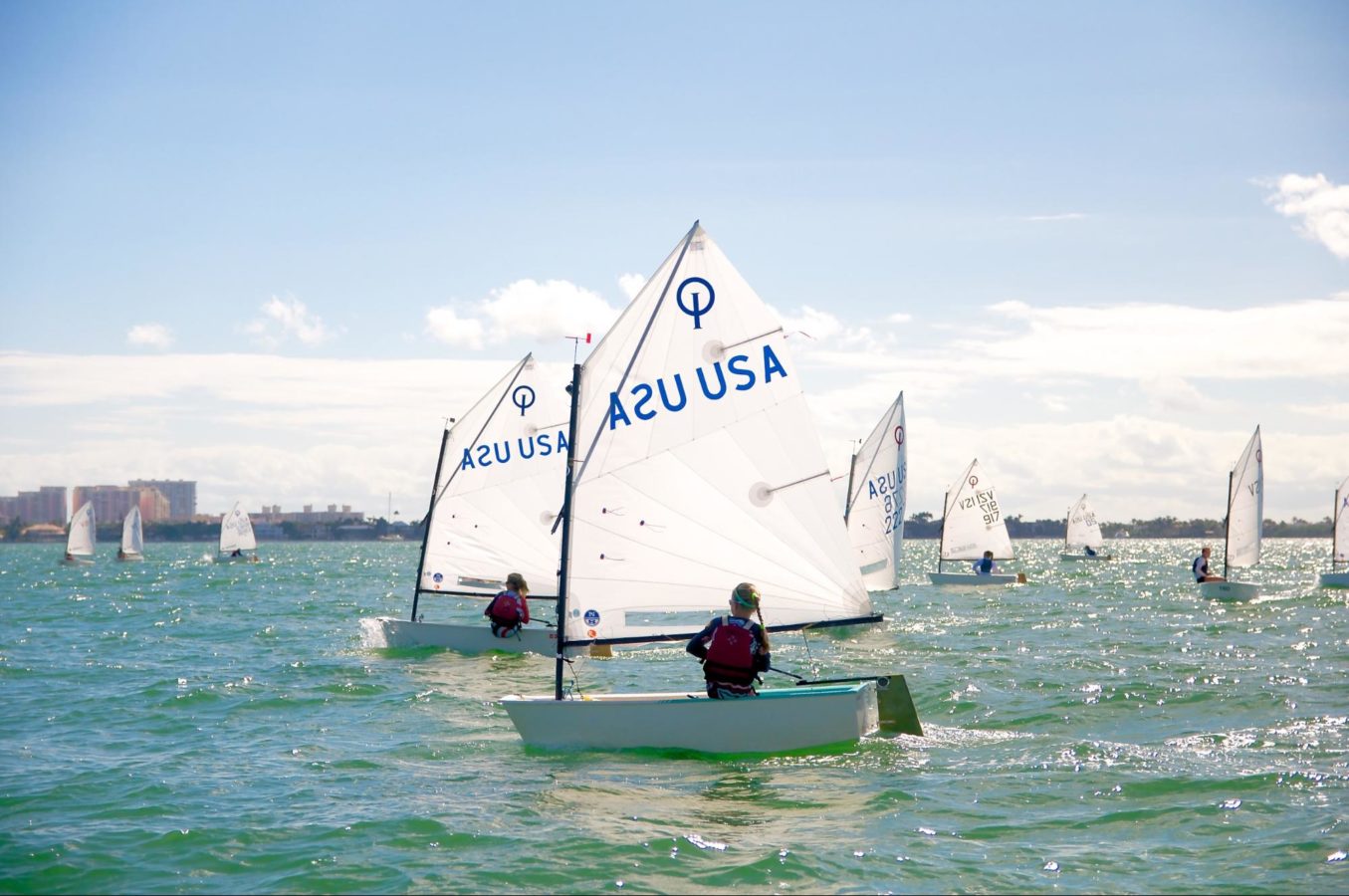
OPTIMIST R&D
Making the square-bowed Optimist go fast requires a different thought process, North Sails expert and J/22 World Champion Mike Marshall explains.
READ MORE
READ MORE

#NSVICTORYLIST: A RESULTS PACKED WEEK
#NSVICTORYLIST: A RESULTS PACKED WEEK
One Design Clients Secure Top Spots Around The Globe
📸 Zerogradinord
In a single weekend, North Sails customers and experts filled the #NSVictoryList with numerous podium finishes from around the globe. On Monday morning, the North Sails office was buzzing with regatta news, including Team Stig’s new title as Melges 20 World Champion. These victories covered a wide range of boats and conditions: everything from light Olympic dinghies to heavy keelboats, racing in 5-25 knots.
“We are and have always been committed to developing fast one design sails, backed by a team of experts dedicated to helping our customers achieve their goals.”
In Europe, the Melges 24, J/70, and 5.5M classes saw a strong start to their spring seasons, with Tonu Tonisstu, Carlo Alberini, and Peter Morton each placing on top of their respective podiums. And perhaps the Princess Sofia Trophy 470 and Finn results predict medals for Tokyo 2020? Meanwhile, several time zones to the west, Will Welles and team won both the Mexican Nationals and the J/24 North Americans. This has been a hugely successful week for our customers, and we were overwhelmed and humbled as we pulled this story together.
“Seeing so many results packed into a single weekend fuels the North Sails team to continually advance and make faster sails,” commented Tim Healy, President of North Sails One Design. “Sailmaking has evolved with new technology, new sail cloth, new classes, yet the values Lowell North laid down when building North Sails still ring true today. We are and have always been committed to developing fast one design sails, backed by a team of experts dedicated to helping our customers achieve their goals.”
A huge congratulations to our clients for such incredible results. Seeing you succeed is what this is all about. No matter what class you sail, you can trust in the proven success of North products and support to improve your results. Congratulations to all!
READ MORE
READ MORE
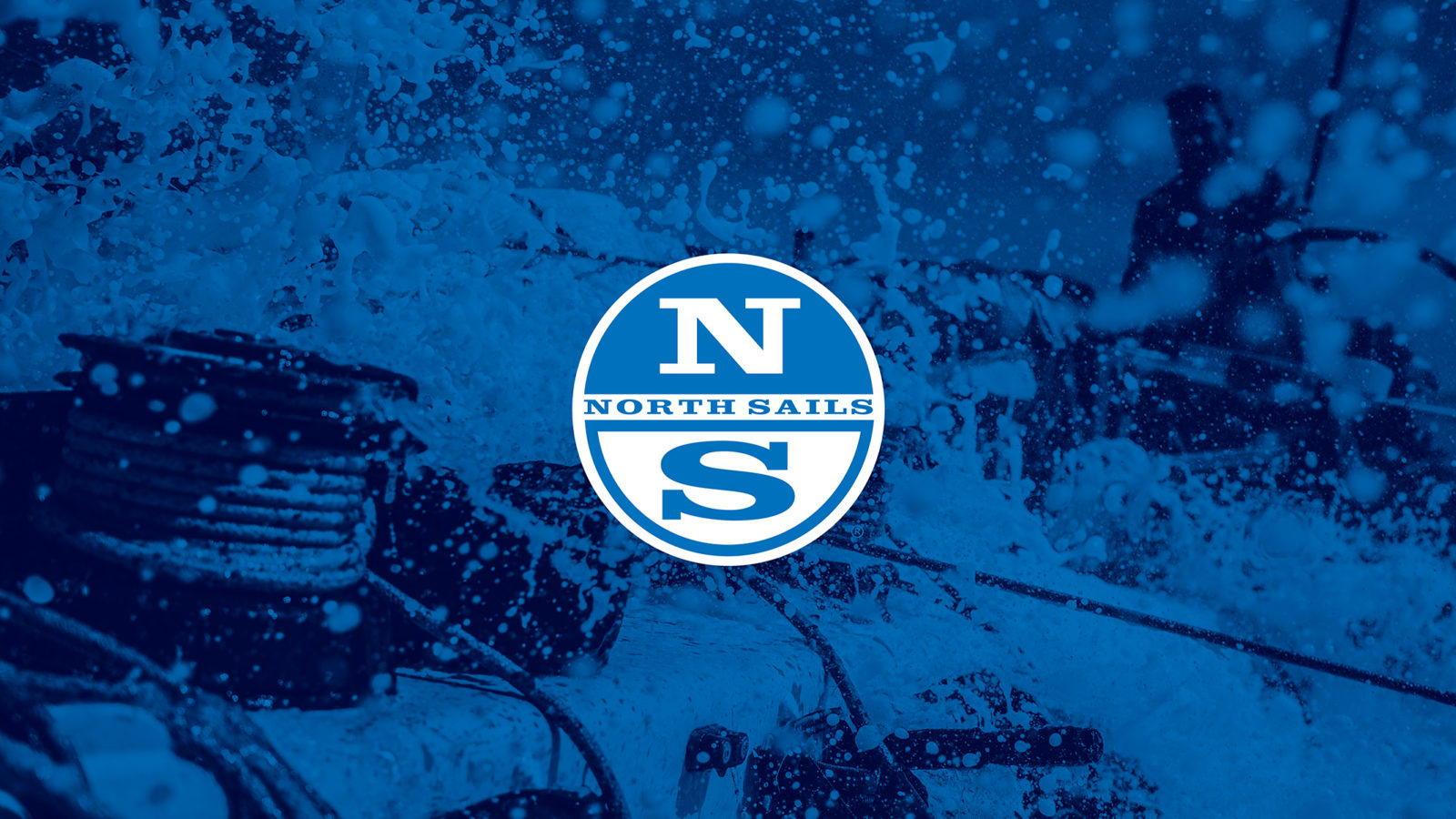
CATCH YOU ON THE WATER
CATCH YOU ON THE WATER THIS SUMMER 2019
We'll Be There. Will You?
Our North Sails Toronto crew will be on the water and walking the docks at the following events this season. Look for our team in their trusty North Sails cap and gear. Don't hesitate to ask us questions about tuning, rigging, and sails. We are here to help and we are looking forward to seeing you.
READ MORE
READ MORE
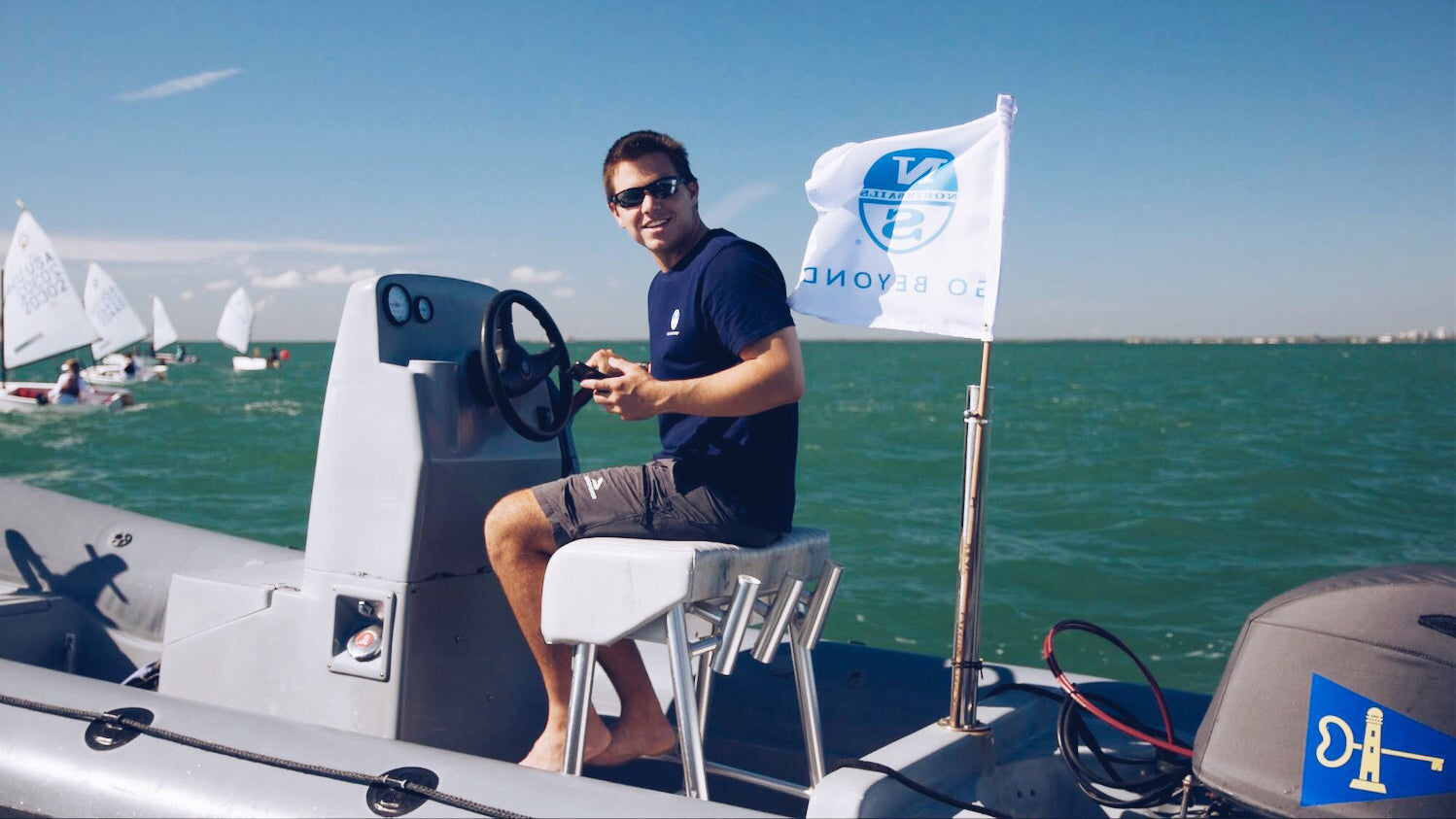
MIKE MARSHALL: WORLD CHAMPION & SAIL DESIGNER
MIKE MARSHALL: WORLD CHAMPION & SAIL DESIGNER
Looking Towards A New Challenge
Design expert Mike Marshall joined North Sails in 2013 because he wanted to combine sailing with working in aerodynamics. “The two mesh well in designing sails,” he says. Working with the North Design Suite and learning from JB Braun was a great opportunity, and “the job stays fresh because each challenge is new and different.” After a few years commuting from his home base in Rhode Island to JB’s office in Marblehead, MA, he’s now based out of the Portsmouth loft, which has expanded to include a small design team.
Mike also coaches youth sailors, which has helped his latest design project: refining the North Sails Optimist inventory. “The coaching experience allows me to relate to the sailors to get quality feedback.” Combined with his sail design expertise, he can then interpret that feedback based on what he’s seen on the water.
© Charmaine Gittens / North Sails Leading Edge Optimist Clinic
Opti sail design is a unique challenge, he continues. “The designs are based on weight ranges and we get calls from people who say, ‘Well, what if my kid ate a big breakfast sandwich?’ Really, the important thing is that the sail works and that the sailor can use the same shape sail for a significant amount of time.”
When he looked at existing designs, Mike realized that sprit tension is the biggest driver of sail shape. “Most coaches just tell their sailors, ‘make the wrinkles go away,’ but there’s a lot more to it than that.” The new design is radial in the clew, which makes it possible to adjust sprit tension to a wide range of conditions. “I think of it as a halyard; more tension closes the upper leech. Closing the leech when you are hiking and not overpowered—that’s really powerful. Yes, you can get rid of the wrinkle by pulling more tension, but removing the wrinkle is not really what you’re trying to achieve.”
“The job stays fresh because each challenge is new and different.”
Mike’s own sailing currently focuses on world-level one-design racing, mostly in small keelboats. He recently won the J/22 Midwinters, and in 2016 won the J/22 World Championship. He’s also done well in the J/24, J/70, and VX-One. Making keelboats perform definitely helps his design work, Mike says. “In both design and racing, the details are really important, but I try not to get too caught up in the small stuff and focus on doing the big things well.”
As for hobbies, Mike laughs at that question. “Sailing?” he quips, before adding that “kiteboarding and diving are definitely hobbies, not that I get to do them that much these days.”
© Charmaine Gittens / North Sails Leading Edge Optimist Clinic
READ MORE
READ MORE
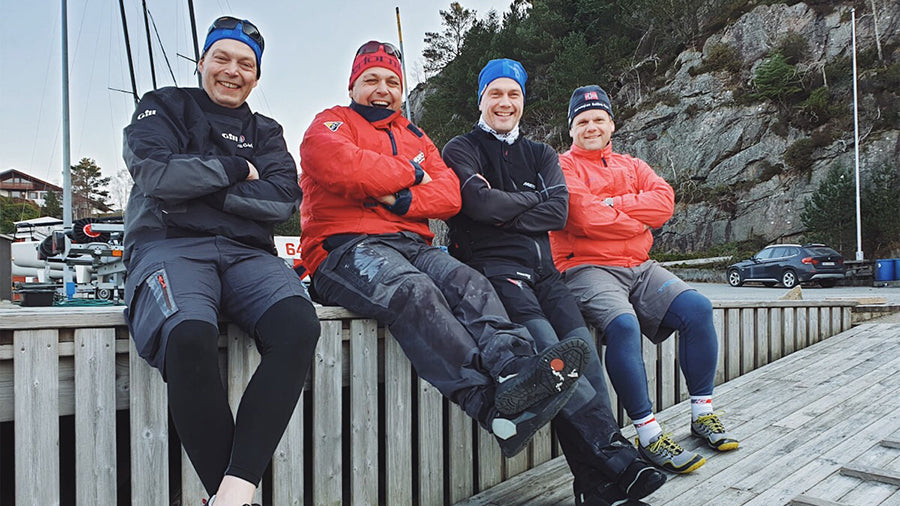
MELGES 24 SPEEDCAMP IN ASCOY
MELGES 24 SPEEDCAMP IN ASCOY
Maurice "Prof" O'Connell delivered his high-energy "Speedcamp" to the Norwegian class.
Melges 24 Class President Jens Altern Wathne (L) and his Party Girl team in Askoy YC
2016 Melges 24 World Champion Maurice "Prof" O'Connell from North Sails Ireland was in Bergen, Norway recently to deliver his high-energy "Speedcamp" to the Norwegian class.
Sailors from all over Norway travelled to Askoy YC which is the venue for the 2019 Norwegian Nationals in August. Prof delivered intensive boathandling exercises and short race sessions afloat. Ashore some entertaining talks on starting tactics, rules and rig tune were had!
https://www.youtube.com/watch?v=ePjw7XJlCxs&feature=youtu.be
READ MORE
READ MORE
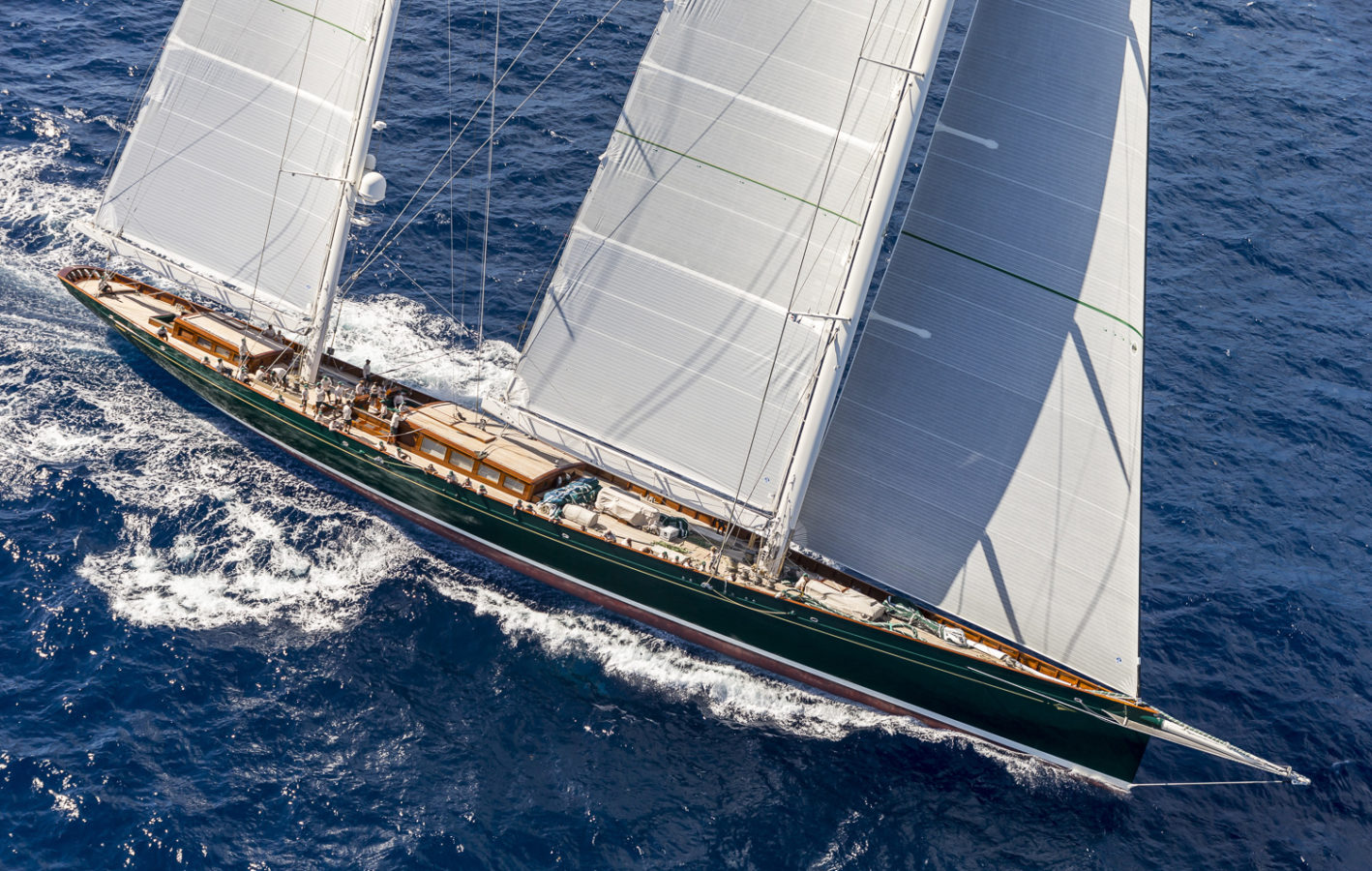
HETAIROS GAINS PERFORMANCE WITH NEW SAILS
HETAIROS GAINS PERFORMANCE BOOST WITH NEW SAILS
Perfect Set Up From The Start in St Barths
📸 Carlo Borlenghi
The 218-foot ketch Hetairos is a longtime client of North Sails and was an early adopter of 3Di sails within the superyacht crowd. Their recent success and final-day push in securing Overall Winner at the St Barths Bucket is a testament to great teamwork, both onboard and with their sailmaker.
“Hetairos has a long-standing relationship with North Sails and is very happy with the sail performance that we have onboard,” explained Captain Graham Newton. “The main and mizzen have been halfway around the world and seen plenty of action, yet the shape still looks like it did on day one. We sailed with a new North race blade and J4 in St Barths. They set up perfectly right out of the bags. The performance increase was clear to see, and no doubt helped us in claiming a hard-fought win in a very competitive class.”
Though familiar with stories of Hetairos’s sailing adventures, both racing and cruising this was North Sails President Ken Read’s first time sailing on the boat. He was quick to note a few points upon hitting the dock. “I was amazed at the sheer size and power of this boat. And with all their around the world cruising stories, I was surprised by how agile she was while racing. The race crew and permanent onboard crew has really dialed in that boat and sails Hetairos extremely efficiently.”
“We sailed with a new North race blade and J4 in St Barths. They set up perfectly right out of the bags. The performance increase was clear to see and no doubt helped us in claiming a hard-fought win in a very competitive class.”
Read was onboard Hetairos as a guest for the practice day and Race 1 of the Bucket weekend. “Being an observer is a new experience for me, and it allowed me the opportunity to take a really good look and evaluate the sail plan North has developed with the team,” explained Read. “I really want to make sure that the North 3Di sails are living up to our lofty promises, and I’m thrilled to say yes. A lot of the sails being used in the Bucket have sailed around the World and experienced extreme Southern Ocean conditions. I stand in awe of how the team pushed the boat, and by our company’s capabilities and the sails that we make.”
📸 Ryan Borne
📸 Carlo Borlenghi
📸 Carlo Borlenghi
READ MORE
READ MORE

FLYING SCOT MIDWINTERS - WINNING IN THE CHALLENGERS DIVISION
FLYING SCOT MIDWINTERS
Winning In The Challengers Division
Karen Jones and Chuck Tanner, Challengers champions. © Jim Faugust
When Chuck Tanner found himself without a skipper for the Flying Scot Midwinters he connected with local Fleet 36 captain Karen Jones and began training with a modest goal of “top 5 finishes” and having fun on their home waters in Sarasota Bay. Now, after winning 6 of 8 races and dominating the fleet with boat speed and solid teamwork, Karen and Chuck share some of their secrets that made them the 2019 Midwinter Challenger Division Champions!
Karen and Chuck, first off congratulations on your performance at the Midwinters in the Challenger Division. You had an incredibly consistent performance throughout the week through a very wide range of conditions. What were the keys to being able to adapt to the different conditions and be so successful in all of them?
Thanks! First off the North Sails RHC main, Snug Rig Jib and BR-1 spinnaker were fast! They had been used a bit but they really hold their original designed shape (not stretched and worn) really well and these designs really set up well for our team weight (low 300#s) for the range over three gorgeous days. In addition to knowing we had the fastest sails, we also had the advantage of familiar waters and winds. In the light stuff Karen kept the boat punching through chop left over from earlier higher winds and from motor boats. In the races where we were overpowered we also kept the boat moving through the water using vang and cunningham to keep us more than competitive with the heavier teams. If our crew weight was in the low 400#s we might ask Zeke about using the standard AP Mainsail, but the newer Norths really have a wide wind range for more people.
Clearly you were going FAST. What tips would you give to fellow class members that can help them get prepared to have top notch boat speed throughout a wide range of conditions?
We all say that old Scots stay competitive with new Scots as long as you have a decent suit of sails. In my experience, the Norths have always had a longer life than most other makers. Jibs and spinnakers take a rougher beating so you might get a year less out of them than you do the main. Along with recent sails, I think our boat set-up was similar to what the current competitive boats have, and the lines and blocks were all in good repair. You can’t fight your boat, sails, and gear and at the same time expect to stay competitive.
We all say that old Scots stay competitive with new Scots as long as you have a decent suit of sails. In my experience, the Norths have always had a longer life than most other makers.
Jeff and Amy Linton, Championship winners. © Jim Faugust
What did the team focus on as far as pre-race “homework?” Did you have a routine before every race?
We were lucky that David Ames (ed: David, with PJ Buhler were the Championship Division runner-ups with their brand new North Sails!) took time to help us all over several weekends. He wants us to develop the habit of checking weather reports beforehand, watching the wind as we sail to the course area, note the lifts and headers, and possible persistent direction changes, on both tacks. Where are the areas of pressure? How do they move across the course? He wants us to check for which end is favored, at both ends, and perhaps teaming with a second boat if possible. He wants us to get a line sight when that pin finally gets established. All these small things added up to helping us keep our focus each race.
What was your communication on the boat like? How did you divvy up the roles in terms of boat speed and tactics/strategy?
Because of the close proximity of so many boats I recall Karen asked me not to chatter too much in those last few minutes before he start! The result was mostly fine starts that gave us the freedom to hold our lane and go pretty fast. We were able to shed some of the boats quickly, though in the Champ Fleet the luxury of dusting the boats around us is just not a possibility. Along with nice starts, Karen concentrated on speed and height very successfully, and that allowed me to focus on tactics and positioning and choose when we would tack and gybe and where to go! Also, we worked hard on sail trim and mainsheet and vang adjustment was constant and sail trim was a joint effort.
The Challenger fleet has the advantage of being able to watch the Championship fleet start first. Did you use the Championship fleet as a tell tale for what might happen in your races?
Watching the Champ Fleet on the starting line, on the weather leg, and downwind is invaluable and is also one of the most enjoyable things about the big regattas. It is a great tip for Challenger teams to use to improve their performance and results. It has a huge effect on our plans and choices throughout each race.
© Jim Faugust
What was your general strategy on the starting line?
Our plan was to set up so that we had some room ahead and to port to accelerate into through the seconds before and after the gun. Karen’s success here really helped us to have freedom and choices up the first weather leg.
We noted how the top of the Champ Fleet can, in light air, induce heel to leeward and really keep charging downwind. … this downwind “gear changing” may be the most difficult part of Scot racing to master.
We did a lot of sailing with varying wind velocities (lots of puffs and lulls). How did you change gears with sail trim, center board trim (downwind), and body positioning throughout the changing velocities?
We were always quick to ease vang and sheets, always looking for the drop in pressure. Karen was always quick to bear off and ease slightly for chop, and keep the boat feeling like it was moving freely. Karen frequently had me move into the boat to induce heel when pressure dropped. For chop I would slide aft to ‘butts together’. Downwind the board was in skeg mode for tracking over a wide range. When the wind came forward, we would lower the board to 1/3rd, for reaching and downwind we heeled the boat to weather whenever possible. We noted how the top of the Champ Fleet can, in light air, induce heel to leeward and really keep charging downwind. From our perspective, this downwind “gear changing” may be the most difficult part of Scot racing to master.
Next year you’ll have to be in the Championship Division! How will you approach the regatta differently?
The Championship Fleet is a much more intense world. It is broken into three groups – good, better, best. We would have a strong learning curve within the ‘good’ group. It takes a lot to survive the starting line. Two recent Challenger champs, Jim Leggette and Bill Vogler, preferred to stay in Challenger for 2019, perhaps for the safety and fun factor!
Any last tips for the class on how to win a regatta?
Karen is captain of Scot Fleet 36 which is very active and the fleet sails at a pretty high skill level so my first suggestion is to get on the water with your local group and sail! Next, if you have the chance to attend a Midwinters or North Americans, you should do it. Between the racing and the tips you will get from the top sailors in the class you will become a better sailor. When I lost my crew job with Ron Pletsch I didn’t know if I’d get to race. When Karen and I teamed up, our goal was to shoot for individual top-five race finishes. We had a lot of good surprises. That happened unexpectedly to local members in 2015 also, and it can happen to everyone.
Get on the water with your local group. If you have the chance to attend a Midwinters or North Americans, you should do it. You will become a better sailor.
Greg Foote, Stephen Griggs and Christy Stephens enjoying the nice breeze. © Jim Faugust
READ MORE
READ MORE
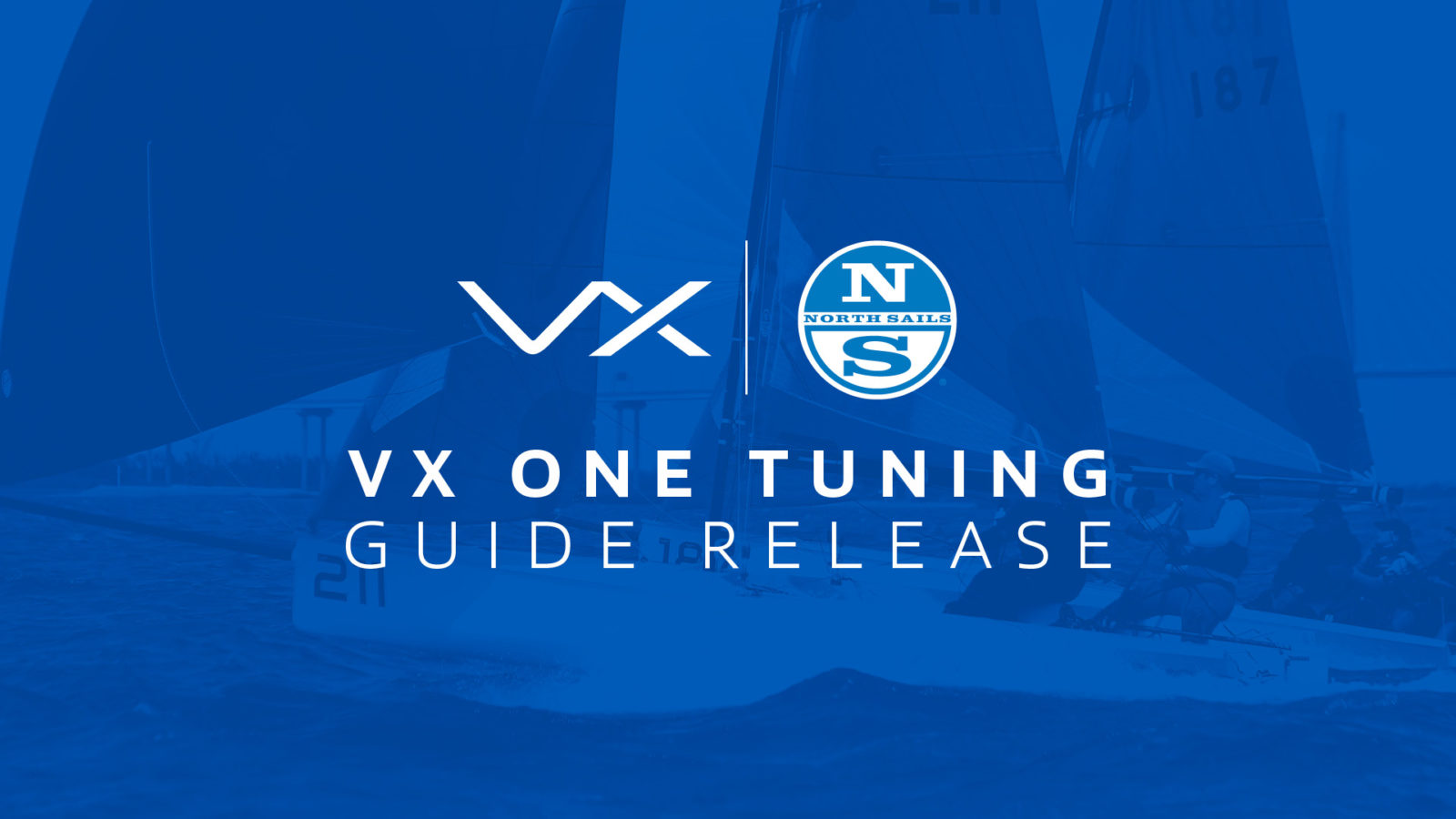
VX ONE TUNING GUIDE RELEASE
VX ONE TUNING GUIDE RELEASE
Get The Most Out Of Your VX One
North Sails is proud to release a complete Tuning Guide for the VX One class. The new guide was based on six months of tuning and practice, leading up to and including the 2018 North Americans in Charleston, South Carolina. North VX One experts John Bowden, Jackson Benvenutti, and sail designer Mike Marshall worked together to develop the guide. The base rig tensions and turns for each step have been adjusted as well to keep the mast bend better aligned with the sails. Language has been added to the guide to clarify the way that sails should be trimmed and the boat should be sailed in all conditions.
“The new base numbers in the tuning guide were the ones that our team used to win the VX North Americans in Charleston. They help to better depower the boat in heavy air and power it up in light air.” – John Bowden.
While we can’t guarantee you immediate victory on the race course by following this guide, we can assure you that you’ll be taking a big step in the right direction!
Open Tuning Guide
READ MORE
READ MORE

DONINO MAKES A GRAND DEBUT
DONINO MAKES A GRAND DEBUT
New Team Hits The Ground Running In Villasimius
📸 Mauro Melandri / Zerogradinord/ MWL
Event one of the Melges World League European Division was held last weekend in the beautiful waters of Villasimius, Italy. Wind ranged from 8-11 knots throughout the weekend. North clients finished 1,2,4,5 in the strong 14-boat fleet. Luigi Giannattasio’s Argentinian team Donino found themselves on top of the podium in their Melges World League debut.
“The team members played a key role in this victory, made up of great champions like Manu Weiller, Sebastian Col and Federico Michetti, who were the key to the team’s growth up to this level of competitiveness that puts us with great pride at the top. “
Newcomber Donino hit the ground running, finishing race with a bullet, and continuing their stride with all but one finish outside of a third place. The team was able to fend off second place Caipirnha, a known powerhouse, as well as Tavatuy, who is a two-time World Champion. Even with a 10th place finish in race four, Donino swept the fleet, winning by 12 points after the discard.
“I can only express great happiness for this result obtained on a boat that both myself and my son Pierluigi, who was on board with us and with whom I have the pleasure of sharing this success, love very much,” commented owner and skipper Luigi Giannattasio. “The team members played a key role in this victory, made up of great champions like Manu Weiller, Sebastian Col and Federico Michetti, who were the key to the team’s growth up to this level of competitiveness that puts us with great pride at the top. ”
Mainsail trimmer, Sebastian Col was also humble his team found success after their first regatta together. The team worked closely with North Sails in Italy and got a ton of support. Sebastian commented; “The service we have received from North Sails in Italy was helpful. Everyone is knowledgeable, and they know the boat. All of this has contributed to the fact that we have been able to figure out the boat faster, and can start the season with the ability to be competitive with other top teams.”
📸 Mauro Melandri / Zerogradinord / MWL
When it comes to using North Sails, Sebastian had a positive experience. “North’s products for the Melges 32 make it easy to find your groove quickly. Our sails have great shape and work well in all wind ranges. As a starting point for the season, we are pleased with the product and service we received.” Following the North Sails tuning guide and seeing how it affects the boat also made a difference for Donino. “North’s tuning guide is a good starting point. We will continue to push during practice, hoping we get faster and more comfortable in the boat,” said Sebastian.
Winning the first event of the season is a great way to start the season, but the team acknowledges that they need to keep working at it because the series is far from over, and the level of competition is still a very high. Sebastian commented; “We don’t want to be too confident after winning this first regatta. Spending the time in the boat is what we need to continue to do well in the series.”
Donino duking it out with Caipirnha. 📸 Mauro Melandri / Zerogradinord / MWL
📸 Mauro Melandri / Zerogradinord / MWL
READ MORE
READ MORE
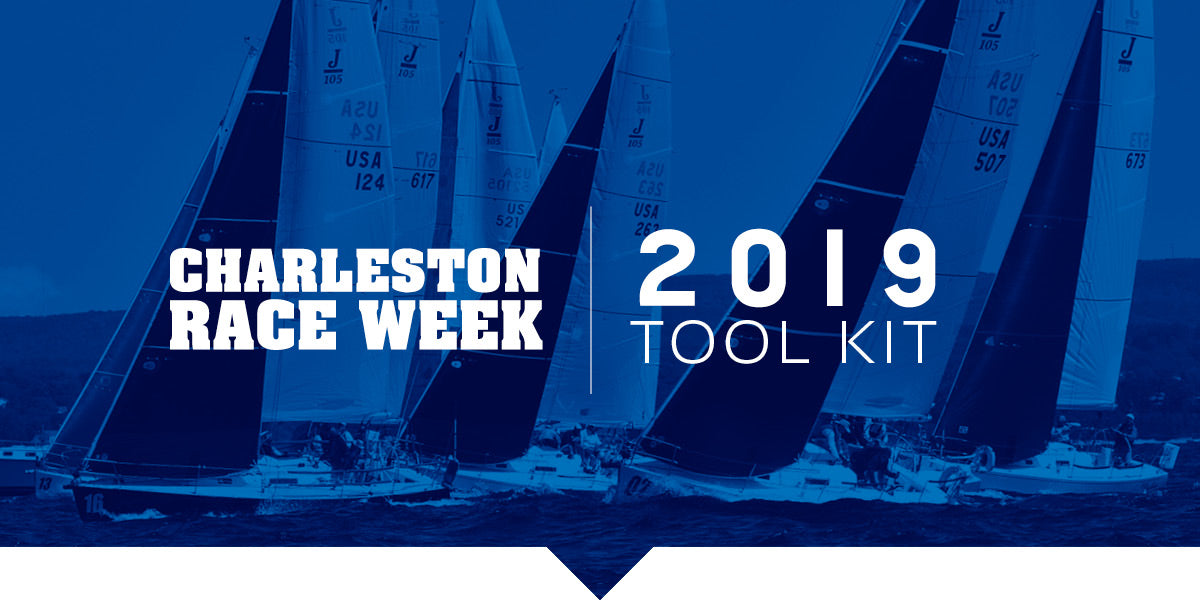
CHARLESTON RACE WEEK TOOL KIT
North Sails is never satisfied and always seeking to build sails that help our clients to win. Our victory list is here to prove it.
READ MORE
READ MORE
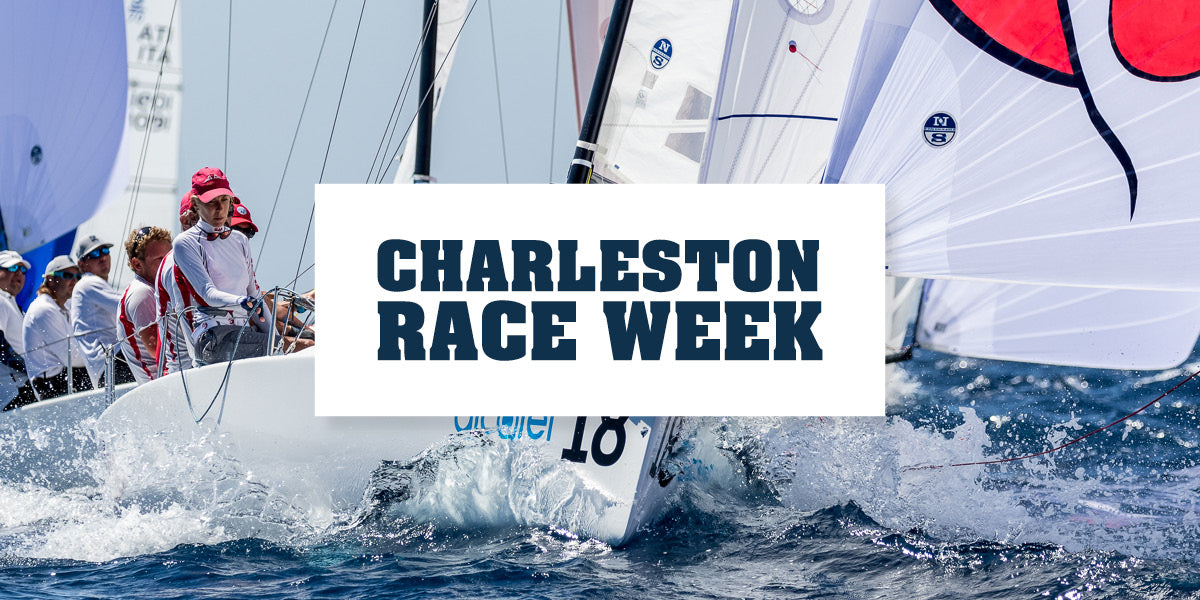
LOCAL KNOWLEDGE FOR CHARLESTON RACE WEEK
TIPS FROM OUR LOCAL EXPERTS
North Sails Charleston Team Give Us The Inside Scoop On Racing In Charleston
With the first race right around the corner, we grilled John Bowden, Rich Bowen and Ervin Grove, North Sails' local experts, on what counts and what doesn't when sailing Charleston Race Week. Here's a recap on what they told us.
What season is April in Charleston?
Winter may be over, but early spring can still bring some big fronts through town, which means chilly northerly winds. But more often, the days will be warm and draw in the southeasterly seabreeze. The bottom line? Get ready to dress for either condition. Water temperatures are in the high 60's, so if you're from the northeast, a wave in the face will feel like mid-summer.
What's the regatta set up?
Charleston Harbor is located at the confluence of three rivers - the Wando, Cooper, and Ashley - with a big island in the middle named Shutes Folly Island. Boats are parked at Patriots Point Marina (the regatta HQ, near circle 4), Carolina Yacht Club (near circle 1), and James Island Yacht Club (south of circles 1-3). Four racing areas are inside the harbor while circle 5 south and north are outside. Depending on your location and your assigned race area, it'll take 20 minutes, plus or minus, to get to the inside courses. The fleets racing outside start their first race in the harbor and sail a pursuit race out to their circle, then do the opposite at the end of the day. That minimizes the commute and congestion, and maximizes racing time.
How long are the courses?
The organizers aim to have one-mile beats on most courses and approximately 45 minutes per race. In a seabreeze, they can sometimes stretch the legs slightly. In winds from other directions, it's a challenge to keep the courses on different circles from overlapping, so they may shorten up.
What are the common wind directions?
The Charleston seabreeze typically comes in about 11am or noon from the southeast. It may start more easterly and swing to the right with a fair amount of south in it, building to 12 to 15 knots. If it's warm and the skies are cloudless in the morning, the seabreeze usually arrives sooner. If it's going to be a weak seabreeze, it may not come in until the tide changes. If a weather system comes through, the wind will often blow fairly hard for a day or two from the north-northeast with big wind shifts. The locals watch to see "which river will pay", as the wind often channels out of one river and then the other.
What about the tidal current?
Charleston has a strong tidal flow, and Bowden says the organizers schedule the event to minimize motoring with an ebb tide in the morning and a flood in the afternoon. The harbor is subject to a tidal range of 5.5 to 7 feet, so you would think it would make sense to know exactly what time the tide is going to change. However, because there are three rivers involved, the direction of the current flow varies across the harbor, and if it's been raining in the hills of North Carolina earlier in the week, the tide change could easily be off by an hour. It can also be very different from course to course and across a single racing area, particularly on circle 2 and 3.
How do you deal with unpredictable currents?
The consensus is to get to the racecourse nice and early and do your homework. Pay attention to how the signal boat is lying at anchor, sail the weather leg, and look out for crab pots. Also note your location relative to the closest river. For the rest of the day, keep watching what the current is doing as it changes. And don't be surprised to find variation in current direction on different parts of the same race circle.
What's the difference when racing offshore?
When racing the pursuit legs, in and out of the harbor, be aware of commercial traffic. You'll see containerships coming through and they're going fast. Stay clear! If you get a series of warning blasts from the ship, you will be disqualified. Watch your AIS, keep someone on the VHF, and don't hesitate to call the harbor pilots on channel 13 or 16. Have a conversation with them and let them know what you're trying to do. When they come past you , you can sail outside of the channel, fairly close to the jetties.
Top tip for visitors?
Watch what it does on the starting line and don't hit a mark and let it ruin your regatta, but don't get hung up on the current and bang the corners looking for a current advantage. The current may favor one side or the other, but when racing inshore, the wind shifts are usually more important. When you see someone winning a race by a lot during the regatta, it's usually an out-of-town boat with a sharp-eyed tactician taking advantage of a great windshift.
Off the water, any food recommendations for out-of-towners?
Charleston is great, bot for lunch and dinner, but it't busy. For sandwiches, go to Jersey Mikes, Publix, or Brown Dog Deli. Order ahead if you can. For dinner, make reservations early, or you'll have a very long wait.
What do we do if we need sail repair during the regatta?
Our North Sails loft in Charleston is ready for all your regatta repairs. Call Certified Service Manager, Ervin Grove directly at 865-789-2895 or the loft at 843-722-0823 for sail pick up and delivery information.
READ MORE
READ MORE
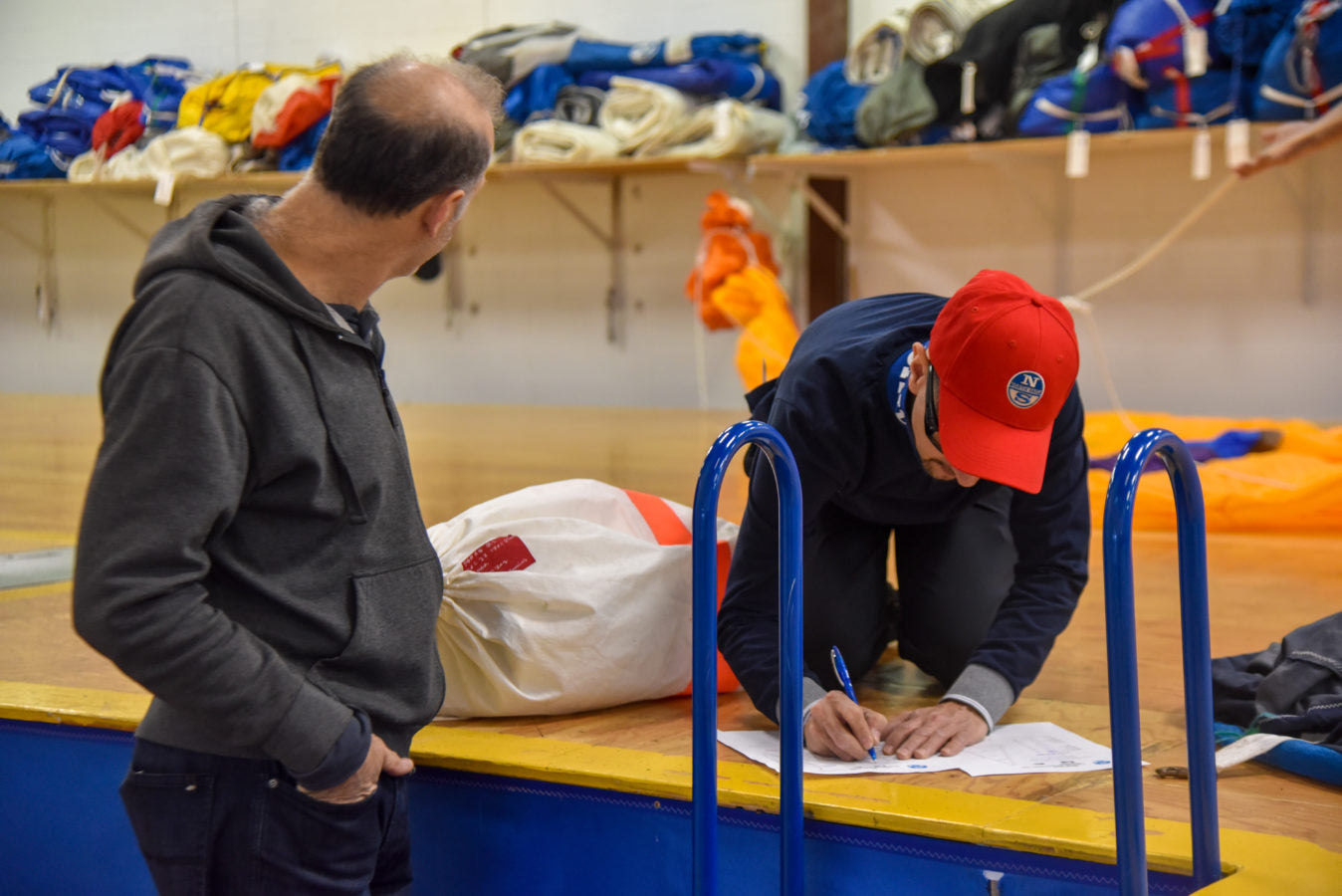
RACE READY WITH NORTH SAILS & LOOR
RACE READY WITH NORTH SAILS & LOOR
Racers Get Measured & Ready To Go For The Upcoming Sailing Season
Our team of North Sails experts - Mike Wolfs, Hugh Beaton, Kid Domiciano, Joel Caro, Louisa Sonosky and Kyann Renztelos were on-hand to help racers check another thing off their to-do list before the sailing season kicks off. Racers were able to get their sails measured and certified for PHRF or IRC racing on the Great Lakes. Our team of experts walked sailors through the measurement process, what would be involved in servicing them including a brief overview of our 10 Point Inspection and recommendations for improving sail handling. Will French, fleet captain at Lakeshore Yacht Club and co-chair of LSYC Raft Party Race, stopped by to have his Olsen 911SE mainsail measured for racing while fellow LSYC/LOOR member Sandra Chave and Tri Pham stopped by for measurement for their Hanse 342 sails. Missed the event? Not to worry. Bring your sails in anytime and our service team can help get your sails measured & certified, both for PHRF and IRC ratings. To learn more about LOOR’s yacht racing/handicap requirements for racing, please see here for more detail. Learn more about North Sails Certified Service and how it can help your sailing experience. Our Toronto team thanks racers for coming out! Interested in sails? Have questions about our products? Contact us today.
READ MORE
READ MORE
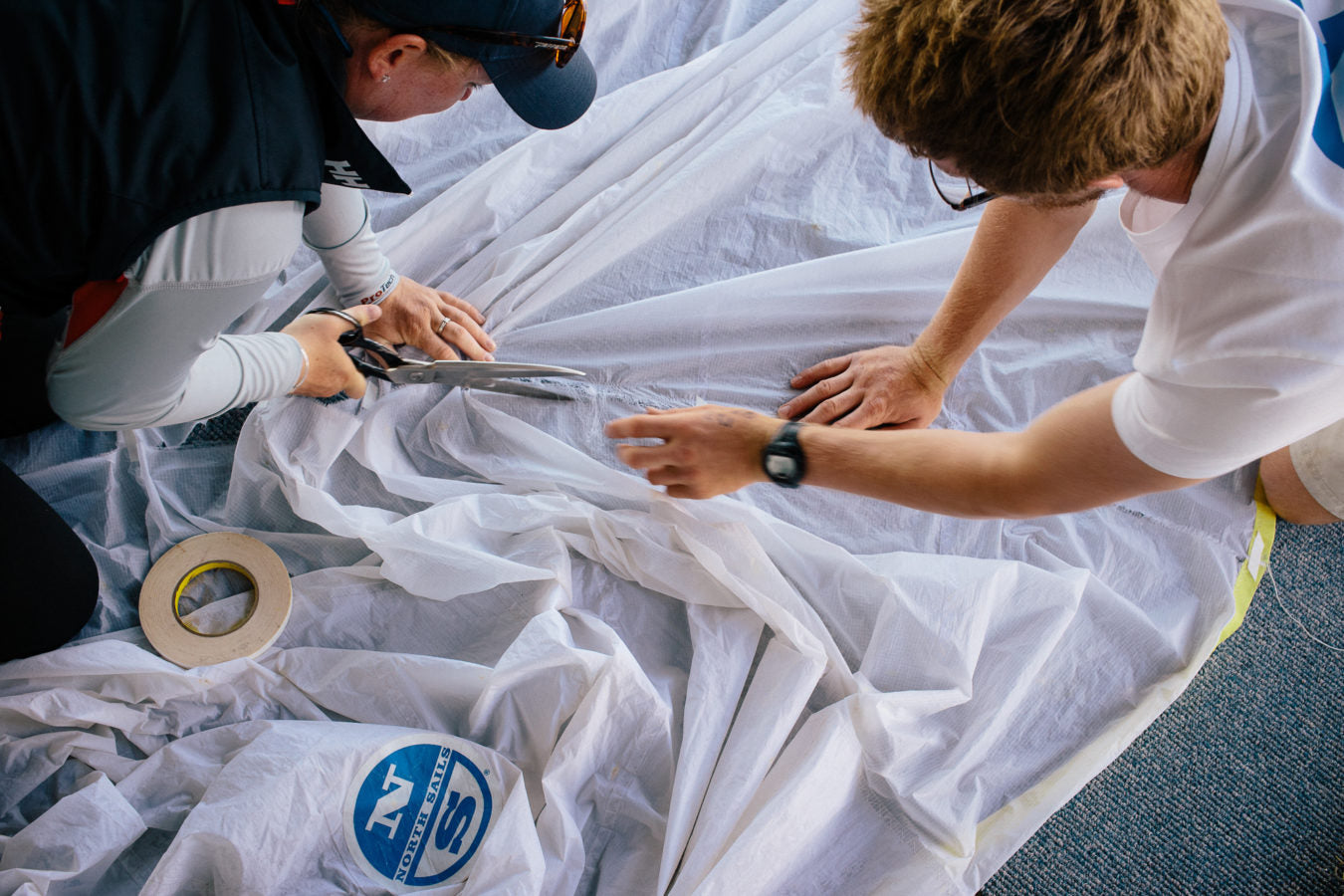
FIVE WAYS TO GET THE MOST FROM YOUR SAILMAKER
FIVE WAYS TO GET THE MOST FROM YOUR SAILMAKER
We Are Here For You!
North Sails Toronto provides 5 tips on how to optimize your local sailmaker to get the most from your time on the water.
Building Your Sail Inventory
We get it - deciding which sail to go with or what to add to your inventory next is a hard decision and one that is not always easy. Our team of North Sails experts are here to help you review your options based upon what you have, what kind of sailing you want to do, and where you want to go sailing.
More Than Just Sails
Getting your new sails is great and exciting however we can also help you with the hardware options that can help you optimize your sails. Items such as furlers, Tides tracks, or Antel cars are items your local North Sails expert can assist you with. This hardware also plays into fine-tuning your sail inventory and boat handling.
Continued Support
From the beginning of your interaction with North Sails, albeit service or new purchase, our team is here to help you. If you have questions about your sail, old or new, and want some insight or advice; our local team is more than happy to come sailing with with you to ensure you’re using your sails to their full potential.
Going beyond on water assistance, we're here to provide continued support after you purchase your sails. Our design team is available - even during the purchase process - to answer any questions you may have and provide sail shape analysis of your sails.
Regatta Repair
Overnight repair? No sweat. Utilize the team for overnight regatta repair if something happens on the water. We want to get you back on the water as fast as you want to be back on it!
Extend The Life Of Your Sails
When the season is over, bring your sails or have bend off service performed and bring the sails in for a check-up. North Sails experts and our Certified Service experts are more than happy to look at your sails with you, provide feedback, and help you extend the life of your sails. We can help you catch small problems before they become big ones.
READ MORE
READ MORE
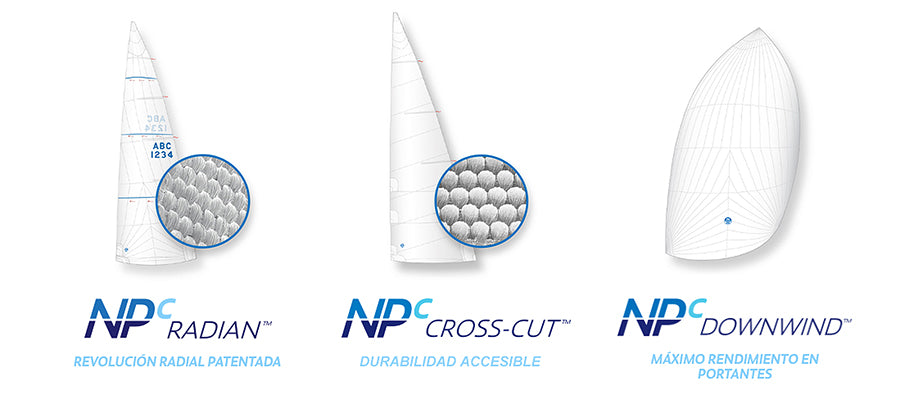
Consejo North Sails
CONSEJO NORTH SAILS
¿Qué significa NPC?
Acrónimo de North Panel Cloth, son las siglas con las que en North Sails denominamos a la familia de velas fabricadas con tejido poliéster. Nuestra firma cuenta con una larga tradición en fabricación de velas de dacron desde la introducción de esta fibra para la fabricación de velas en 1950. Con el tiempo hemos perfeccionado su diseño, manufactura y acabado, alcanzando un nivel de perfección inédito que aplicamos en tres gamas: NPC Cross-Cut (la más polivalente, fabricada con tejido NorDac Fill), NPC Radian (menor estiramiento y mayor rendimiento que cualquier otra lona de poliéster no laminado) y NPC Downwind (para un máximo rendimiento en portantes).
Para más información, contacta con tu agente North Sails, visita www.northsails.com/sailing/es/lofts o escríbenos a info@es.northsails.com
READ MORE
READ MORE
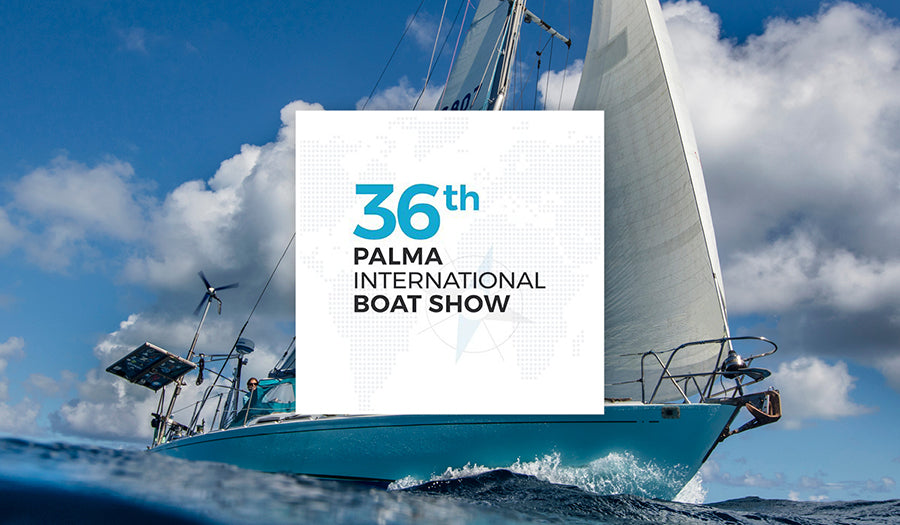
TE ESPERAMOS EN EL SALÓN DE PALMA
TE ESPERAMOS EN EL SALÓN DE PALMA
North Sails continúa apoyando los principales salones náuticos celebrados en España.
Entre el 27 de abril y el 1 de mayo participaremos en el 36 Palma International Boat Show con un stand en el que expondremos nuestra gama de velas, incluyendo la nueva Helix con tecnología de reparto de cargas, la interpretación de North Sails para velas de proa sin cabo antitorsión. Te esperamos en el Moll Vell de Palma.
READ MORE
READ MORE
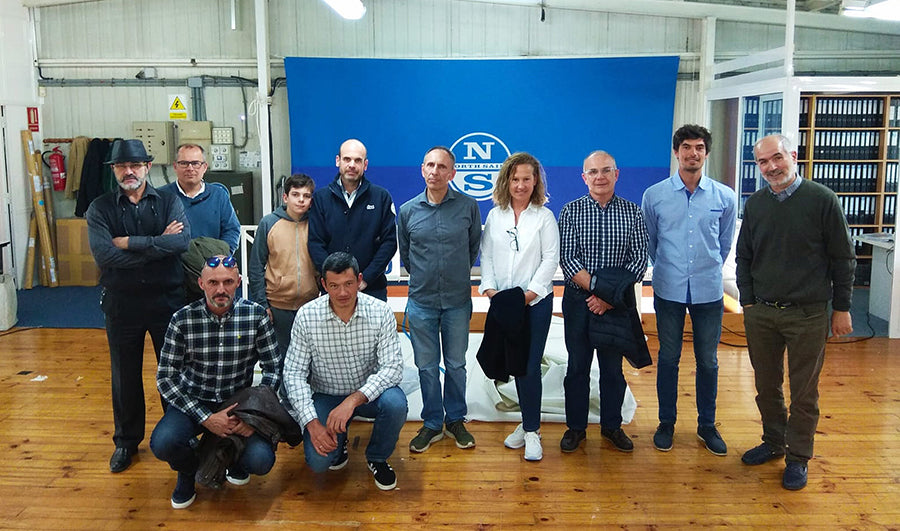
VISITA A CUNTIS
VISITA A CUNTIS
Participantes de la 5ª Regata Interclubes de la Ría de Pontevedra se acercaron hasta la velería de North Sails en Cuntis.
Participantes de la 5ª Regata Interclubes de la Ría de Pontevedra se acercaron hasta la velería de North Sails en Cuntis para descubrir de mano de nuestro diseñador Fernando Pazó cómo trabajan nuestros expertos veleros en la fabricación y reparación de velas.
Esta iniciativa formó parte del programa del ya tradicional clinic North Sails impartido en esta ocasión por Jorge Martínez Doreste, y que se celebró en el Real Club Náutico de Sanxenxo el 23 de marzo.
READ MORE
READ MORE